Matador Network's Blog, page 255
September 11, 2023
These National Parks Come Alive at Night With Star Parties and Junior Astronomy Programs
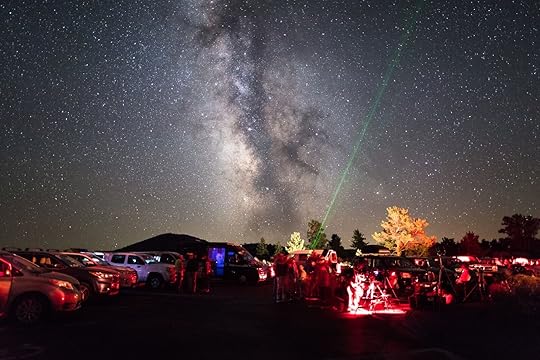
A visit to one of our national parks is a magic experience. These precious and otherworldly landscapes change dramatically through the seasons and at differing times of the day and night. When the sun goes down, and the warm sky turns dark, these protected areas turn into a new world and offer us some of the most awe-inspiring stargazing opportunities on the planet. Many of the national parks in the US are far removed from the light pollution of towns and cities and have excellent air clarity. The standard is so high, that some have been awarded International Dark Sky locations. The work the National Park Service has done to protect the night environment is astronomical and throughout the year, they celebrate this through a robust calendar of events. From star parties, ranger-led astronomy talks, guided stargazing tours, Junior Ranger programs, to festivals, there’s a lot to get excited about. For information on every national park with night time activities, check out the National Park Service’s timetable. Whether you’re a beginner sky gazer or an enthusiast, there’s something for all. Here are some of the best national parks for stargazing with organized events.
If visiting outside of one of the listed dates, there’s a few handy tips the National Park Service offer for those who would like to stargaze on their own.
Do your research:Timing is key. The moon phase can dramatically affect your stargazing experience. Its brightness can impede your ability to see the stars, so viewing on a new moon is recommended. Also check the weather before you venture out, a cloudless night crucial. Wait an hour or two after sunset too. This is important to make sure there is no residual light. It’s also worth considering camping over night. Many of the national parks mentioned here have excellent camping facilities.
As a general rule of thumb, the period from September through March is the best time for stargazing in many national parks. This can differ from park to park, so it’s worth checking the National Park Service page for the specific location. Also keep in mind the calendar of events on offer. They will be scheduled at the optimum time for stargazing.
Allow time for your eyes to adjust:When you’re stargazing, it’s important to allow time for your eyes to adjust to the darkness because it can significantly enhance your ability to see faint objects in the night sky.
This is known as dark adaptation. The process can take anywhere from 20 to 30 minutes. During this period, your eyes become more sensitive to light, and you’ll start to see fainter stars and other celestial objects that you wouldn’t be able to see immediately after moving from a bright environment to a dark one.
Pack a red light:A red light helps to preserve your night vision. Unlike white light, which can be harsh and cause your pupils to constrict, reducing your ability to see in the dark, red light is less intense and does not have this effect. This means you can use a red light to navigate or read charts without compromising your ability to see the stars.
They also have a lower impact on wildlife. Many animals are sensitive to white light, which can disrupt their behavior and biological processes. It’s also respectful to other stargazers and the National Park Service who have worked hard to protect the precious dark skies.
Use a stargazing app or chart:If you are stargazing without a guide, apps and charts will help you navigate the night sky. They can provide detailed information about the objects you’re observing, including their names, distances from earth, history, and mythology associated with them. Many stargazing apps have a night mode that uses red light to preserve your night vision.
Acadia National Park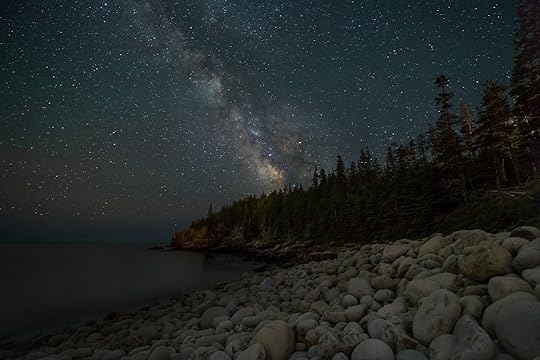
Photo: Harry Collins Photography/Shutterstock
Acadia is one of the best dark sky zones in New England, if not the Eastern Seaboard. For its proximity to Portland, Boston, and New York, it’s remarkable how luminous the Milky Way presents. If you ask locals, one of the best popular places for stargazing is Cadillac Mountain. Vehicle access to the summit is limited to a choice number of months per year and typically between December and April the road is closed due to winter conditions. When the route is open, overnight parking is prohibited, and it closes at 10:00 PM.
Another great place is Sand Beach. Here you can do your own independent viewing or join park rangers and learn about Acadia’s night sky. This free event runs between August and September every Sunday and Thursday at 8:30 PM. It’s recommended to dress warmly and bring something comfortable to lie on.
The best spots in Acadia National Park for stargazingCadillac MountainJordan PondOcean PathSand BeachSchoodic PeninsulaSeawallArches National Park
Stargazing at Acadia? Check out Matador’s Acadia National Park accommodations guides:
End an Action-Packed Day at Acadia National Park at One of These Gorgeous New England Luxury Hotels These Airbnbs in Acadia National Park Surround You With Natural Beauty
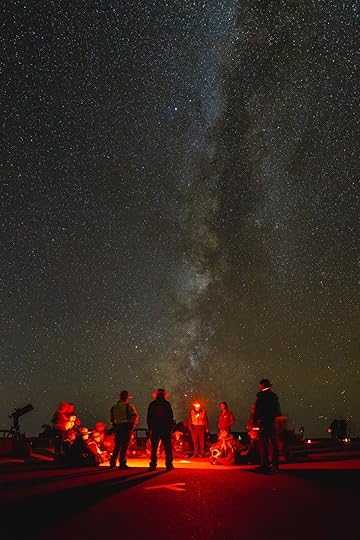
Photo: William Pedro/NPS Photo
Arches National Park preserves some of the darkest night sky in the Southwest. Even without the visual aids, you’ll be able to witness a wealth of stars from just about anywhere in the park. If conditions are favorable, you may even be able to view the rings of Saturn through binoculars. It’s recommended to opt for areas away from the main park road and north from Moab. The further you are from vehicle and city light pollution, the better your experience will be.
The National Park Service kindly asks visitors to use red lights and to keep beams directed at the ground and away from arches and other stone formations.
They organized various programs within the park, from guided night tours to self-guided explorations. Occasionally, rangers lead formal educational programs during the summer months. These typically run between one to three hours and locations vary.
The best spots in Arches National Park for stargazingBalanced Rock Picnic AreaGarden of Eden ViewpointPanorama PointThe Windows SectionBadlands National Park
Stargazing at Arches? Check out Matador’s Arches National Park accommodations guides:
Sleep Right Outside Arches National Park at These Desert-Themed Airbnbs These 7 Hotels Near Arches National Park Make the Perfect Base Camp for an Epic Outdoor Adventure

Photo: Jeff Zylland/NPS Photo
The South Dakota national park is often overlooked. It should not be. Badlands is actually one of the top parks in the US for stargazing. On any given night, you can see roughly 7,500 stars. There’s a number of reasons for this, but mainly it’s due to its super remote location away from urban light pollution. This means staying overnight in or near park gates is a must. In fact, you can camp the backcountry if you want an exclusive experience away from crowds.
It’s also one of the top parks for organized experiences. Every night in the spring, summer, and fall, the park rangers hold Night Sky Viewings. “At these viewings, park rangers and volunteers use powerful laser pointers to show and describe different constellations, planets, and other objects in the night sky,” remarks the National Park Service. You’ll also have the opportunity to learn how to use their 11-inch Celestron telescopes. This is awesome for those who are interested in astronomy, but are not quite ready to invest in high-spec gear. Badlands also hosts an annual AstroFest which brings together space science professionals, amateur astronomers, and avid stargazers to celebrate the dark sky. The event runs for three days. Dates and the festival schedule vary and can be confirmed annually at the Ben Reifel Visitor Center.
The best spots in Badlands National Park for stargazingBadlands Loop RoadBig Badlands OverlookPanorama PointPinnacles OverlookBryce Canyon National Park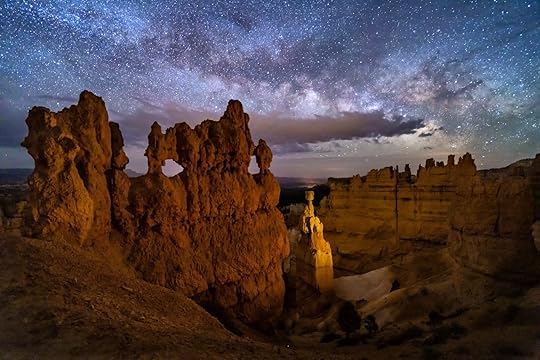
Photo: Colin D. Young/Shutterstock
If you’re looking for an educational experience, the team of astronomy rangers and volunteers at Bryce Canyon outshine a lot of other park organizations in the US. Covering subjects such as the life cycles of stars, space exploration missions, the stories written in the constellations, there are around 100 astronomy programs in the park per year. One of the most popular is the one to two mile full moon hikes. There are two routes available. The more arduous descends into the canyon and the other is less strenuous, taking guests along the rim of the plateau. Bryce Canyon has also been in partnership with Utah’s largest group of amateur astronomers, Salt Lake Astronomical Society (SLAS) who kindly offer their personal telescopes during the annual Astronomy Festival. The event is held over four days and includes both daytime and evening programs.
The best spots in Bryce Canyon National Park for stargazingFarview PointInspiration Point, Sunset Point, or Sunrise PointsMossy Cave TrailNatural Bridge OverlookCanyonlands
Stargazing at Bryce Canyon? Check out Matador’s Bryce Canyon National Park accommodations guides:
Sleep Over the Desert at These Bryce Canyon National Park Airbnbs
Sleep Under a Blanket of Stars at These Hotels Minutes From Bryce Canyon National Park
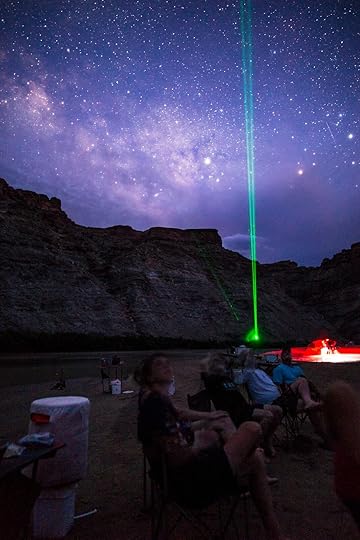
Photo: Bettymaya Foott/NPS Photo
Despite being the largest of Utah’s Mighty Five, Canyonlands is often overlooked. And that’s great news for stargazers. It was awarded full status as an International Dark Sky Park in 2015, which was no huge surprise as the dark sky in this area of Utah is world class. The park does not work alone to protect and educate others about the importance of the night. During spring and fall, rangers often team up with those from Arches National Park and Dead Horse Point State Park and lead visitors through an evening program of stargazing and telescope viewing. There are also events at The Needles and The Maze throughout the year.
The best spots in Canyonlands National Park for stargazingBig Spring Canyon OverlookGrand View OverlookGreen River OverlookMesa ArchWooden Shoe Arch OverlookGlacier National Park
Stargazing at Canyonlands? Check out Matador’s Canyonlands National Park accommodations guides:
These Hotels Near Canyonlands Position You at the Doorstep of Utah’s Largest National Park
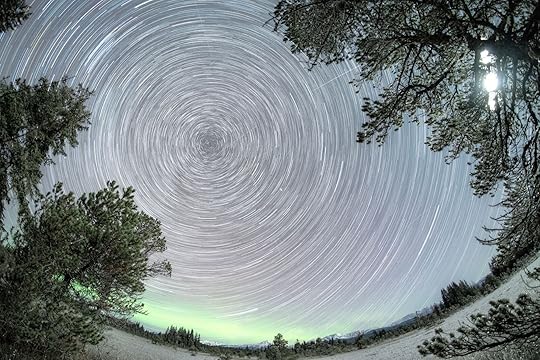
Photo: S. Tevebaugh/NPS Photo
Glacier National Park and its neighboring park, Waterton Lakes National Park of Canada, are both certified International Dark Sky Parks. Glacier, located in the northwest corner of Montana, offers visitors a packed calendar of astronomy events and if you get your timing right, you might be able to witness the northern lights.
In collaboration with the Glacier National Park Conservancy, the International Dark Sky Association, the NPS Night Sky Program, and the Big Sky Astronomy Club, there’s a superb range of night-time events and daytime viewing of the sun. After dark programs are typically held at St. Mary and Apgar and throughout the season, keep an eye out for the Logan Pass Star Parties. To get a taste of what to expect, check out the observatory’s Dusty Star Observatory Sky Cam’s live feed.
The best spots in Glacier National Park for stargazingBowman and Kintla LakesLake McDonaldLogan PassSt. Mary ObservatoryGrand Canyon National Park
Stargazing at Glacier? Check out Matador’s Glacier National Park accommodations guides:
10 of the Best Hotels Near Glacier National Park in 2023 Take a Fun Escape Into Nature at These Airbnbs Near Glacier National Park
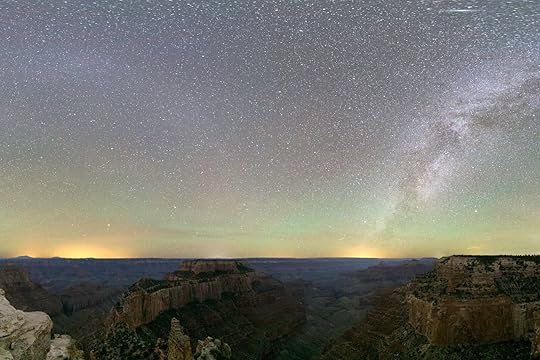
Photo: Jeremy M. White/NPS Photo
The Grand Canyon is undoubtedly one of the world’s most famous landmarks. Formed by a geologic erosion in the desert, showcasing different rock layers, the canyon’s sheer size at 277 miles, up to 18 miles in width and depths of a mile, is staggering. But its night sky is equally impressive. Due to the park’s hard work to reduce its light pollution, you can star gaze from practically anywhere in the. That said, there’s a great range of organzied ranger-led activities.
You might want to plan a visit around the annual Grand Canyon Star Party. Attendance is free if you have paid for a ticket to the park. It begins at sunset, but the show heightens around 9:00 PM. During the event, you can join constellation talks, night sky photography workshops, and presentations at the Bright Angel Point Amphitheater. If you’re visiting outside of the festival, don’t fear. Throughout the viewing season there’s free astronomy programs such as watching the full moon rise over the Canyon, teachings about the mythology, science, and history of the constellations, and educational talks about the indigenous tribes of Grand Canyon and their relationship to the night sky.
The best spots in Grand Canyon National Park for stargazingBright Angel PointCape RoyalViewpoints near Desert ViewWalhalla PlateauWithin the Inner CanyonGreat Basin National Park
Stargazing at the Grand Canyon? Check out Matador’s Grand Canyon National Park accommodations guides:
Make a Trip To the Grand Canyon Effortless With a Stay at One of These Close-By Hotels 8 Unique Airbnbs by Grand Canyon National Park
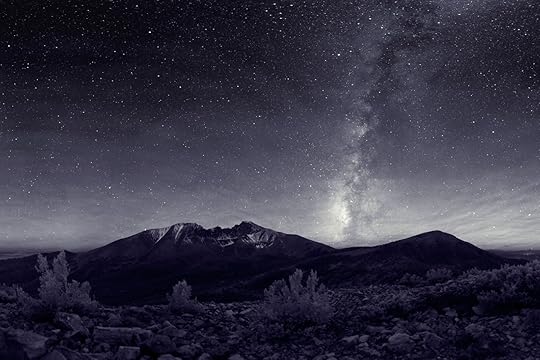
Photo: NPS Photo
Great Basin National Park in Nevada offers an unparalleled stargazing experience. During the summer months, there are free ranger-led stargazing programs. These programs are highly popular and provide an excellent introduction to the night sky. In addition, the park hosts an annual Astronomy Festival in September, which includes telescope viewing sessions, guest speakers, and children’s activities.
If you prefer a more solitary experience, simply bring along a telescope or binoculars. The park’s campgrounds offer fantastic views of the night sky, and you can spend hours gazing at the stars, planets, and galaxies.
The best spots in Great Basin National Park for stargazingBaker Archaeological SiteMather Overlook on Wheeler Peak Scenic DriveRanch Interpretive SiteJoshua Tree National Park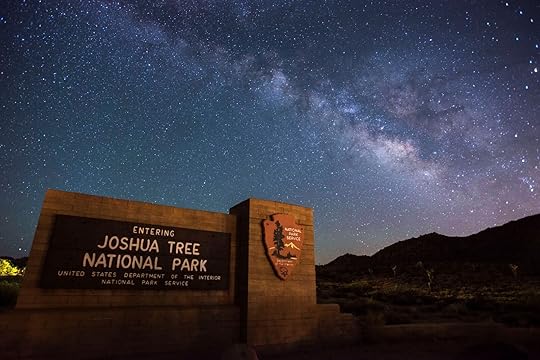
Photo: Lian Law/NPS Photo
Joshua Tree National Park and the surrounding desert area are some of the best places in California to enjoy the night sky. The whole park is really one gigantic stargazing spot. During spring, fall, and winter, you’ll find a host of ranger-led nighttime activities. These are listed out in the park newspaper that you can pick up on arrival. Camping at Joshua Tree is also reccommended. That way you can take in a stargazing session and use what you’ve learned to study the stars from your site. Cottonwood Campground is one of the best camping spots to do this, but it’s often booked up. If so, Jumbo Rocks Campground is another excellent choice. There’s also an annual Night Sky Festival, which is a ticketed event held primarily at Sky’s the Limit Nature Center and Observatory. It is typically held in fall, with tickets available from early summer.
The best spots in Joshua Tree National Park for stargazingArch RockCap RockSkull RockThe Ocotillo PatchMount Rainier National Park
Stargazing at Joshua Tree? Check out Matador’sJoshua Tree National Park accommodations guides:
The 6 Best Hotels Near the Entrances of Joshua Tree National Park These Unreal Joshua Tree Airbnbs Open To California’s Second-Largest National Park
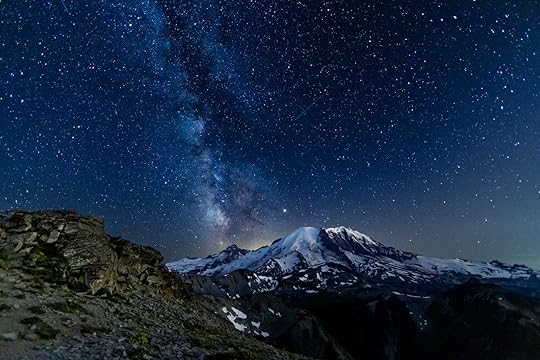
Photo: Tanaka Photography/Shutterstock
Mount Rainier is part of the Cascade Range, an extensive mountain range that stretches from British Columbia in Canada to Northern California. This towering stratovolcano in Washington State offers a breathtaking celestial spectacle that’s worth adding to your stargazing bucket list.
There are numerous locations that offer clear, unobstructed views of the night sky. Paradise, Sunrise, and the Mowich Lake area are particularly advantageous spots for stargazing due to their high elevation and minimal light pollution. Rangers run night skies programs at Paradise between early August and September. Telescope viewings and discussions begin at the plaza outside the Jackson Visitor Center at Paradise at 9:30 PM and typically last for around two hours.
The best spots in Mount Rainier National Park for stargazingFrozen Lake via Sourdough Ridge TrailParadise InnSunrise Visitor CenterShenandoah National Park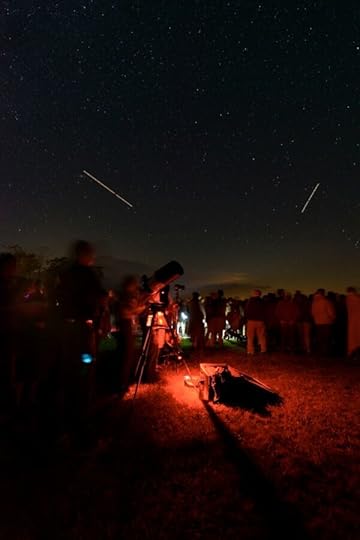
Photo: Mary O’Neill/NPS Photo
Shenandoah National Park, located in Virginia, is one of the most pristine natural environments in the US. The park is characterized by its rugged landscape, with the Blue Ridge Mountains as its backbone. Although Shenandoah does not get as dark as the other parks on the list, it’s geographical location allows for elevated viewing points and overlooks away from light pollution of nearby towns. It’s also one of the best places in the state of Virginia to see the Milky Way.
The park hosts a Night Sky Festival annually where you can join fellow stargazer at ranger talks, night sky landscape photography classes, kids’ activities, and guest presentations.
The best spots in Shenandoah National Park for stargazingThere are multiple stopping points along the 105-mile Skyline Drive, here are some of the best.
Indian Run (Milepost 10.5)Howwallow Flats (Milepost 13.6)Rattlesnake Point (Milepost 21.0)Jermeys Run (Milepost 26.5)Thorton Hollow (Milepost 27.5)Pinnacles (Milepost 35.0)Thorofare Mountain (Milepost 40.5)Rocky Mount (Milepost 70.1)Two Mile Run (Milepost 76.0) Rockytop Mountain (Milepost 78.0)Doyles River (Milepost 82.0)Trayfoot Mountain (Milepost 87.0) More like thisAstronomyMapped: 60-Plus Dark Sky Parks Across the US for Ultimate Stargazing
More like thisAstronomyMapped: 60-Plus Dark Sky Parks Across the US for Ultimate Stargazing
Gaze at the Stars From These Airbnbs in the Top Dark Sky Zones

With the night sky and visibility of stars under threat, the International Dark Sky Places Program (IDSP) advocates for the protection of the nocturnal environment. Of 200 and counting designated Dark Sky Places all around the world, North America claims over half. As the International Dark Sky Association (IDA) works to conserve our fragile skies and educate communities, it’s expected to see further parks, sanctuaries, reserves, and urban sites added as awareness for astrotourism continues to soar.
Beyond the certified zones, national parks and remote areas in the United States provide light pollution-free twilight skies for constellation spotting. Staying at these stargazing Airbnbs in Dark Sky zones around the US will make you feel like you can pluck the planets right out of the heavens.
We hope you love these Airbnbs near Dark Sky Zones! Just so you know, Matador may collect a small commission from the links on this page if you decide to book a stay. Listed prices are accurate as of the time of publication.
Designer Dark Sky villa in Death Valley – Beatty, Nevada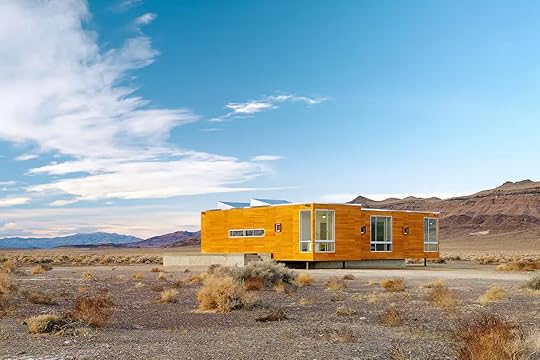 Photo: Airbnb
Photo: Airbnb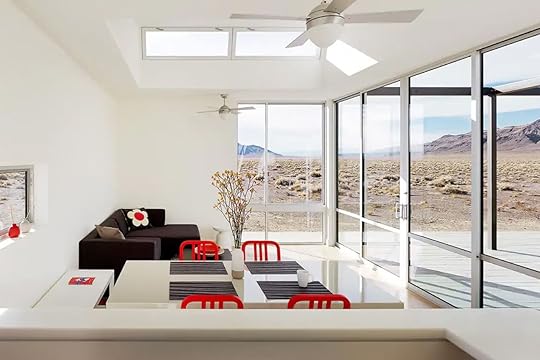 Photo: Airbnb
Photo: Airbnb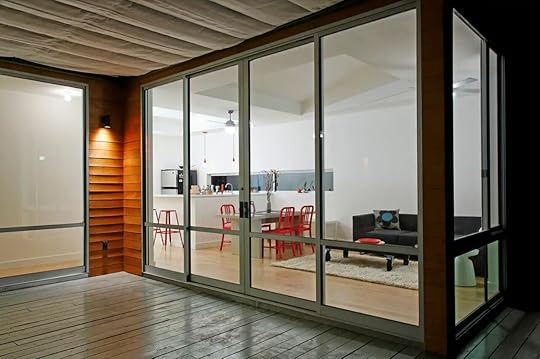 Photo: Airbnb
Photo: Airbnb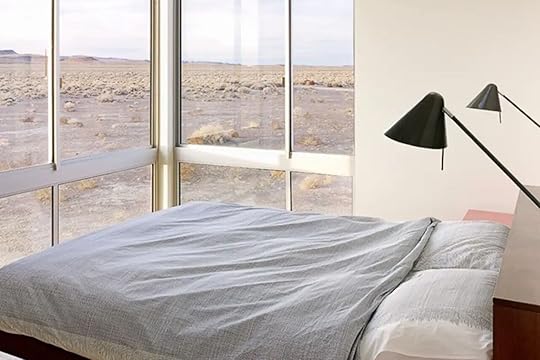 Photo: Airbnb
Photo: AirbnbYou can’t get more remote than this off-the-grid Airbnb floating in the Nevada High Desert with only sand, stars, and your nearest and dearest for company. A sunken hot tub on the deck provides a dash of luxury although you needn’t rouse yourself from the couch or bed to soak up the scenery. Twenty miles off the national park perimeter, you’ll experience the full might of this Gold Tier Dark Sky Park and the clearest night skies in the US with zero effort needed.
Six guests, three bedrooms
Price: $491 per night
Stargazing Joshua Tree Airbnb – Twentynine Palms, California Photo: Airbnb
Photo: Airbnb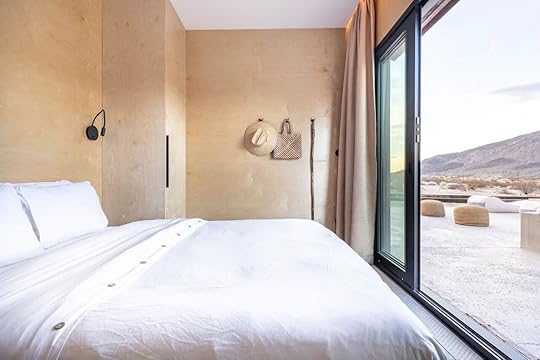 Photo: Airbnb
Photo: Airbnb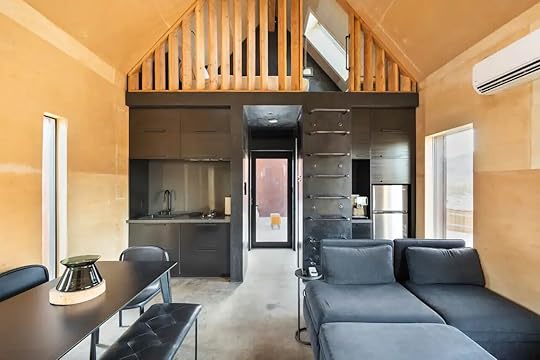 Photo: Airbnb
Photo: Airbnb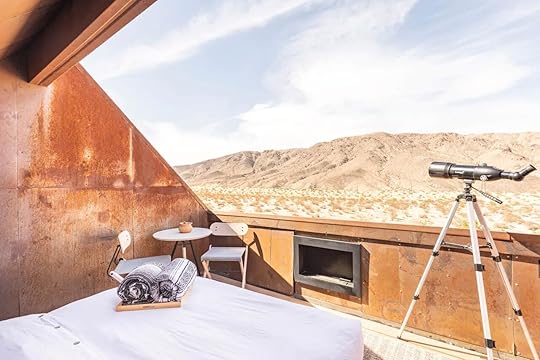 Photo: Airbnb
Photo: AirbnbSee more photosThis stellar duo of cabins nails the blending of indoor and outdoor living. The smaller unit contains an open bedroom that’ll thrill seasoned and novice astronomers. Although the stars already feel close enough to touch, the telescope is an epic addition. On cooler evenings, you can sleep on the first floor or in the main cabin complete with a polished kitchen and lounge. A private hot tub, bocce ball court, and endless mountain views will keep you entertained for days. Consider a Joshua Tree UFO masterclass to buck your chances of a close encounter.
Four guests, three bedrooms
Price: $475 per night
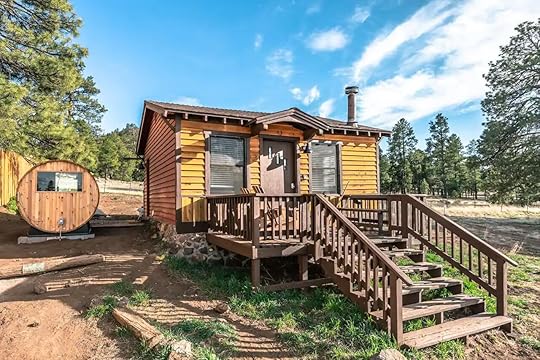 Photo: Airbnb
Photo: Airbnb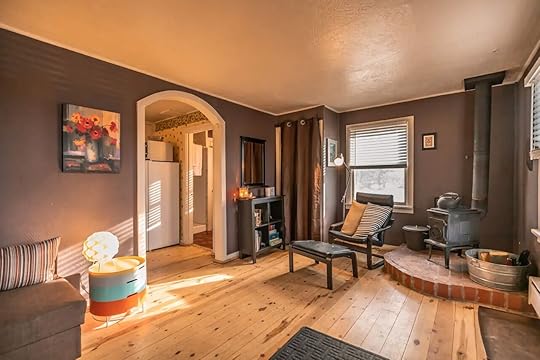 Photo: Airbnb
Photo: Airbnb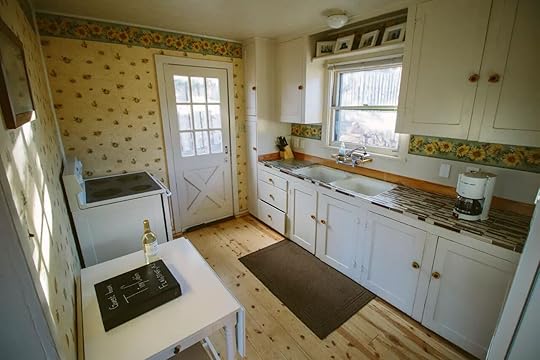 Photo: Airbnb
Photo: Airbnb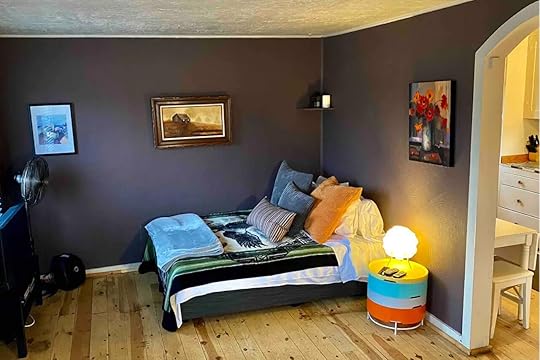 Photo: Airbnb
Photo: AirbnbSee more photosDesignated the pioneering Dark Sky City in 2001, you can cherry pick from scores of Flagstaff Airbnbs in Dark Sky zones. This sustainable cabin near downtown and the Lowell Observatory earns two hundred billion extra stars for adding a barrel sauna to the backyard where you can study the constellations in tandem with a detox. The zero gravity massage bed, star binoculars, and telescope earn extra brownie points. Supplement your trip with a Flagstaff stargazing experience and you’ll essentially return home with astronaut status.
Four guests, one bedroom
Price: $132 per night
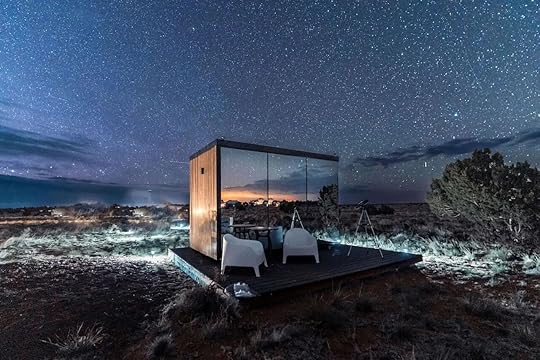 Photo: Airbnb
Photo: Airbnb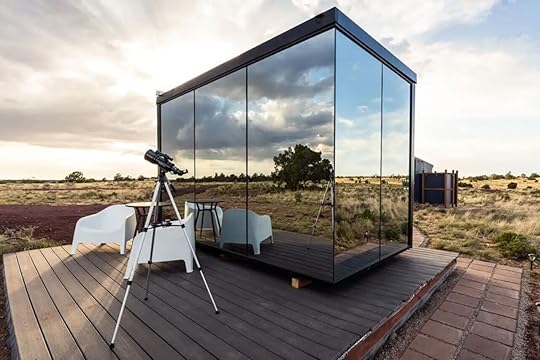 Photo: Airbnb
Photo: Airbnb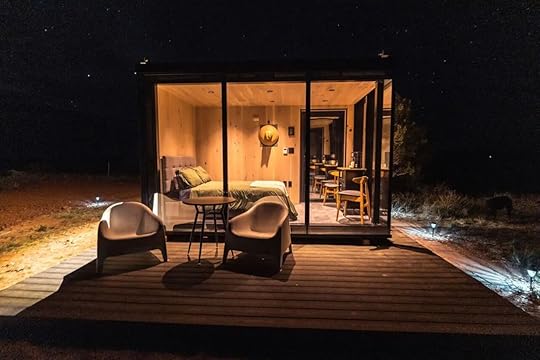 Photo: Airbnb
Photo: Airbnb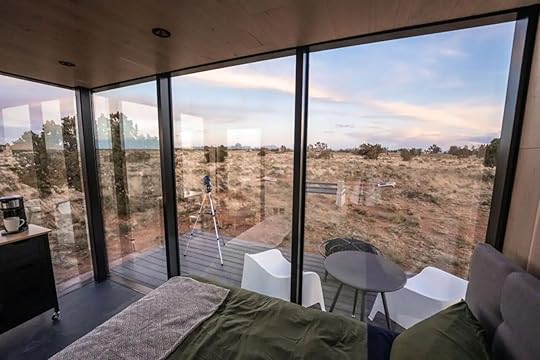 Photo: Airbnb
Photo: AirbnbSee more photosIt’s one of the coolest astrotourism Airbnbs near the Grand Canyon but you’ll need to find it first. Clad with external mirrors, this tiny desert home provides an off the (star) charts experience. Your solar-powered pod comes with a coffee maker, outdoor shower, and games to enjoy in the yard or indoors. Set the fire pit ablaze and you can spend hours tinkering with the telescope and counting Saturn’s rings in this Dark Sky Park. Ninety minutes from the South Rim, you may want to check out upcoming Star Party events.
Two guests, one bedroom
Price: $154 per night
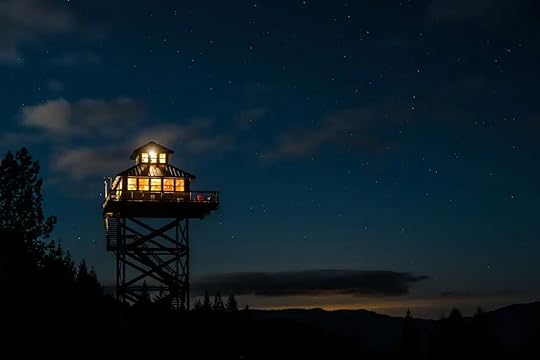 Photo: Airbnb
Photo: Airbnb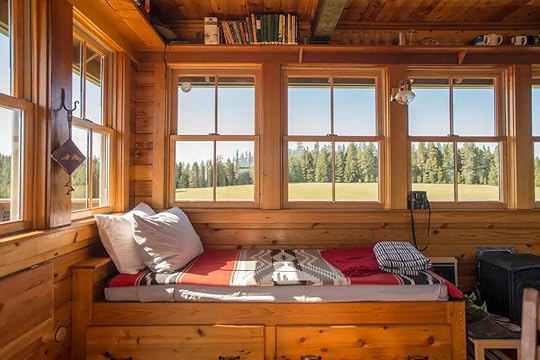 Photo: Airbnb
Photo: Airbnb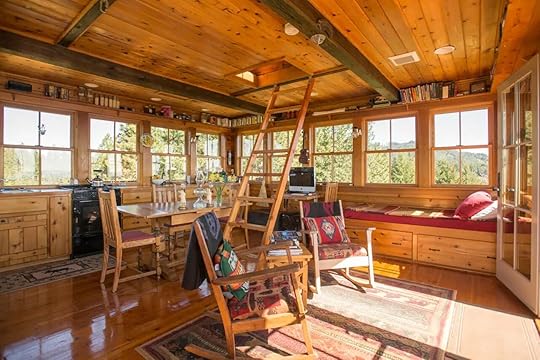 Photo: Airbnb
Photo: Airbnb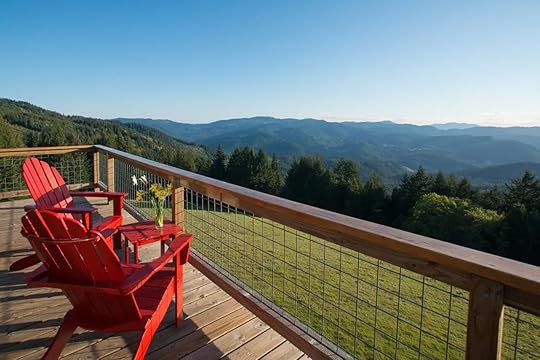 Photo: Airbnb
Photo: AirbnbSee more photosSleeping in this skywatching Airbnb in Oregon fully immerses you in the inky black skies that coat the Umatilla National Forest. Modeled on the fire lookout towers used by the US Forest Service, the 40-foot home stands at a lofty elevation of 3,500 feet. With no Wi-Fi or television to distract you, you can lavish your full attention on the cosmos using the provided star map. Outside of significant astronomical events, July and August are the best months for astrotourism and Perseid meteor showers.
Four guests, one bedroom
Price: $257 per night
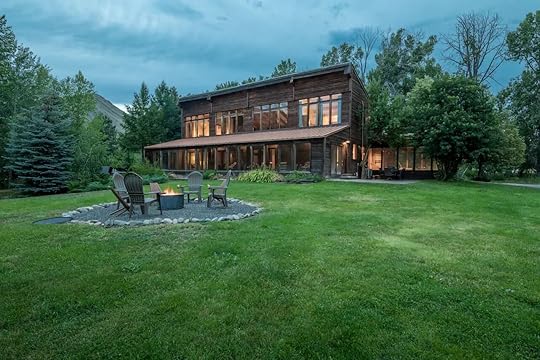 Photo: Airbnb
Photo: Airbnb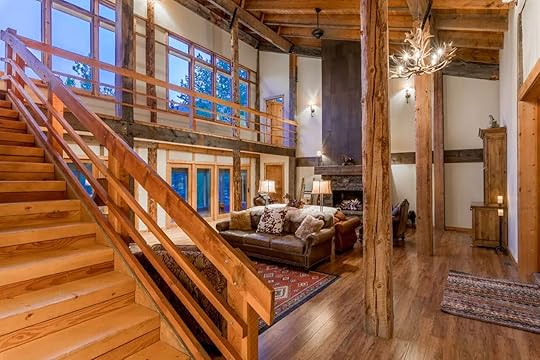 Photo: Airbnb
Photo: Airbnb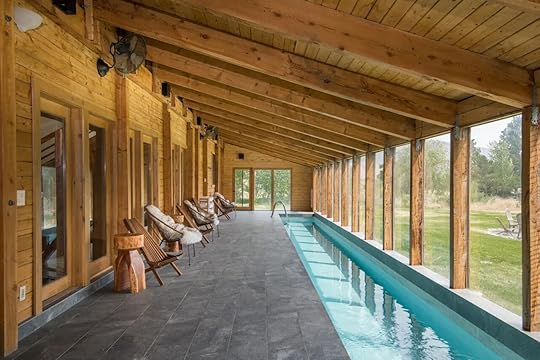 Photo: Airbnb
Photo: Airbnb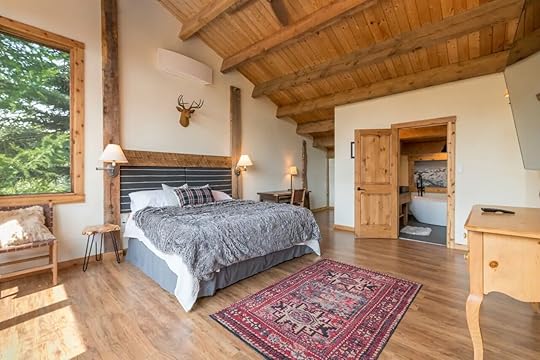 Photo: Airbnb
Photo: AirbnbSee more photosYou can’t get more cosmic than the Craters of the Moon National Monument and this timber lodge is one of the best Dark Sky zone Airbnbs for larger groups. Bathe under the moonlight in the open-air hot tub or huddle around the fire pit with steaming cocoa. The indoor saltwater pool is heated year-round while the games’ barn and home cinema ensure that cloudy skies don’t dampen your stay. Seasonal daylight adventures include hiking and skiing followed by a sojourn in the private sauna.
Twelve guests, four bedrooms
Price: $856 per night
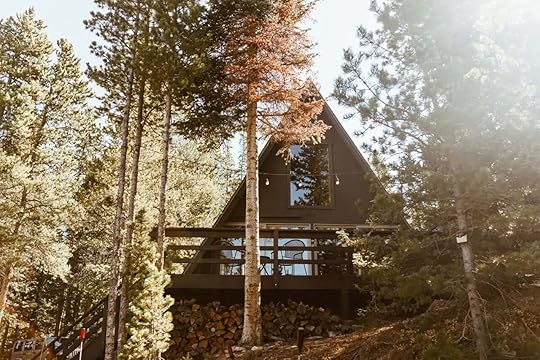 Photo: Airbnb
Photo: Airbnb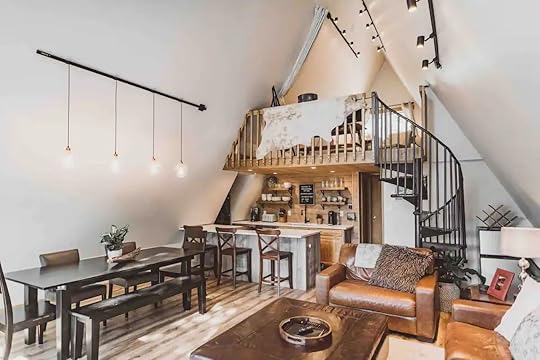 Photo: Airbnb
Photo: Airbnb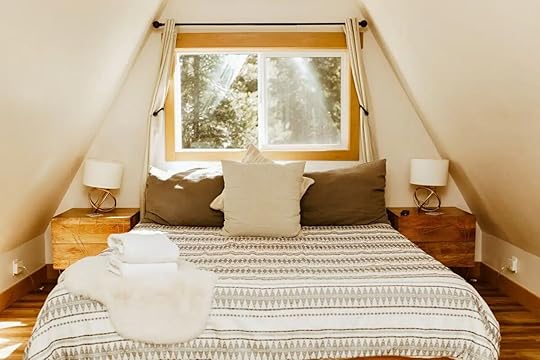 Photo: Airbnb
Photo: Airbnb Photo: Airbnb
Photo: AirbnbSee more photosWildlife enthusiasts, winter sports junkies, and astronomer amateurs alike will be over the moon with this isolated cabin in deepest, darkest Summit County. Standing at 9,600 feet above sea level, you’re practically in outer space yet with all the homely trimmings. The deck is festooned with gentle lighting and a Jacuzzi for peering into the galaxies furthest away. Bookend your stay with a Rocky Mountains astrophotography experience and you’ll earn the perfect memento to hang on your own walls.
Six guests, three bedrooms
Price: $400 per night
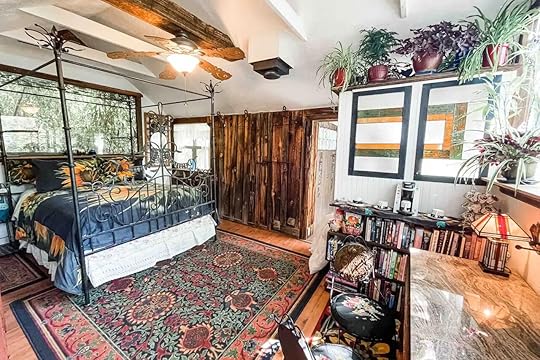 Photo: Airbnb
Photo: Airbnb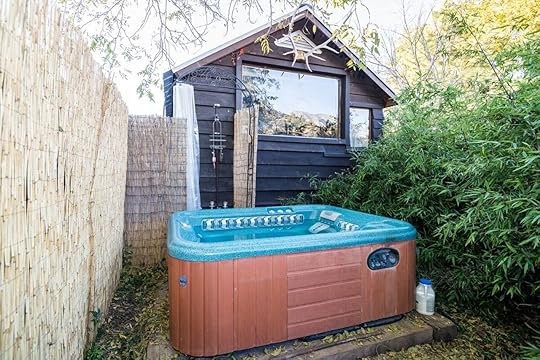 Photo: Airbnb
Photo: Airbnb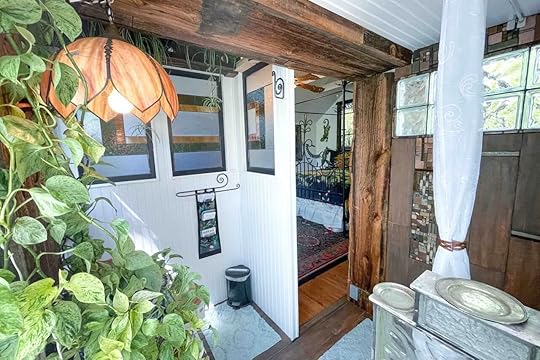 Photo: Airbnb
Photo: Airbnb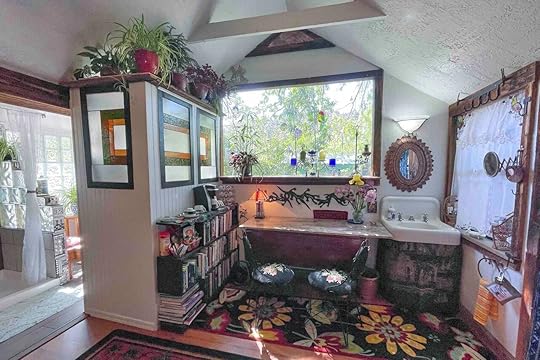 Photo: Airbnb
Photo: AirbnbSee more photosBursting at the seams with eccentricities and personality, this goofy cabin is a treasure trove of antiques, books, and plants – plus all your mod-cons. Legend has it that Billy The Kid slept in this very bunkhouse. Mere miles from the Cosmic Campground Dark Sky Sanctuary, you’ll experience pitch-black nights from the private hot tub or observatory. Animal lovers only; the cabin is located on an organic farm where social dogs, ducks, and ponies roam freely. Bordering the Gila National Forest means you have trails leaving the backyard.
Two guests, one bedroom
Price: $138 per night
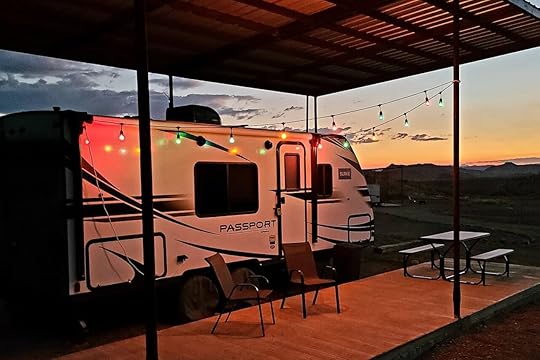 Photo: Airbnb
Photo: Airbnb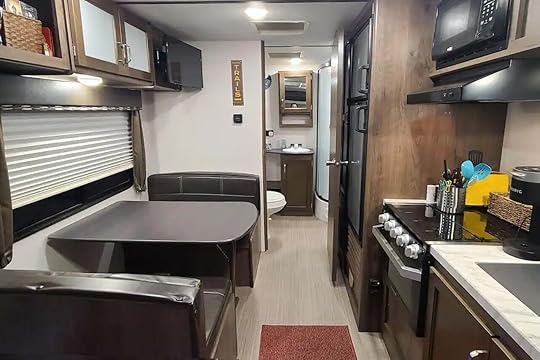 Photo: Airbnb
Photo: Airbnb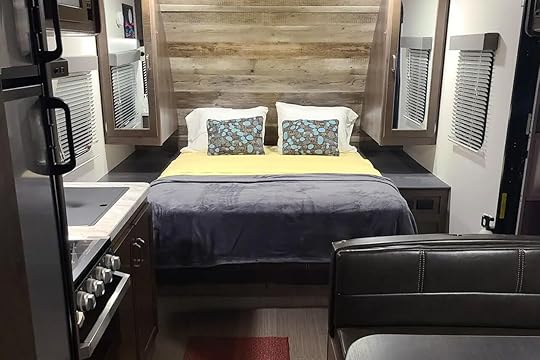 Photo: Airbnb
Photo: Airbnb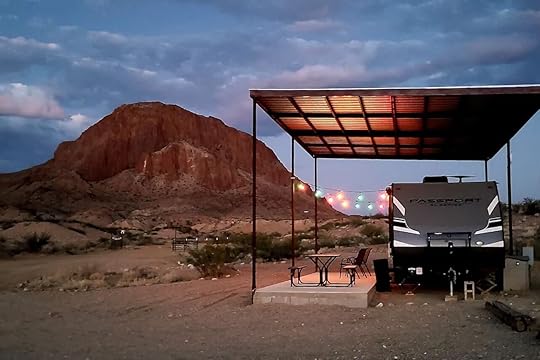 Photo: Airbnb
Photo: AirbnbSee more photosThis trailer is one of the best Airbnbs near Big Bend that feels like it’s in the middle of nowhere yet is only two miles from the national and state park entrances. The RV is neatly appointed with a full kitchen, bathroom, and a Murphy bed that’s surprisingly comfy. Each of the three campers in the compound has its own covered patio where you can nurse a bottle of wine into the wee areas and gawk at the Milky Way.
Two guests, one bedroom
Price: $146 per night
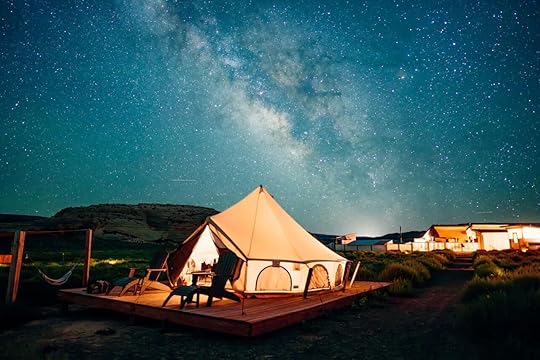 Photo: Airbnb
Photo: Airbnb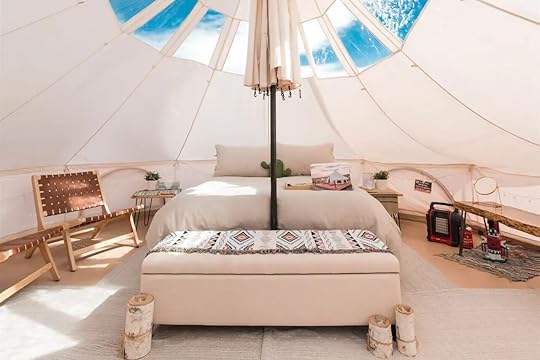 Photo: Airbnb
Photo: Airbnb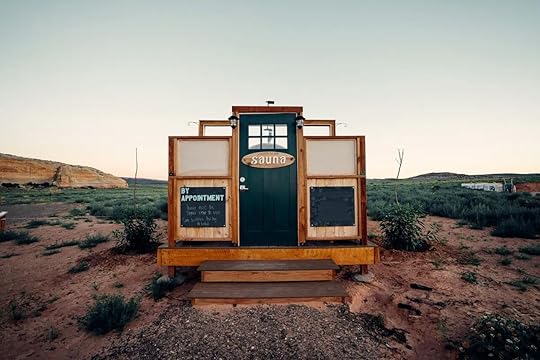 Photo: Airbnb
Photo: Airbnb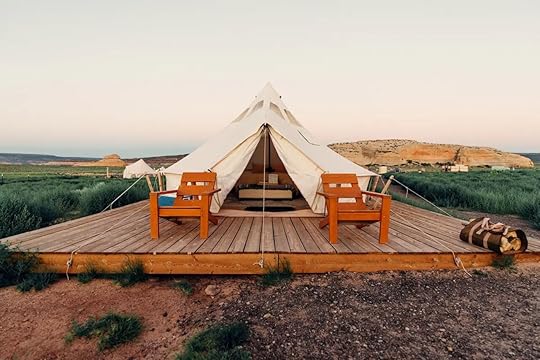 Photo: Airbnb
Photo: AirbnbSee more photosThere’s much more to Canyonlands than mesas and buttes: the pollution-free skies above this national park put on a show that money can’t buy. One of the wildest Dark Sky Airbnbs in Utah for nature-loving couples, this bell tent features a transparent roof for effortless moon gazing. Communal areas include a glass-roofed bathroom, kitchen, and shaded hammocks. Craning your neck and the skies takes its toll on your neck so you’ll relish the daily one-hour sauna session included in your booking.
Two guests, one bedroom
Price: $172 per night
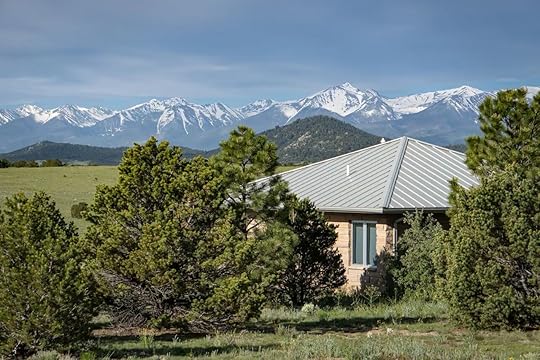 Photo: Airbnb
Photo: Airbnb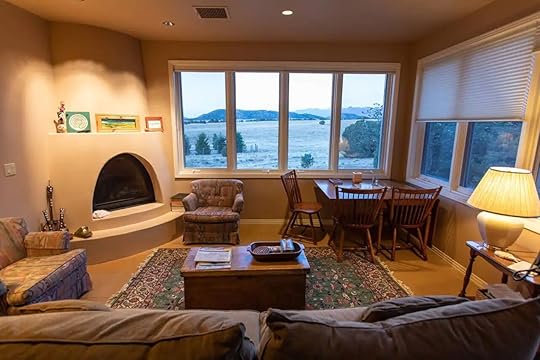 Photo: Airbnb
Photo: Airbnb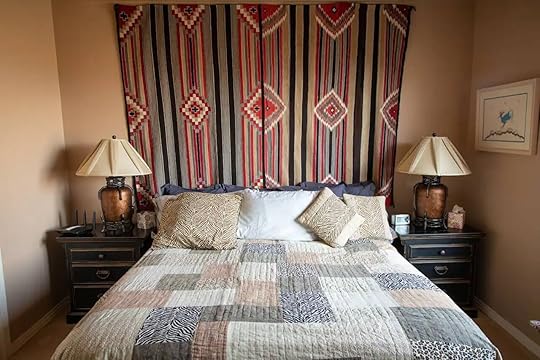 Photo: Airbnb
Photo: Airbnb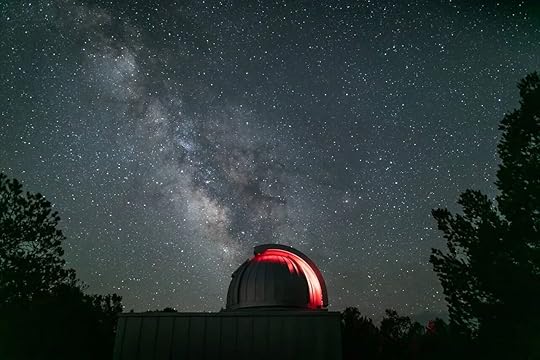 Photo: Airbnb
Photo: AirbnbSee more photosAt first glance, this lovely vacation rental may well look like your typical family home. But keep scrolling and you’ll see that your stay includes access to a greenhouse teeming with orchids, herbs, and tomatoes plus a labyrinth and meditation den. Located within the world’s highest altitude Dark Sky Community –Westcliffe and Silver Cliff – your cosmic experience continues with a tour or astrophotography session at the private observatory. Donations to a local non-profit are recommended.
Six guests, three bedrooms
Price: $235 per night
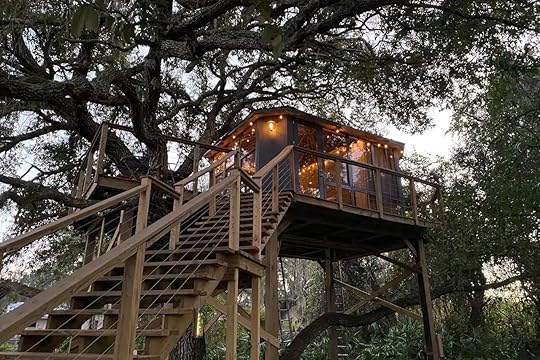 Photo: Airbnb
Photo: Airbnb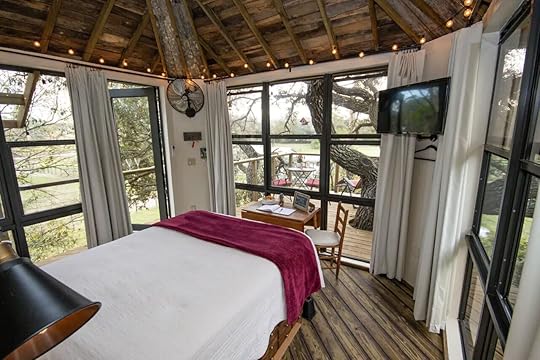 Photo: Airbnb
Photo: Airbnb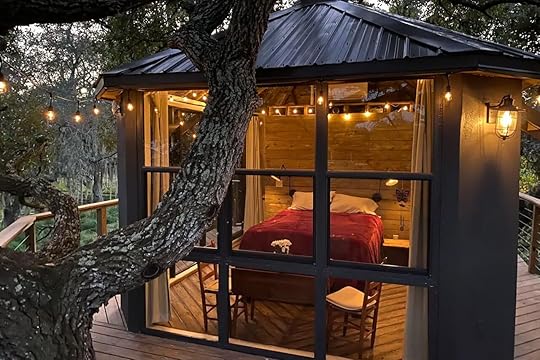 Photo: Airbnb
Photo: Airbnb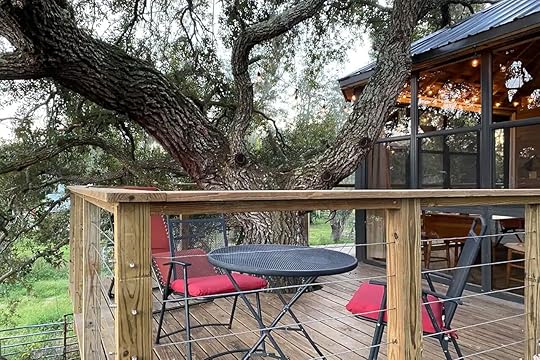 Photo: Airbnb
Photo: AirbnbSee more photosThe Sunshine State might not spring to mind for dark skies but that’s only because you’re forgetting about Kissimmee Prairie Preserve State Park. This treetop Airbnb for stargazing near Florida’s untouched prairie ecosystem accommodates solo travelers or couples seeking clarity among greenery and constellations. Drink up the galactic displays from the wraparound deck or from bed through the skylight. Those carrots in the fridge will help you become chums with your friendly equine neigh-bors.
Two guests, one bedroom
Price: $172 per night
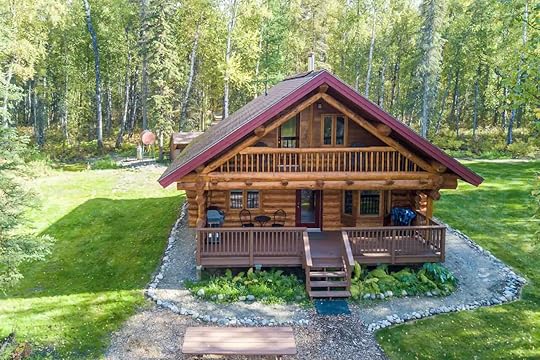 Photo: Airbnb
Photo: Airbnb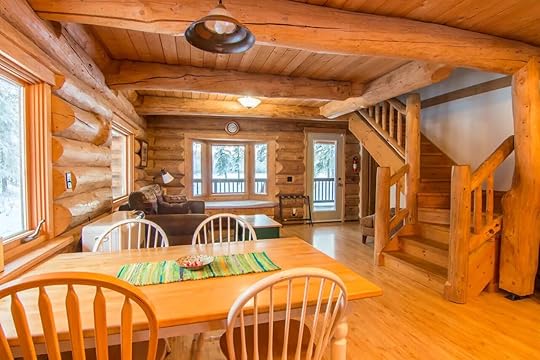 Photo: Airbnb
Photo: Airbnb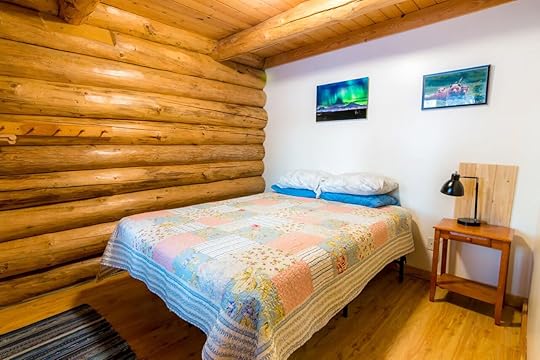 Photo: Airbnb
Photo: Airbnb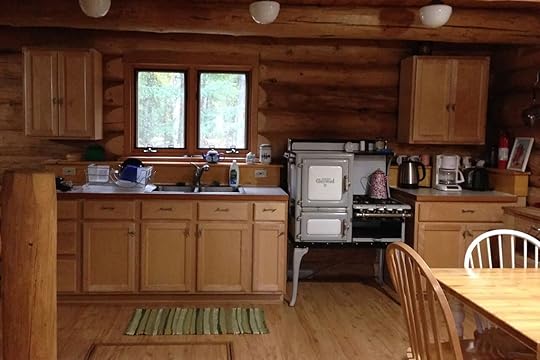 Photo: Airbnb
Photo: AirbnbSee more photosNo need to fly to Scandivania for celestial spectacles, one of the most beautiful Arctic Airbnbs sits less than three hours from Denali National Park and Anchorage. In fact, the highest peak in North America is visible from the balcony. Decked out with a full kitchen, DVD library, and a barbecue on the verandah, this two-story log cabin is ideal for a longer vacation in the largest US state. The more nights you stay, the higher the chance of sighting the northern lights or a meteor shower!
Six guests, two bedrooms
Price: $208 per night
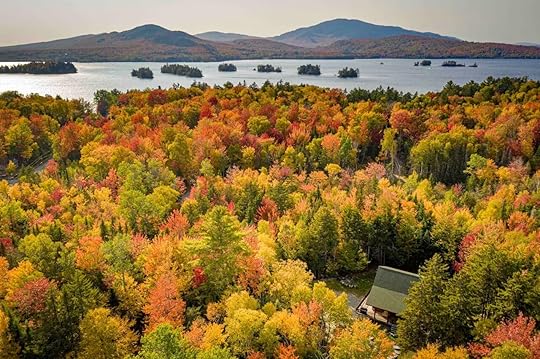 Photo: Airbnb
Photo: Airbnb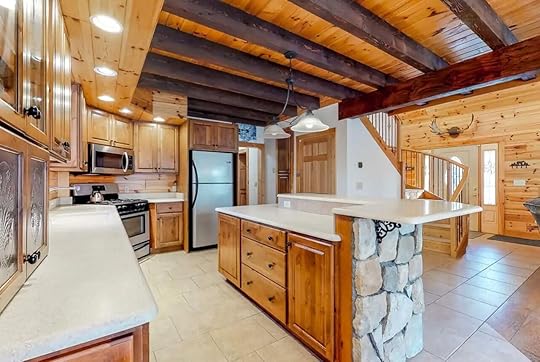 Photo: Airbnb
Photo: Airbnb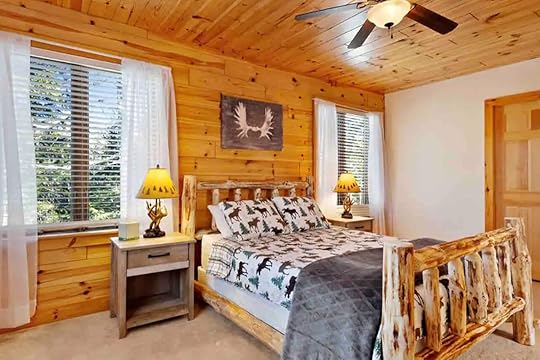 Photo: Airbnb
Photo: Airbnb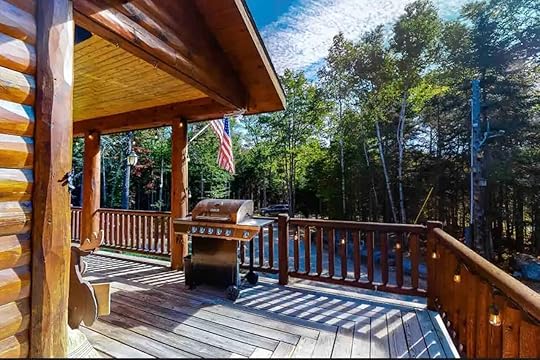 Photo: Airbnb
Photo: AirbnbSee more photosOne of the largest Dark Sky zone Airbnbs, this four-bedroom cabin is ideal for even the most astronomical families. Swallowed up by the forest of the AMC Maine Woods Dark Sky Park, the rental is peaceful from dawn until dusk with skywatching nooks on the verandah and yard. Dogs can accompany you but will need to be leashed to safeguard the wildlife. You’ll have complimentary access to the deeded dock on Moosehead Lake but snowmobiles are the way to go during winter.
Nine guests, four bedrooms
Price: $283 per night
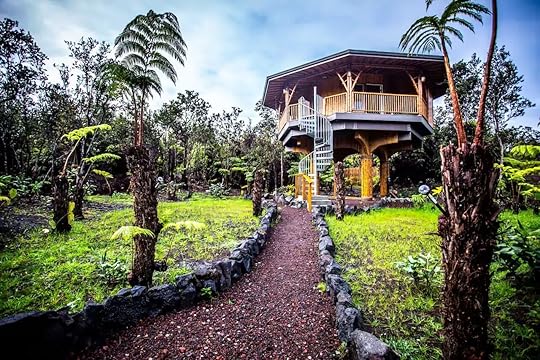 Photo: Airbnb
Photo: Airbnb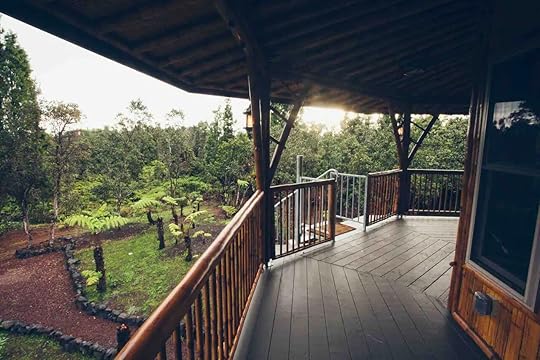 Photo: Airbnb
Photo: Airbnb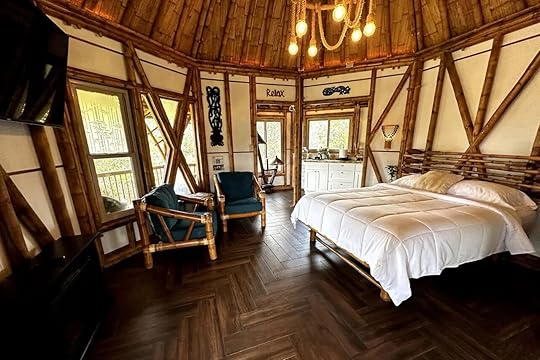 Photo: Airbnb
Photo: Airbnb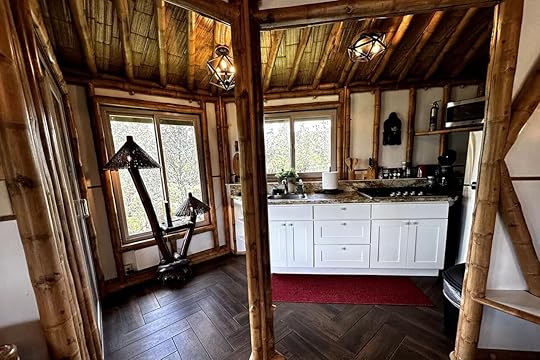 Photo: Airbnb
Photo: AirbnbSee more photosAwesome for an adventurous honeymoon or romantic vacation, this bamboo treehouse is outfitted with premium bedding and a full kitchen. Settle onto the lanai and you can tune into the melodies of apapane birds and coqui frogs by day and lap up unpolluted skies by night. Not a light traveler? There’s a nifty pulley system to spare lugging your suitcase up those spiral stairs. Heed the advice of past travelers and book for more than one night.
Two guests, one bedroom
Price: $296 per night
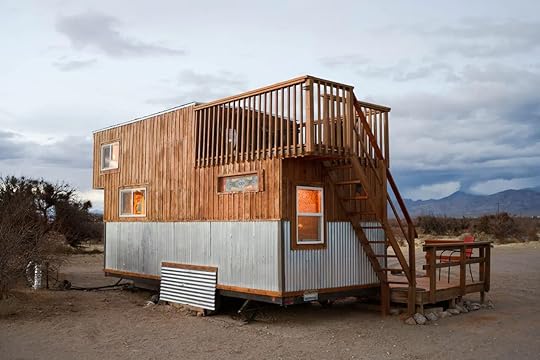 Photo: Airbnb
Photo: Airbnb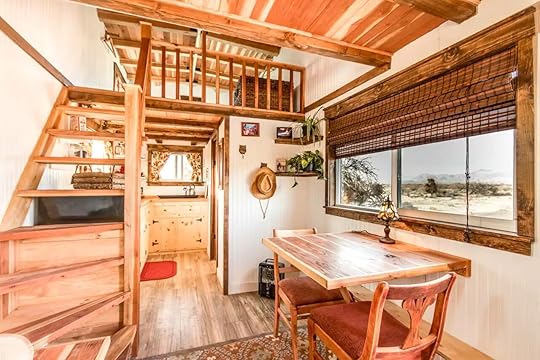 Photo: Airbnb
Photo: Airbnb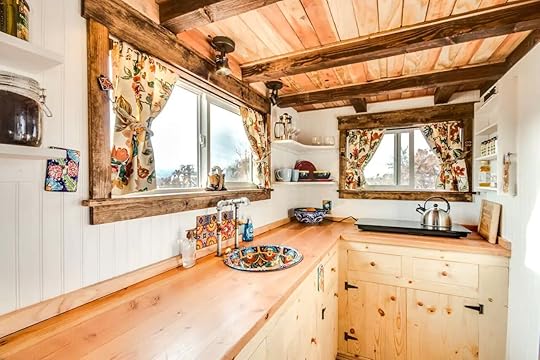 Photo: Airbnb
Photo: Airbnb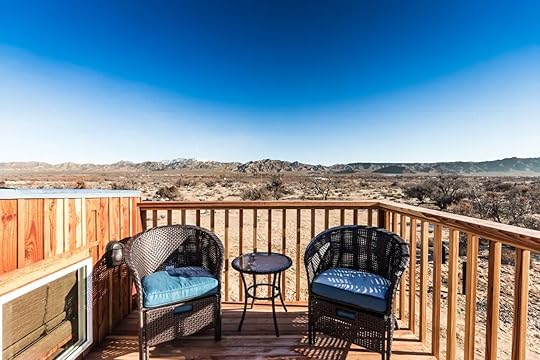 Photo: Airbnb
Photo: AirbnbSee more photosIf you think you need to cruise the strip for bright lights, think again – nature has your back. Fifty miles west of Las Vegas and straddling the state line, the astral spectacle from this Airbnb near the largest Dark Sky zone in the US will leave you starstruck. The loft of the cabin on wheels opens onto a roof deck where the Milky Way cartwheels above. Located on a rural dude ranch, you can add cooked meals or sign up for horse trekking in the desert. Pet fees are donated to SPCA International.
Three guests, one bedroom
Price: $125 per night
13 Luxury Outdoor Hotels With Otherworldly Stargazing Experiences
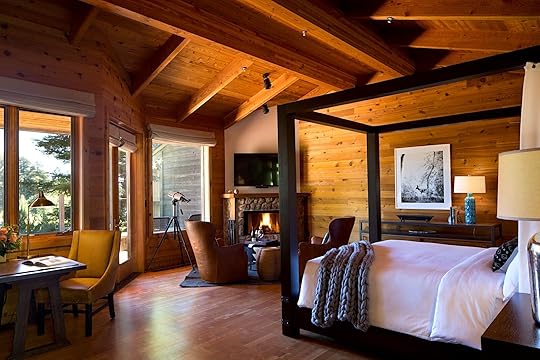
Scattered across the US are pockets of dark skies that offer some of the best stargazing experiences in the world. Within these often protected and designated areas luxury hotels are catering to the astro-tourism market with expert lead stargazing experiences. Situated in areas with low levels of light pollution and excellent air clarity, the night sky over these properties is so pristine you can enjoy it from the comfort of your hotel room or balcony. But these stargazing hotels have stepped it up by offering a range of astrological events, in-room telescopes and binoculars, outdoor skybeds, and even an on-site observatory. With a focus on the outdoors, these are not only some of the best resorts in the US, they run some of the top dark sky experiences in the nation.
ADERO Scottsdale Resort, Scottsdale, Arizona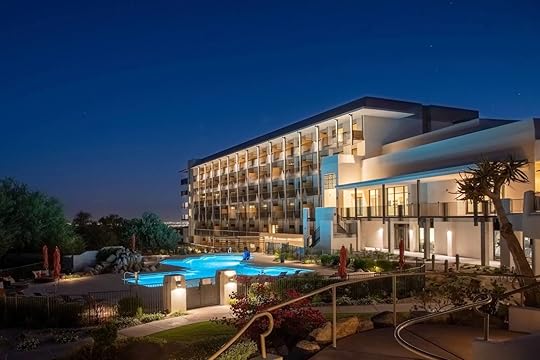 Photo: Expedia
Photo: Expedia Photo: Expedia
Photo: Expedia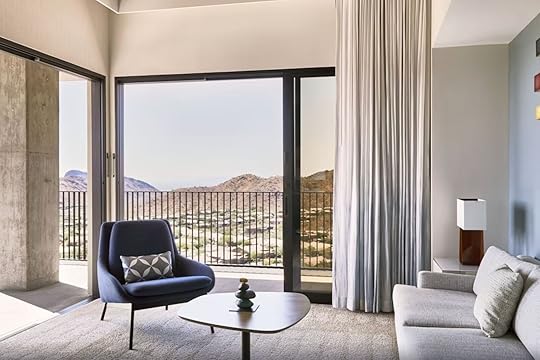 Photo: Expedia
Photo: ExpediaOnce the desert sun has set over Scottsdale, the ADERO Scottsdale Resort becomes a stage for some unmissable stargazing. In part due to the natural screening effect of the neighboring McDowell Mountains, you can enjoy the night sky right from the comfort of your accommodation with the use of in-room telescopes and binoculars.
They also offer a signature night sky program, “Find Your Way”, designed to guide stargazers through the infinite expanse of our universe. The hotel’s resident “Star Dudes” provide guided stargazing events, offering a wealth of knowledge and insights and guests also receive exclusive complimentary use of the Star Walk 2 mobile app.
ADERO Scottsdale Resort : 13225 North Eagle Ridge Drive, Fountain Hills, AZ, 85268
Book NowAlila Ventana, Big Sur, California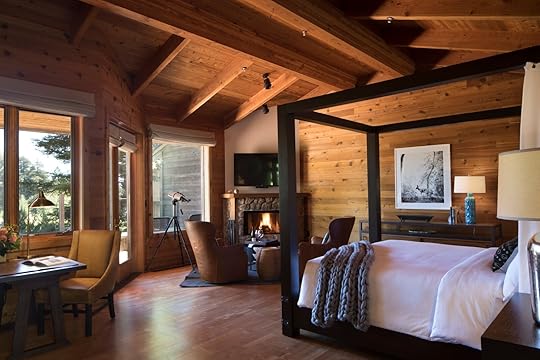 Photo: Alila Ventana Big Sur
Photo: Alila Ventana Big Sur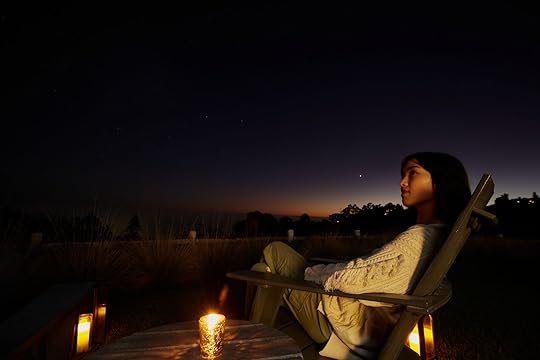 Photo: Alila Ventana Big Sur
Photo: Alila Ventana Big Sur Photo: Alila Ventana Big Sur
Photo: Alila Ventana Big SurThis resort sits in a stunning location between the mountains, redwood forests, and the Pacific Ocean. Its spectacular position and over 160 acres of land offer some of the best views in Big Sur. It’s also just off Highway One, which is considered one of the world’s most scenic and cherished routes. It’s also one of the best places in California to stargaze and is a wicked stop on a coastal road trip.
For those interested in astronomy, the resort runs a few experiences. Star bathing sessions are popular and are run by expert guides who educate guests about the dark sky and local flora and fauna found on the property. You can also partake in an astrology reading that will explore your birth chart or the cosmic yoga experience. The grounding practice is said to encourage a personal connection between body, mind, and spirit with the land and universe.
Alila Ventana Big Sur in California : 48123 CA-1, Big Sur, CA 93920
Book NowAmangiri Resort, Canyon Point, UtahSet in perhaps the most dramatic desert landscape in the US, Amangini Resort is minutes from Lake Powell and the Grand Staircase-Escalante National Monument. The drive to its almost hidden location is part of the draw. As are the dark skies that blanket this remote region of Utah.
The resort oozes exclusivity and luxury. The exterior of the resort was inspired by the rugged landscape, so much so, the buildings blend harmoniously into the red rocks.
Many of the guests go to Amangiri with wellness in mind. There’s a holistic focus on health and wellbeing with an extensive (and exciting) menu of Navajo-inspired treatments, and complimentary yoga and hiking sessions.
Every room at the resort has panoramic views over the desert. The most exciting, however, are Amangiri’s Mesa Pool Suites and Desert Pool Suite. These feature a skybed that allows guests to sleep under the stars on a private terrace. The experience is topped off with cozy blankets, champagne, s’mores, and a firepit.
Amangiri Resort, Canyon Point, Utah : 200 Nohea Kai Dr, Lahaina, HI, 96761
Book NowCastle Hot Springs, Morristown, Arizona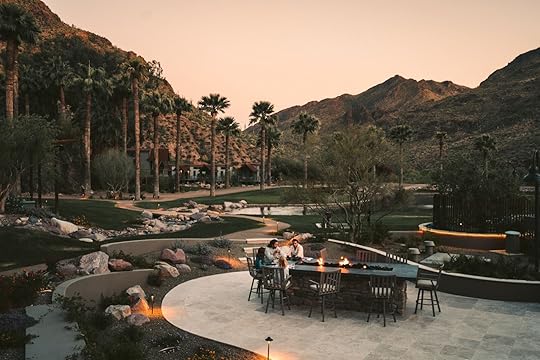 Photo: Castle Hot Springs
Photo: Castle Hot Springs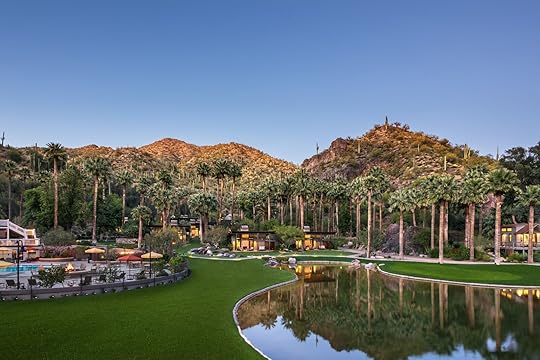 Photo: Castle Hot Springs
Photo: Castle Hot Springs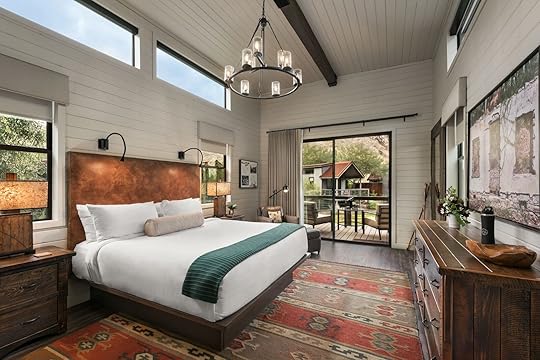 Photo: Hyatt Regency Maui Resort and Spa
Photo: Hyatt Regency Maui Resort and SpaCastle Hot Springs is located around 50 miles from Phoenix and offers an all-inclusive getaway from the pollution of city lights. The secluded destination has a stunning backdrop of the Bradshaw Mountains and is set on an expansive 1,100-acre property. Avid stargazers don’t need to venture from the grounds to enjoy an assortment of constellations, which can be seen with the naked eye.
There are 30 private bungalows and cabins to choose from, but the hotel suggests booking one of the Luxury Sky View Cabins. These have the benefit of an elevated position with a “front-row seat to the incredible night sky.” The accommodations also feature a sprawling deck with a telescope and a luxurious outdoor tub. Another great spot to enjoy the night sky is the estate’s rejuvenating and naturally occurring geothermal hot springs.
Castle Hot Springs : 5050 N Castle Hot Springs Rd, Morristown, AZ 85342
Book NowFour Seasons Resort Maui at Wailea, Kihei, Hawaii Photo: Four Seasons Resort Maui at Wailea
Photo: Four Seasons Resort Maui at Wailea Photo: Four Seasons Resort Maui at Wailea
Photo: Four Seasons Resort Maui at Wailea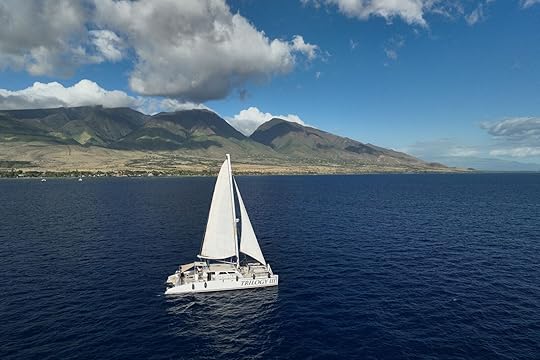 Photo: Four Seasons Resort Maui at Wailea
Photo: Four Seasons Resort Maui at WaileaThe Four Seasons is one of the best resorts in Maui, if not Hawaii. It’s located in Wailea, an area of Maui known for having pristine sand beaches and exceptional dark skies.
In the summer of 2023, the resort launched a new stargazing experience: “A Wayfinder’s Journey.” Five years in the making, the private luxury catamaran sailing adventure celebrates the island’s cultural heritage and traditions that are intertwined with astronomy and their respect for the ocean. The three-hour voyage departs at sunset and is led by Hawaiian navigator, Kala Baybayan Tanaka. On-board guests will learn about her Polynesian ancestors who used to stars to navigate the waters and will be treated to a five-star plant-based culinary journey under the constellations.
Four Seasons Resort Maui at Wailea : 3900 Wailea Alanui Dr, Kihei, HI 96753
Book NowHotel Jackson, Jackson, Wyoming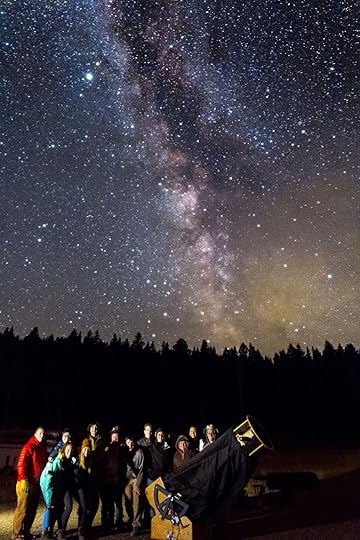
Photo: Hotel Jackson
Stargazing has become a significant part of Jackson’s cultural identity and tourism industry. The high altitude and low light pollution in town make it a superb site for astronomical observation.
Hotel Jackson is just steps away from downtown. The hotel was built by the Darwiche family, who have deep ties with the local community spanning three generations. This strong sense of community has undoubtedly played a significant role in shaping the hotel’s welcoming, personalized service which extends to it’s additional experiences.
It is ideally located close to several spots known for their clear, star-filled skies, so you can enjoy the night sky from the properties balconies. They also run guided stargazing tours with iPads (with the Star Walk App) and high-spec telescopes. Operated by Wyoming Stargazing, a local organization, guests are picked up at reception and taken on a three to four hour educational excursion. Departure time will be confirmed depending on the weather, but they normally leave about 7:30 PM.
Hotel Jackson, Jackson, Wyoming : 120 North Glenwood Street, Jackson, WY, 83001
Book NowHyatt Regency Maui Resort & Spa, Maui, Hawaii Photo: Hyatt Regency Maui Resort and Spa
Photo: Hyatt Regency Maui Resort and Spa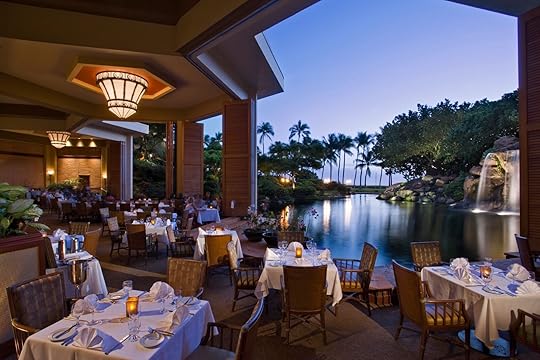 Photo: Hyatt Regency Maui Resort and Spa
Photo: Hyatt Regency Maui Resort and Spa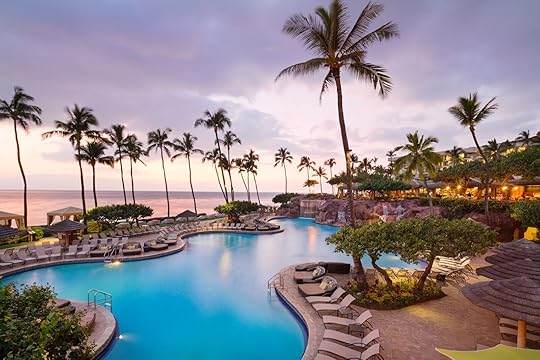 Photo: Hyatt Regency Maui Resort and Spa
Photo: Hyatt Regency Maui Resort and SpaAmong the Hawaiian Islands, Maui stands out as a premier destination for stargazing. Its clear and unobstructed skies, coupled with the stable atmospheric conditions created by the trade winds, provide near-perfect conditions for observing the cosmos.
From Hyatt Regency Maui Resort you can enjoy the night sky for your private lanai, but if you’d like a little guidence, you can head up to the property’s rooftop and join their famed astronomy program, Tour of the Stars. It runs three times per night, five nights a week (Thursday to Monday). From this unique position on Earth, you are able to see 80 of the 88 constellations. There’s also an exclusive nighttime photography workshop on Monday nights piloted by NASA solar system ambassador, Eddie Mahoney.
Hyatt Regency Maui Resort & Spa : 200 Nohea Kai Dr, Lahaina, HI, 96761
Price per night: $934
Book NowKeweenaw Mountain Lodge, Copper Harbor, Michigan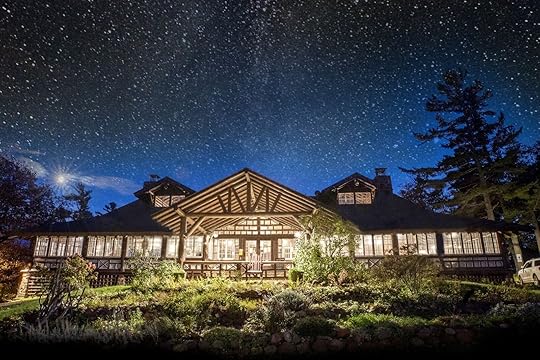 Photo: Keweenaw Mountain Lodge
Photo: Keweenaw Mountain Lodge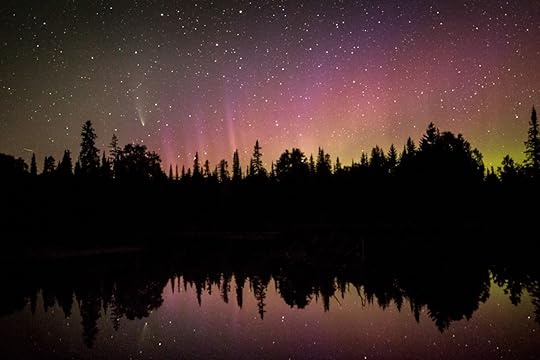 Photo: Keweenaw Mountain Lodge
Photo: Keweenaw Mountain Lodge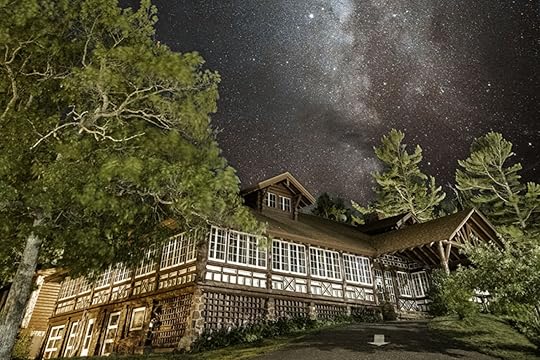 Photo: Keweenaw Mountain Lodge
Photo: Keweenaw Mountain LodgeKeweenaw Mountain Lodge is a historic resort in Copper Harbor at the end of the Keweenaw Peninsula. The year-round outdoor adventure lodge is also the headquarters for the Keweenaw Dark Sky Park.
There’s a busy calendar of events from stargazing parties to night-sky photo workshops and guests can enhance their viewing experience by borrowing a telescope and a red light from the Outdoors Activity Center. The best spots are marked on an easy to follow map which can be downloaded and studied at the stargazing headquarters. The top of Keweenaw is well known for sighting of the aurora borealis. If you are visiting between October to April, you may be lucky enough to spot the lights from the shores of Lake Superior and from atop Brockway Mountain.
Keweenaw Mountain Lodge : 14252 US Hwy 41, Copper Harbor, MI 49918
Price per night: $350
Book NowMauna Kea Resort, Kohala Coast, Hawaii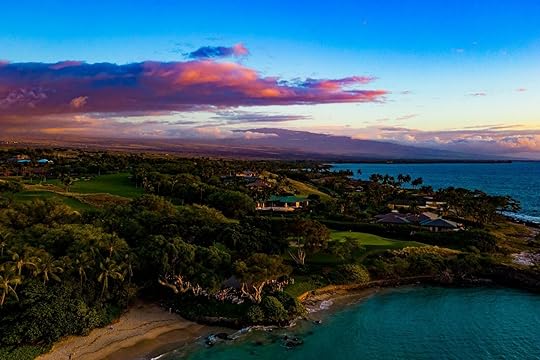 Photo: Mauna Kea Resort
Photo: Mauna Kea Resort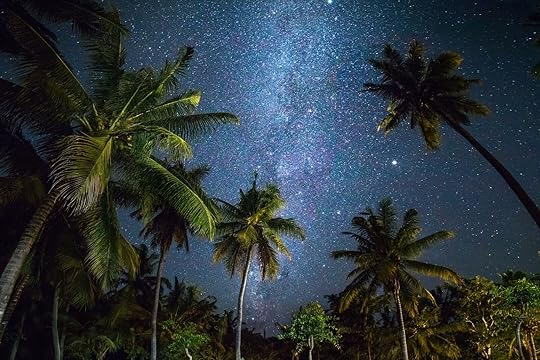 Photo: Taiga/Shutterstock
Photo: Taiga/Shutterstock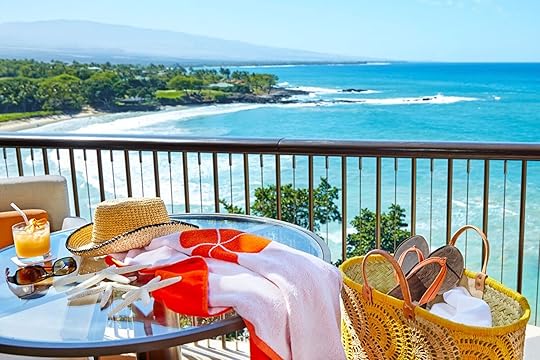 Photo: Mauna Kea Resort
Photo: Mauna Kea ResortHawaii Island, specifically Mauna Kea, provides stargazers with world-class clarity. The island’s elevation and geographic isolation result in incredibly clear skies. The conditions are so good that Mauna Kea houses some of the world’s most advanced astronomical observatories.
One of the best places to stay to experience the dark sky is Mauna Kea Resort. The resort is comprised of Mauna Kea Beach Hotel and nearby sister property, The Westin Hapuna Beach Resort. The companies have partnered with Star Gaze Hawaii to offer an extraordinary experience to stargaze at sea level with finely-tuned telescopes and highly-trained astronomers. Every Sunday, Monday, Wednesday and Thursday, guests are taken through an educational program touching on the star lore narrative on the history of astronomy.
Mauna Kea Resort : 62-100 Kauna’oa Drive, Kohala Coast, HI 96743
Book NowPrimland Resort, Meadows Of Dan, Virginia Photo: Auberge Resorts Collection
Photo: Auberge Resorts Collection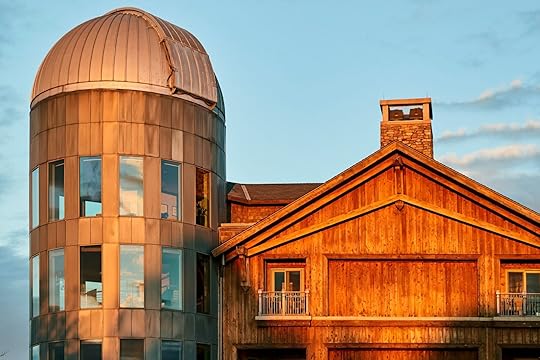 Photo: Auberge Resorts Collection
Photo: Auberge Resorts Collection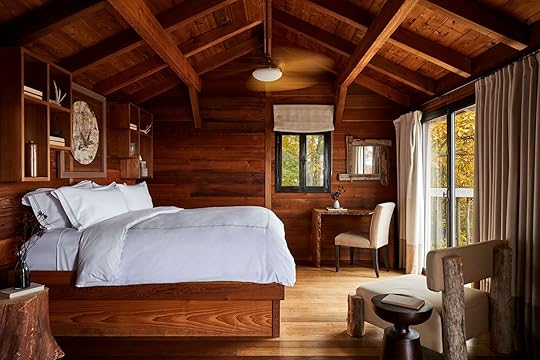 Photo: Auberge Resorts Collection
Photo: Auberge Resorts CollectionLocated on 12,000 acre estate in the heart of Virginia’s Blue Ridge Mountains, Primland Resort, is a year-round opulent mountain retreat. The five-star is an all-season outdoor playground. Regardless of the time of year you visit, there’s a wealth of activities from the outstanding kids’ club, championship level golf, fishing on the river in Kibler Valley, archery, clay pigeon shooting, craft cocktail evenings in the Tabacco Barn, to mountain biking on Old Appalachian Trail. A stay here is pricey, but it’s overall one of the best outdoor resorts in the US.
The accommodations don’t disappoint either. They range from pretty standalone cottages to log cabins and treehouses. Opting to sleep in the trees sounds absolutely magical. Due to the altitude of the estate and the clarity of the night sky, Primland is cloaked in a heavy blanket of stars. Take it in from the room or head to the resort’s fully-equipped observatory. There you’ll find the property’s Celestron CGE Pro 1400 and CPC 800 telescopes, and an on-site astronomer to help guide the session.
Primland Resort : 2000 Busted Rock Rd, Meadows Of Dan, VA, 24120
Book NowSage Lodge, Pray, Montana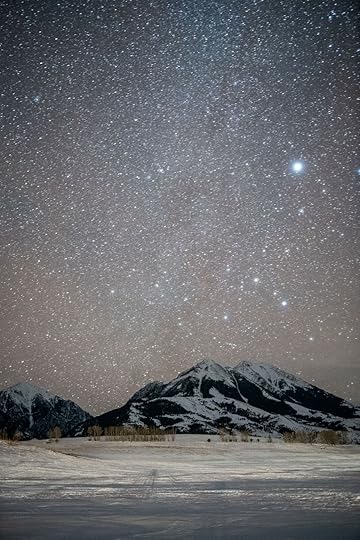
Photo: Sage Lodge
Montana is known as Big Sky country for a reason. One of the best places to take it in is Sage Lodge in Paradise Valley. Spanning over a mile of Yellowstone River, and just 35 minutes from Yellowstone National Park, the property is one of the top tier luxury resorts in Montana. It’s a perfect blend of organized outdoor sports (take your pick) and an upscale rural stay. Despite the level of exorbitance, it’s far from pretentious. The welcoming nature of staff coupled with the coziness of accommodations (from their standard rooms to private ranch houses) make for an un-fussy warm ambiance.
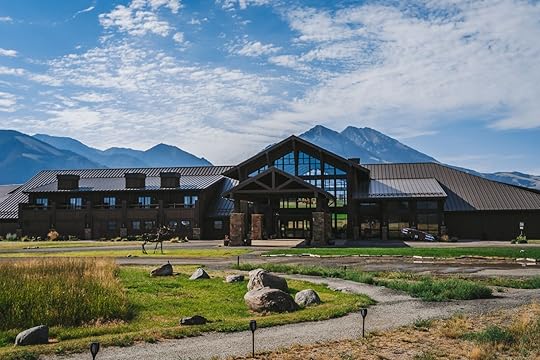 Photo: Sage Lodge
Photo: Sage Lodge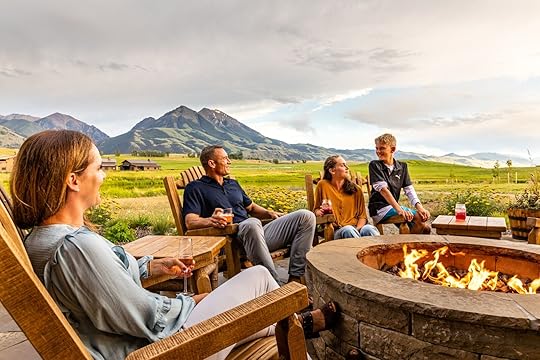 Photo: Sage Lodge
Photo: Sage LodgeParadise Valley is blessed with clean air and low light pollution making conditions here, some of the best in the state for star gazing. One of the most popular activities at the resort is the guided tour of the night sky with astrophysicist Dr. Thomas Rust. This program is suitable for new-bee stargazers and those who have prior experience and knowledge. Night sky activities are included in a stay at Sage and are held year-round.
Sage Lodge : 55 Sage Lodge Drive, Pray, MT, 59065
Book NowSummit at Big Bend, Terlingua, Texas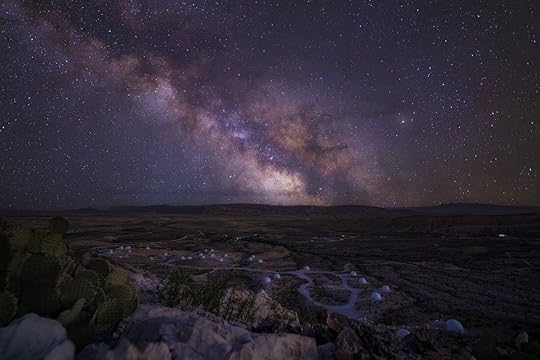 Photo: The Summit at Big Bend
Photo: The Summit at Big Bend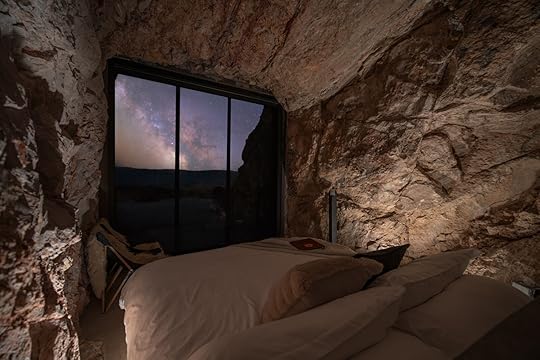 Photo: The Summit at Big Bend
Photo: The Summit at Big Bend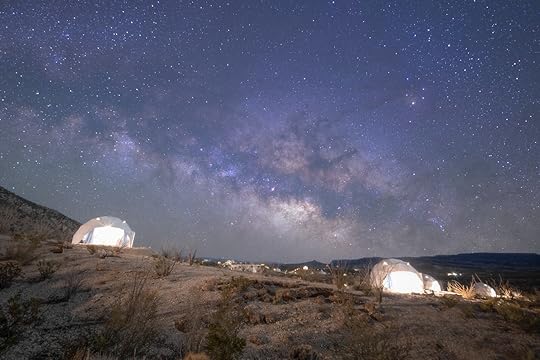 Photo: The Summit at Big Bend
Photo: The Summit at Big BendWith an unbeatable combination of luxury and natural beauty, the Summit at Big Bend glamping resort is the perfect destination for enjoying the night sky. Spread out over 1,000 acres of desert land, the Summit’s location is renowned for offering some of the best stargazing experiences in the lower 48 states.
The resort perfectly balances glamping with the amenities of a regular hotel. The most popular rooms are the luxury caves. The Summit is the only place in Texas offering fully furnished cave hotel rooms. The mountain retreats are located halfway to the summit of Tres Cuevas Mountain in Terlingua and look out over the pristine night sky. Another excellent way to immerse yourself in the wilderness (without compromising on comfort) is sleeping in one of the Summit Domes. These feature large bay windows that provide an unobstructed view of the Milky Way.
Summit at Big Bend : 2500 N Lone Star Mine, Terlingua, TX 79852
Book NowThe Inn at Death Valley, Death Valley, CaliforniaBuilt in 1927, The Inn sits in core of the Death Valley National Park. Over the years, it has seen a significant evolution, with a recent over $100 million renaissance bringing new life to the grande dame. Its design carries the charm of its original adobe-brick-and-stone architecture, while the recent renovations have restored it to its former glory that once attracted the likes of Marlon Brando and Clark Gable.
The resort, alongside the National Park Service, has taken measures to greatly minimize light pollution in the area. One of the major draws of the property is that it’s close to major cities in the Southwest, but remote enough to provide unobstructed views of the night sky.
It’s the perfect luxurious base if you are interested in attending one of the many stargazing events Death Valley National Park rangers hold in the winter and spring months. 
The Inn at Death Valley : Highway 190, Death Valley, CA, 92328
Book NowMore like thisAstronomyMapped: 60-Plus Dark Sky Parks Across the US for Ultimate StargazingThese Are the Top Airbnbs for Stargazing Across The US
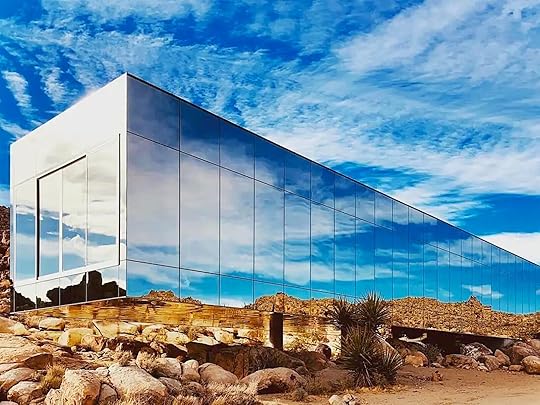
Regardless of how many passport stamps you collect, there’s something to be said for the simple joy of a pitch-black night sky swollen with stars. The beauty of astrotourism is that you may not even need to fly internationally to witness a celestial show. Many of the most luxurious stargazing resorts are located in North America while a growing curiosity for lunar events has seen a trend in backcountry cabins tailored for sky-gazing with moonroofs, telescopes, hot tubs, and Dark Sky lighting. Wish upon a star that one of these stargazing Airbnbs in the United States is available for your next trip.
Matador’s guides to the best of Airbnb Categories: 10 Remote, Off-The-Grid Airbnbs Where You Can Get Away From It All The 11 Most Beautiful Converted Churches You Can Stay in Around the World on Airbnb Airbnb Just Made Windmills a Category, and These 9 Have Us Planning a Trip Airbnb Now Has a Towers Category. These 9 Will Climb Your Bucket List Airbnb Launched a Tiny Homes Category, and We’re Already Planning Trips Around These 11 These Are the Coolest Properties in Airbnb’s New Play Category These Beautiful Accessible Properties Showcase the Best of Airbnb’s Adapted Category These Are the Most Impressive Listings in Airbnb’s New Trending Category These Unique Abodes Showcase the Best of Airbnb’s Top of the World Category
We hope you love these stargazing Airbnbs! Just so you know, Matador may collect a small commission from the links on this page if you decide to book a stay. Listed prices are accurate as of the time of publication.
The Invisible House – Joshua Tree, California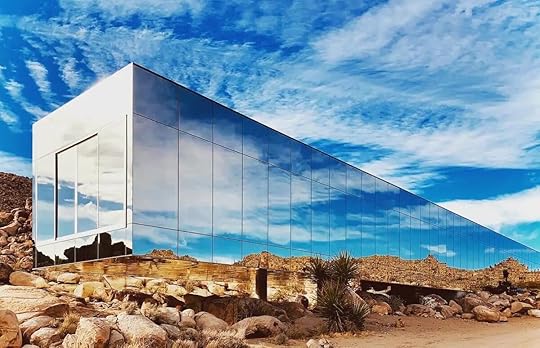 Photo: Airbnb
Photo: Airbnb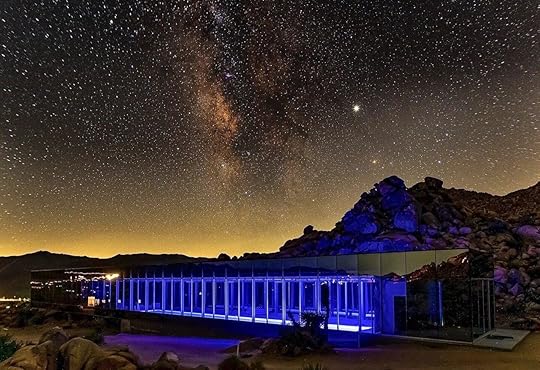 Photo: Airbnb
Photo: Airbnb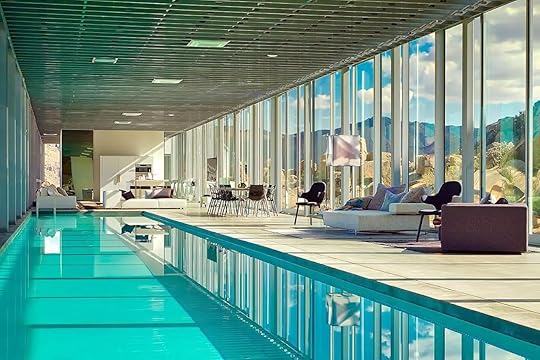 Photo: Airbnb
Photo: Airbnb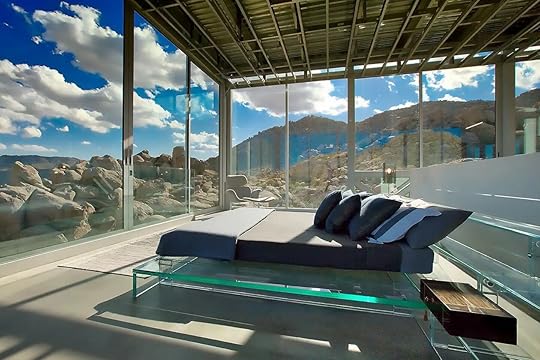 Photo: Airbnb
Photo: AirbnbSee more photos
No, your eyes aren’t playing tricks on you; this OMG Airbnb for stargazing is sheathed in mirrors that absorb and mimic the landscape. The heated indoor pool strikes a playful contrast with the desert environment and all rooms grant a clear view of the International Dark Sky Park. An Arteflame grill doubles up as a post-barbecue fire pit while internal lighting is customizable for moongazing. Five minutes from the national park and two hours from Los Angeles, this minimalist retreat is perfect for an impromptu weekend away.
Eight guests, three bedrooms
Price: $2,500 per night
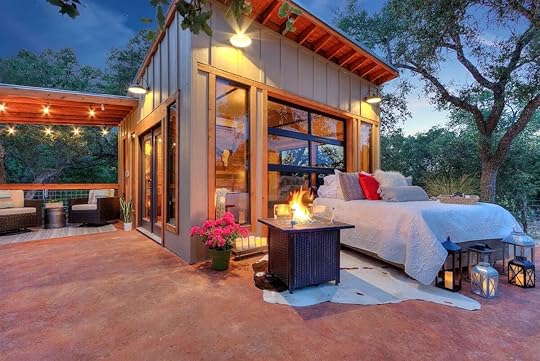 Photo: Airbnb
Photo: Airbnb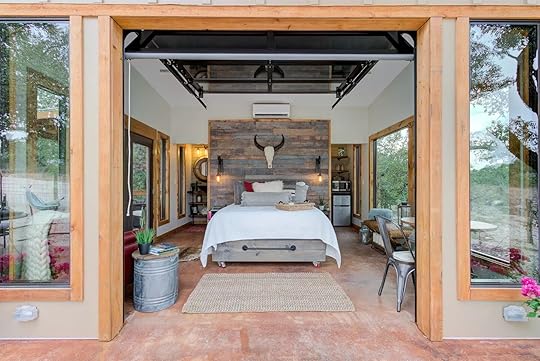 Photo: Airbnb
Photo: Airbnb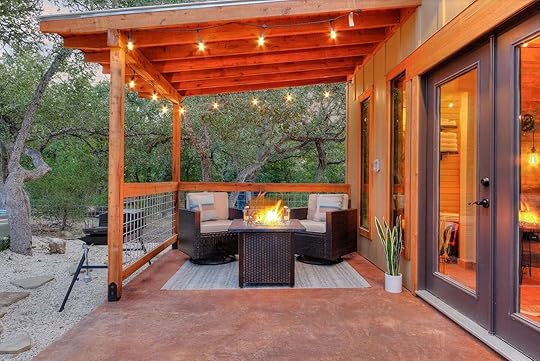 Photo: Airbnb
Photo: Airbnb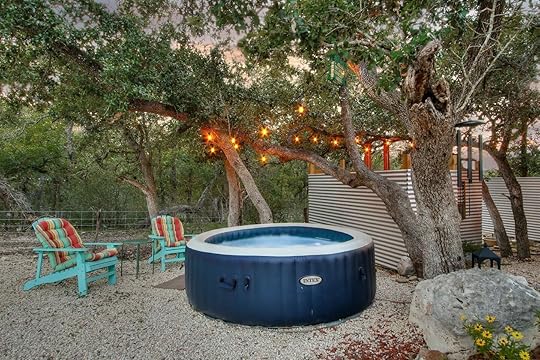 Photo: Airbnb
Photo: AirbnbSee more photos
Sleeping under the stars gets a revamp at this unique cottage on a longhorn cattle ranch in Texas Hill Country. The bed rolls out onto the patio in a jiffy but you can always opt for forty winks inside if you prefer. Crafted with ample windows, the tiny house smudges the line between indoor and outdoor living. A covered porch with a fire pit, private hot tub, double-headed garden shower, and secluded setting skyrocket this magical farm stay in the countryside.
Two guests, one bedroom
Price: $157 per night
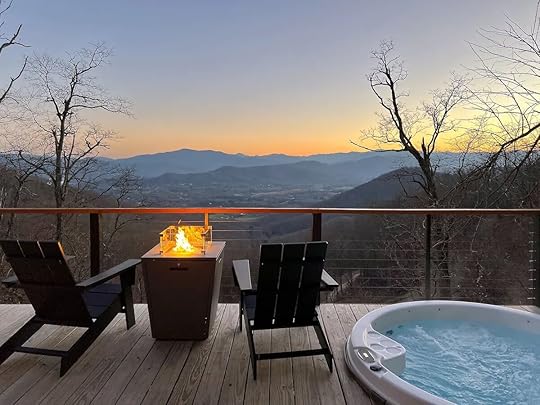 Photo: Airbnb
Photo: Airbnb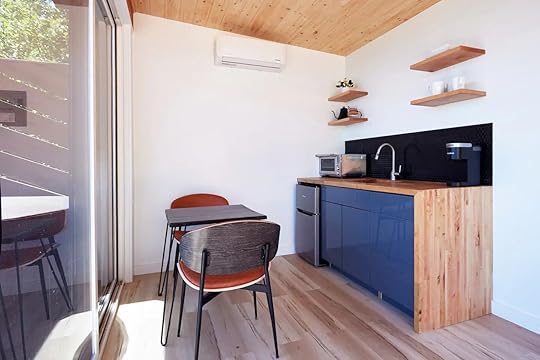 Photo: Airbnb
Photo: Airbnb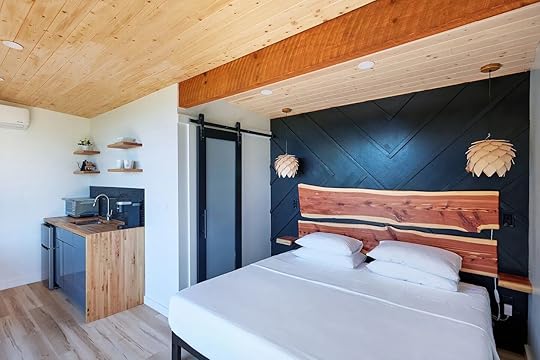 Photo: Airbnb
Photo: Airbnb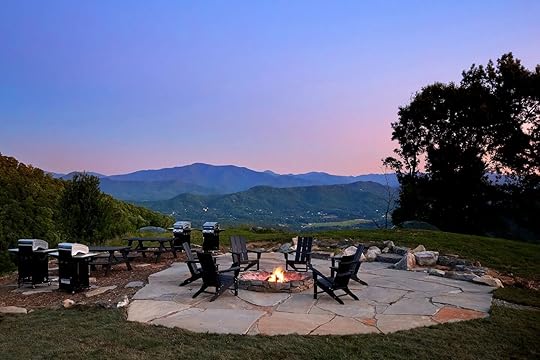 Photo: Airbnb
Photo: AirbnbSee more photos
High in the foothills of the Great Smoky Mountains, this stargazing Airbnb puts you closer to the heavens than Earth. Spend evenings in the sunken patio tub eying the constellations and hoping for a shooting star. The cedar-clad cabin is cocooned in the greenery and feels totally off the grid although communal picnic sites are a short drive or hike from the door. Wake up naturally to the mountain sunrise or pull down the blackout blinds to sleep off an astronomically late night.
Two guests, one bedroom
Price: $325 per night
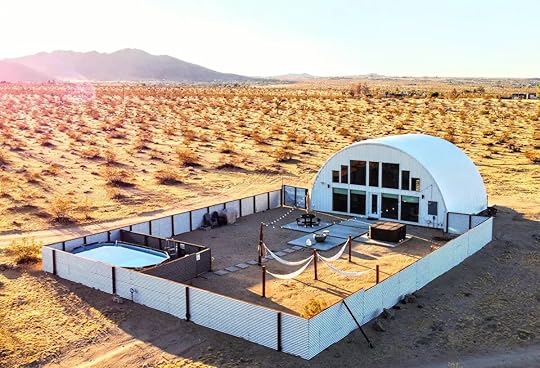 Photo: Airbnb
Photo: Airbnb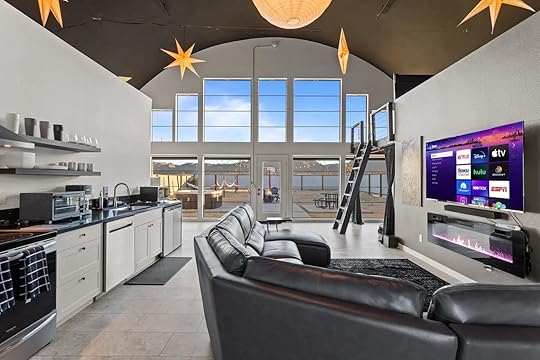 Photo: Airbnb
Photo: Airbnb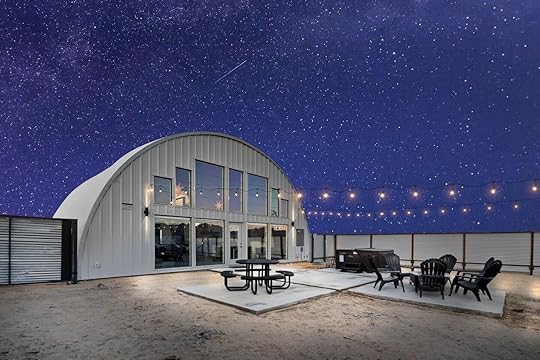 Photo: Airbnb
Photo: Airbnb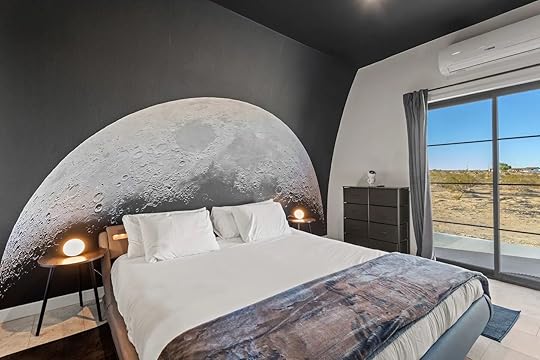 Photo: Airbnb
Photo: AirbnbSee more photos
An alternative Joshua Tree Airbnb for astronomists, Desert Moon is a stellar base for families and friendship groups. Sunlight and starlight trickle into the home courtesy of the 15-foot windows while the loft net provides a cozy nook for twilight missions. The child-friendly yard comes with a large swimming pool, hot tub, and hammocks beneath some of the darkest night skies in the US. And, if you run into cloudy evenings, the lunar decor guarantees a star-filled stay.
Six guests, two bedrooms
Price: $270 per night
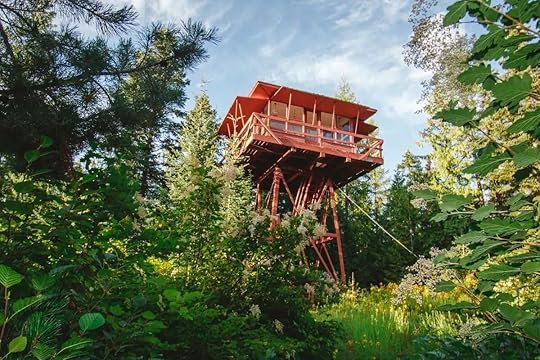 Photo: Airbnb
Photo: Airbnb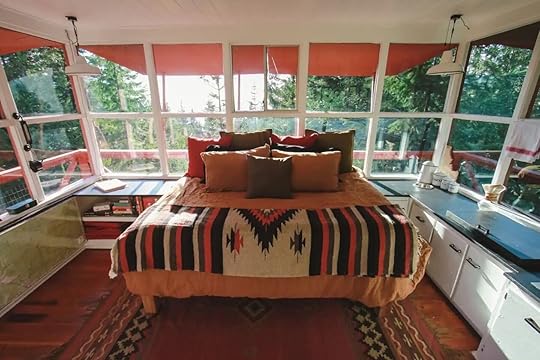 Photo: Airbnb
Photo: Airbnb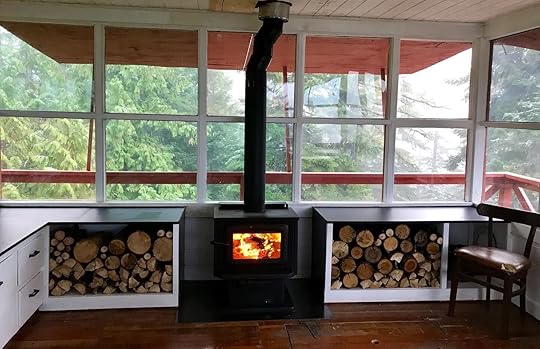 Photo: Airbnb
Photo: Airbnb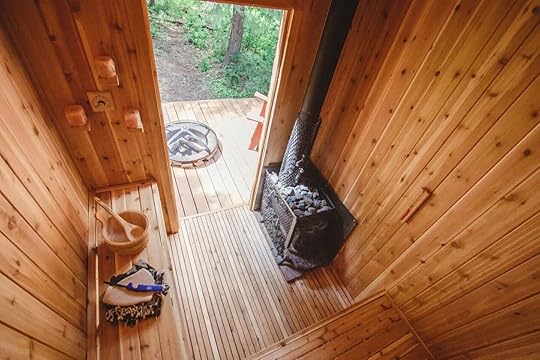 Photo: Airbnb
Photo: AirbnbSee more photos
Following hot on the heels of her Hobbit Hole and “potato” dwelling, Airbnb legend Kristie Wolfe turned her attention to remodeling this historic lookout tower. The Crystal Peak Lookout stuns with 360-degree views best enjoyed from the fireside or wraparound deck. There’s no Wi-Fi to distract you from the scenery as you chug artisanal coffee and plunder the trail mix bar in between sauna sessions. Winter travelers can tap on a snowcat transfer complete with steaming cocoa and hire of sleds.
Two guests, one bedroom
Price: $200 per night
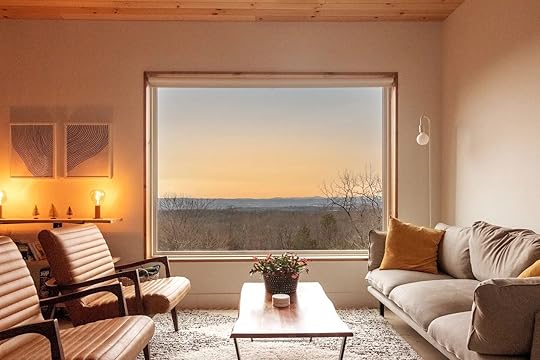 Photo: Airbnb
Photo: Airbnb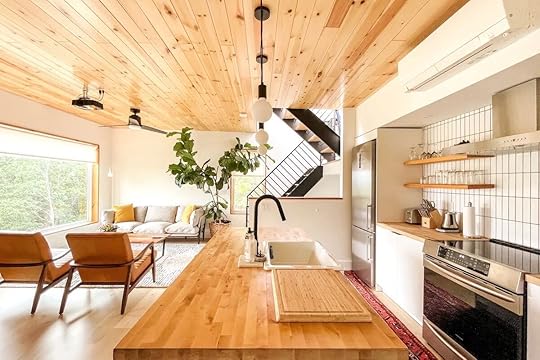 Photo: Airbnb
Photo: Airbnb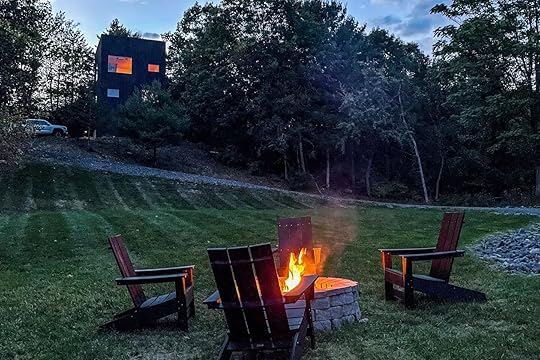 Photo: Airbnb
Photo: Airbnb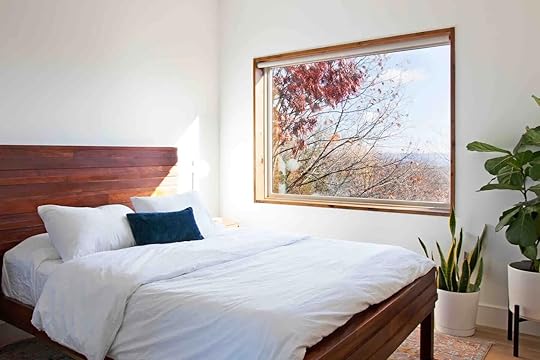 Photo: Airbnb
Photo: AirbnbSee more photos
Only two hours from New York City, this three-story tower features two en suite bedrooms – one of which comes with a soaking tub. Ideal for yoga and stargazing, the rooftop deck is accessible during summer whereas winter celestial wonders may be enjoyed from the picture windows in the third-floor lounge. A roomy backyard with a fire pit plus an infrared sauna are available year-round while sleek Wi-Fi makes this a top contender for remote workers or students.
Four guests, two bedrooms
Price: $469 per night
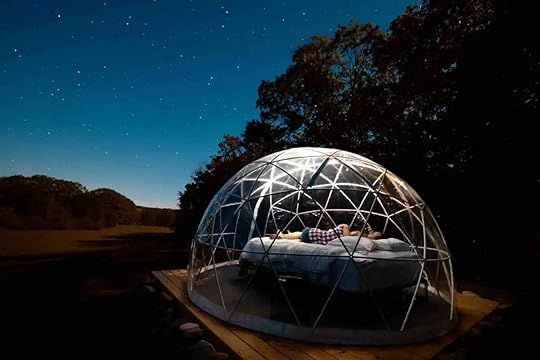 Photo: Airbnb
Photo: Airbnb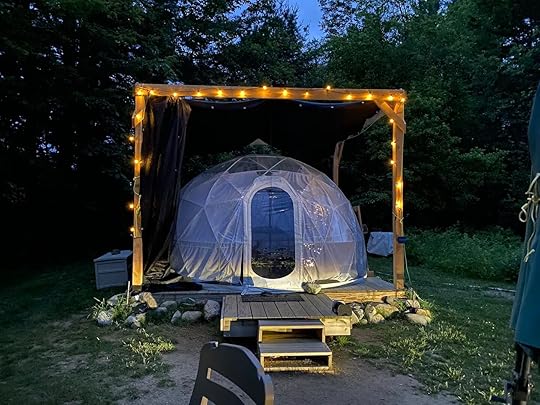 Photo: Airbnb
Photo: Airbnb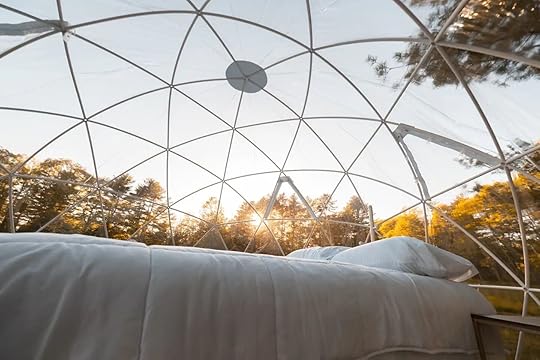 Photo: Airbnb
Photo: AirbnbSee more photos
One of three exclusive domes on MidCoast Maine, this dog-friendly Airbnb is halfway between Portland and Bar Harbor. Fully transparent, you can moongaze straight from the bed of your solar-powered pod or sit out by the fire pit. The dome is shaded in summer and heated during winter, with awesome sledding potential adding a low-season bonus. Other add-ons include kayaks, cookware supplies, and the use of a telescope and astronomy binoculars.
Two guests, one bedroom
Price: $136 per night
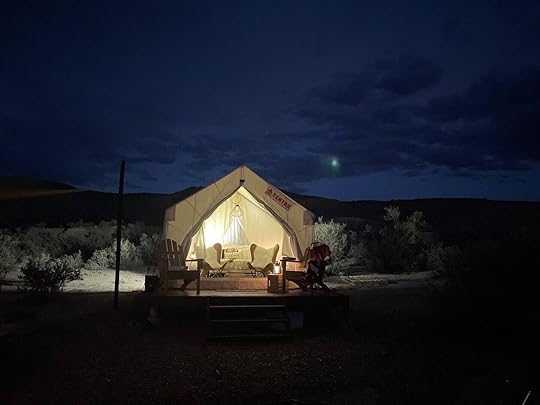 Photo: Airbnb
Photo: Airbnb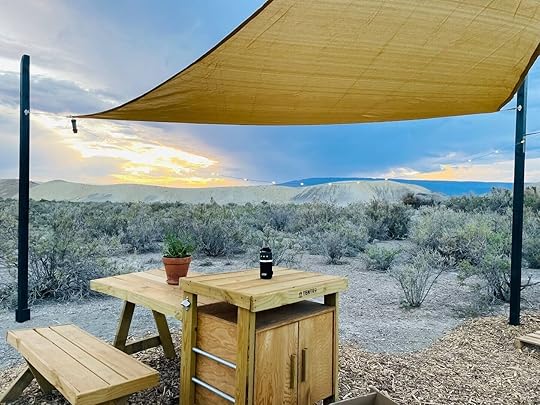 Photo: Airbnb
Photo: Airbnb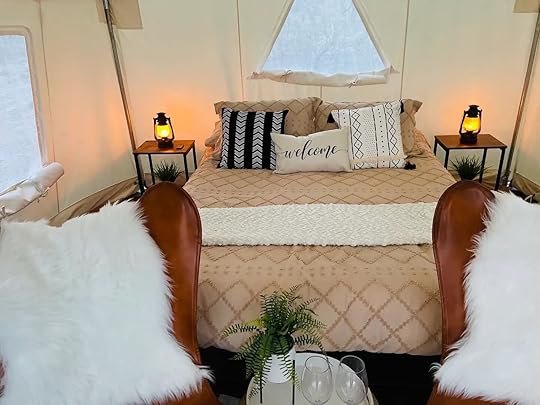 Photo: Airbnb
Photo: Airbnb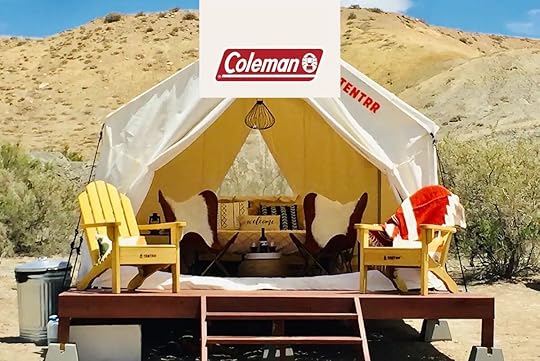 Photo: Airbnb
Photo: AirbnbSee more photos
One of the most adventurous Airbnbs for stargazing, this safari-style canvas yurt stands on a raised platform with Arondicks chairs for sunning and moon-bathing. The tent is cozily turned out with a memory foam mattress, scatter pillows, and fluffy throws while your personal shower is solar-powered. Bring plenty of campfire snacks and thermal layers for the evening and you’ll enjoy some of the twinkliest night skies in the US. The yurt is designed for a couple but larger groups are welcome to use a pop-up tent.
Six guests, one bedroom
Price: $159 per night
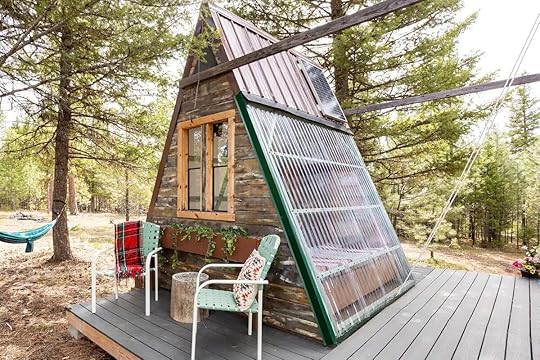 Photo: Airbnb
Photo: Airbnb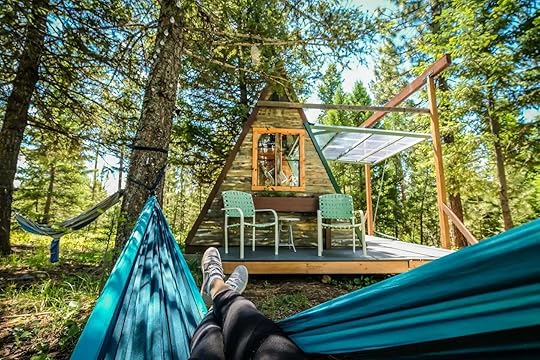 Photo: Airbnb
Photo: Airbnb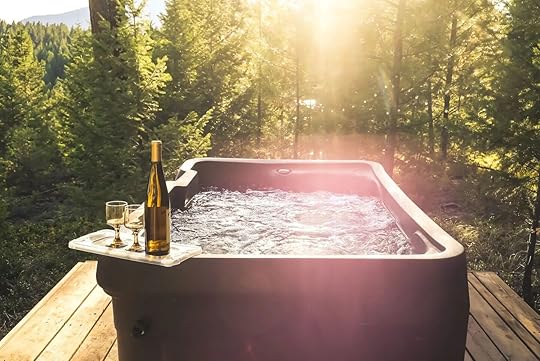 Photo: Airbnb
Photo: Airbnb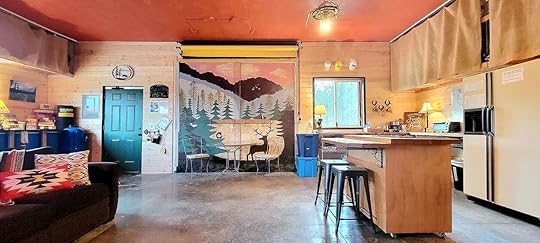 Photo: Airbnb
Photo: AirbnbSee more photos
Ease your way into the camping lifestyle at this remote A-frame cabin in the woods with a swing door. This is a pet-friendly Airbnb although pups must keep their distance from the roaming deer and elk. Spend days exploring the reserve’s hiking trails before sliding into the hammock as stars emerge high above. Ask the host about the scavenger hunt and remember to sign up for your daily dip in the hot tub. The communal kitchen has co-working spaces where you can check the forecast.
Two guests, two bedrooms
Price: $139 per night
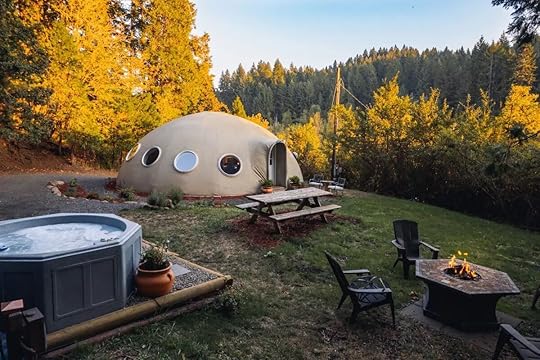 Photo: Airbnb
Photo: Airbnb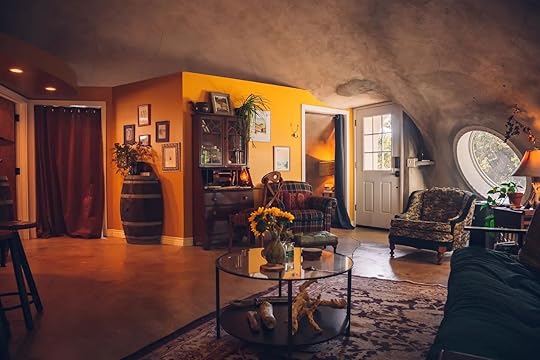 Photo: Airbnb
Photo: Airbnb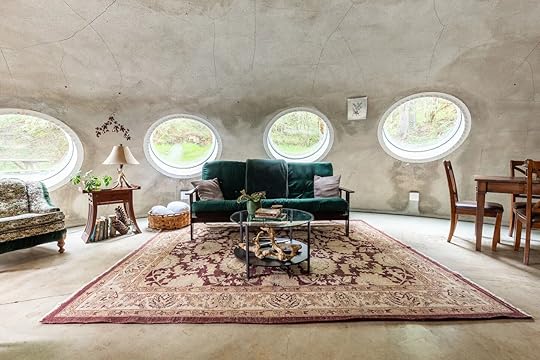 Photo: Airbnb
Photo: Airbnb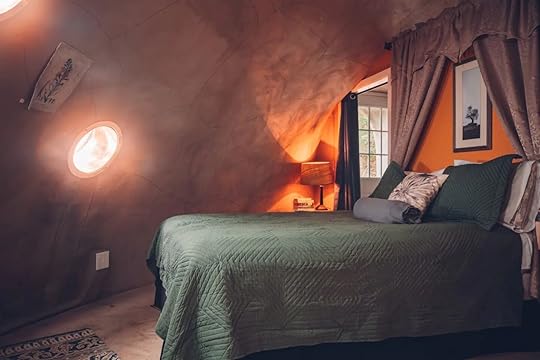 Photo: Airbnb
Photo: AirbnbSee more photos
This one-of-a-kind Airbnb for stargazing is a wizardly fusion of Hobbit Hole and dome elements. Porthole windows pool natural light into the open-concept living space by day and let you peek at the stars by night. The secluded yard is decked out with a hot tub and fire pit for unforgettable evenings charting the stars and sipping wine from the local cellars. There are tons of hiking trails to keep you entertained until sundown. Being right off the Lorane Highway means a four-wheel drive isn’t necessary.
Four guests, one bedroom
Price: $309 per night
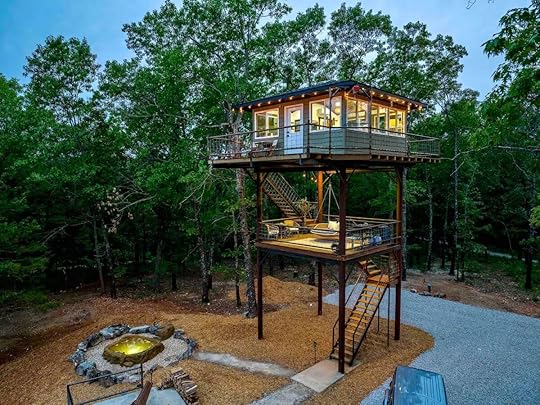 Photo: Airbnb
Photo: Airbnb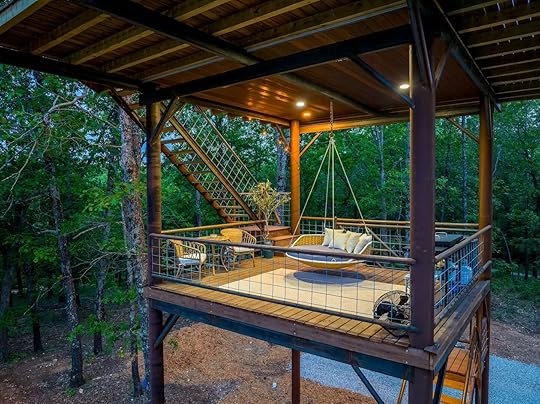 Photo: Airbnb
Photo: Airbnb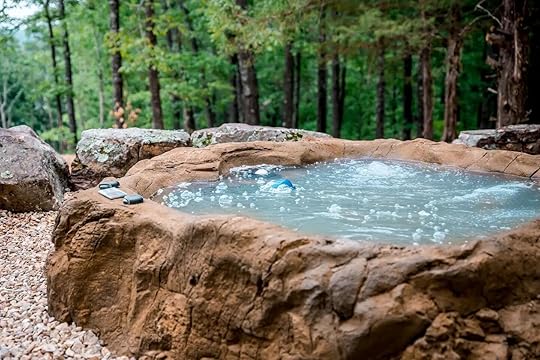 Photo: Airbnb
Photo: Airbnb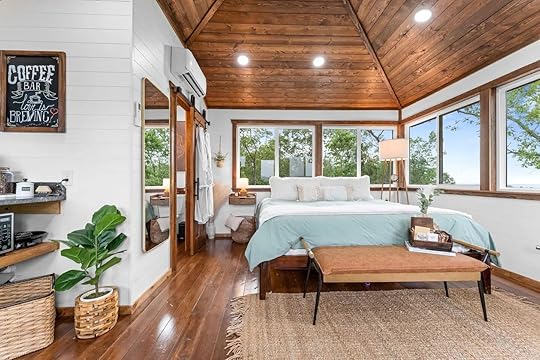 Photo: Airbnb
Photo: AirbnbSee more photos
Built in homage to the traditional fire towers, this private abode is surrounded by the Mark Twain National Forest. The king-size bed is outfitted with premium linens and sheets for comfy sky-gazing while the luxe bathroom is trimmed with gold fixtures. A lower terrace is appointed with a swing bed overlooking the natural rock spa bath, al fresco shower, and laundry room. Practical touches include a luggage winch to spare your back and a telescope for zooming in on the constellations.

Two guests, one bedroom
Price: $249 per night
All the Gear You Need To See Stars, Planets, and Meteor Showers in the Darkest Corners of the Country
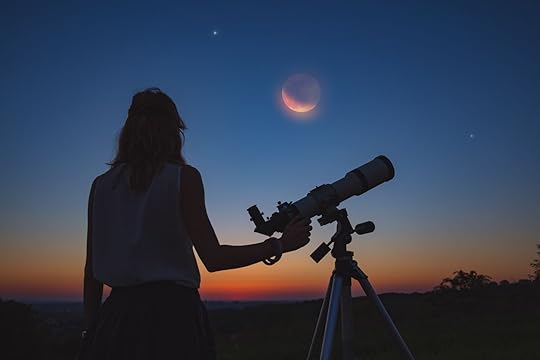
If conditions are favourable, you don’t need much for a simple astronomy exploration. However, it can be a lot more comfortable and rewarding with a little planning and some key items of stargazing equipment. There’s a few essential pieces that will dramatically change your experience in a dark sky area.
Visual aids such as a decent set of binoculars and a trustworthy telescope capture more light than human eyesight, helping you see deep sky objects and gather valuable data, and insights into the cosmos. A red light is vital to protect our scotopic vision and the surrounding environment from light pollution. Investing in a handheld torch or headlamp will dramatically enhance your experience under the night sky. Complement this tech with a star gazing app. There’s a few on the market, but those below have revolutionized engagement with the cosmos and made stargazing more accessible and enjoyable than ever before. Lastly, as well as packing comfortable clothing and all important snacks, you might consider investing in a stargazing tent. Many of these shelters offer unobstructed views through inbuilt windows giving you protection and freedom to camp and stargaze from anywhere.
You don’t need to spend a fortune on the basics, either. The stargazing equipment listed here has been selected for its value for money, award-winning design and quality, ease of use, and durability.
We hope you love the stargazing equipment we recommend! Just so you know, Matador may collect a small commission from the links on this page if you decide to purchase. Listed prices are accurate as of the time of publication.
Best binoculars for stargazingBest telescopes for stargazingHighest rated stargazing tentsAffordable and reliable red light torches and headlampsBest stargazing and astronomy appsBest binoculars for stargazingBinoculars provide a magnified view of celestial objects, allowing you to see finer details that may not be visible to the naked eye. If you’re not ready to invest in a telescope or need a light and compact alternative, getting a decent set of binoculars set will hugely enhance your stargazing experience. For those who are dipping their toe in, it’s worth considering a more affordable option such as the Celestron SkyMaster. They are also multifunctional, so you can use them for other hobbies too. The more expensive products listed here are an investment. But the hefty price tag comes with enhanced technology, top-tier manufacturing, and rave customer reviews.
Celestron — SkyMaster 15×70 Binocular [image error] [image error]Celestron’s SkyMaster binoculars are specifically designed for astronomical viewing. Perfect for a seasoned astronomer or a beginner, they are user-friendly and versatile.
The large 70mm objective lenses, allow for enhanced light-gathering capabilities. This means you’ll enjoy brighter and clearer views of celestial objects, including stars, planets, and even distant galaxies. With a powerful 15x magnification, you can easily spot details that would otherwise be missed with the naked eye. They’re built to provide comfort during extended stargazing sessions. The large aperture is complemented by multi-coated optics, which reduce glare and ensure optimal light transmission. The binoculars are equipped with long eye relief and twist-up eyecups, for those who wear glasses. There’s also a tripod adapter, allowing you to mount them on a steady surface or a standard camera tripod for more stable viewing.
Aside from astronomical observations, the binoculars are great for nature watching, and for attending sporting events or concerts.
Buy NowPrice: $109
Canon 10 x 42 L Image Stabilising Water Proof Binoculars [image error] [image error]This model offers exceptional performance and unrivaled clarity to help you explore the night sky. One of the standout features of the Canon 10 x 42 L Binoculars is their revolutionary image stabilisation technology. Even the slightest hand tremors are compensated for, providing you with a steady and rock-solid view of the stars. Another great aspect is the ergonomic design that ensures comfortable handling. The compact size and lightweight construction also make them easy to carry and maneuver, allowing you to effortlessly observe celestial objects without straining your arms or neck. The generous 42mm objective lens rival those found in a professional telescope and allow for intricate details and vibrant colors.
Buy NowPrice: $1,299
Celestron 71336 Nature DX 12×56 BaK-4 Prism Binoculars [image error] [image error]The Celestron 71336 Nature DX 12×56 binoculars were designed for outdoor enthusiasts. They feature a rugged and durable construction, with a rubber-armored exterior that provides a secure grip and protects against accidental bumps and drops. They are 100 percent waterproof and purged with nitrogen gas to further prevent fogging and ensure crystal-clear views. Despite their powerful magnification they and are relatively lightweight. However the higher magnification may require additional stabilization techniques when observing without a tripod. The mid-range price offers excellent value for their quality and performance, making them an affordable option for beginners who seek high-quality binoculars without breaking the bank.
Buy NowPrice: $268
Nikon Monarch HG 10×42 [image error] [image error]The Nikon Monarch HG 10×42 binoculars are designed to elevate your stargazing experience with their top-notch features, impressive performance, and comfortable design. They feature rubberized panels that provide a secure grip, ensuring stability even in challenging weather conditions. When it comes to optics, the Nikon Monarch HG 10×42 binoculars truly shine. Equipped with a 10x magnification power and 42mm objective lenses provide outstanding optical clarity. The Monarch falls within the higher end of the market. However, when considering their superior performance, durable construction, and excellent customer ratings, they are a solid investment.
Buy NowPrice: $1,227
Best telescopes for stargazingDedicated astrophotography telescopes offer specialized features, such as larger apertures and tracking systems, optimized for capturing stunning deep-sky images. Whether you’re exploring space from home or from a dark sky zone, adding a telescope to your gear will completely change your viewing experience.
You might think an investment like this might be risky until you’ve fully committed. But astronomy doesn’t have to be an expensive hobby. There are plenty of affordable telescopes that deliver impressive performance for beginners. While it’s important to consider your budget, remember that quality matters too. The telescopes below strike a balance between affordability and excellent functionality.
Celestron — AstroMaster 130EQ Newtonian Telescope [image error] [image error]The Celestron AstroMaster 130EQ is perfect for beginners, but it’s still mighty. It has a powerful aperture and a precision-crafted reflector optical system. This combination allows for exceptional light-gathering capabilities, enabling you to observe celestial objects with stunning clarity. With the 20mm and 10mm eyepiece, and a finderscope, you’ll be able to explore craters on the Moon, the rings of Saturn, and distant galaxies. The package also includes a StarPointer red dot finderscope, which simplifies the process of locating and centering objects in the night sky. These accessories cater to beginners and with Celestron’s Starry Night Software (one of the premier astronomy software package on the market,) this package offers a great starting point for astronomical exploration.
Buy NowPrice: $299
Skywatcher Explorer — 130M 130mm (5.1″) f/900 Motorised Newtonian Reflector Telescope 10713 [image error] [image error]The Explorer — 130M is an excellent choice for both beginners and intermediate astronomers. Its user-friendly design and motorized functionality make it accessible to newcomers, while its impressive specifications cater to more experienced users. This is the best overall model on the marketing and caters to a wide range of astronomical interests. Crafted with precision and attention to detail, this telescope features high-quality materials that contribute to its overall sturdiness and it can easily be paired with various astronomy accessories and equipment, from smartphone adapters for astrophotography to filters for enhancing specific celestial features.
Buy NowPrice: $264
Celestron 22403 Inspire 100AZ Refractor Smartphone Adapter Built-In Refracting Telescope [image error] [image error]With its exceptional design, impressive features and accessorise, and built-in smartphone adapter, the Celestron Inspire 100AZ is a fantastic telescope that is affordable and straight forward to set up and use. Its intuitive controls and smooth focusing mechanism ensure a hassle-free stargazing experience. Celestron are championed for entry-level telescopes that don’t break the bank. This and the AstroMaster 130EQ excellent, reliable options for those keen to learn more about our dark skies.
Buy NowPrice: $359.95
Highest rated stargazing tentsOne of the best ways to enjoy the night sky is from lying on your back and simply looking up. Changeable weather and other environmental factors (we’re looking at you mosquitoes) can make that a little uncomfortable. Fortunately, there are several tents on the market with large inbuilt windows and even some that are completely transparent.
Kelty Dirt Motel two Person Lightweight Backpacking and Camping Tent [image error] [image error]The Kelty Dirt Motel comfortably accommodates two people, making it perfect for cozy camping or stargazing trips with a partner. It’s lightweight and designed with backpackers in mind. It won’t break your back as you venture into the wilderness, and it packs down into a compact size, allowing for easy storage in your backpack. On a dry night, you can easily roll back the waterproof flysheet (or take it off entirely) and take in the night sky.
Buy NowPrice: $359.95
MSR Hubba Hubba NX Tent [image error] [image error]Whether you’re an experienced camper or a novice adventurer, Hubba Hubba NX’s easy set-up means less time spent fumbling with poles and more time sorting out your stargazing gear. The flysheet also rolls back on this model to reveal a window. There are two small porches for small essentials such as headlamps, phones, and other items you want to keep within reach while inside the tent. If you require more space, you can purchase an add-on separate gear shed which you can attach to the entrance.
Buy NowPrice: $572.71
Alvantor Bubble Tent Pop Up [image error] [image error]This innovative tent offers a clear bubble design that allows you to fully immerse yourself in the beauty of the night sky while providing protection and comfort. With no assembly required (it simply pops up), you can set up this tent in minutes. As it is transparent, you may not feel comfortable to sleep over night or store expensive equipment, but it’s great for a party and is large enough to fit a small group of adults.
Buy NowPrice: From $345.95
Affordable and reliable red light torches and headlampsUnlike white light, red light has a longer wavelength, making it less disruptive to our eyes in low-light conditions. When you use a red light source, you can navigate charts, adjust telescopes, and read astronomical guides without compromising our night vision.
Celestron Night Vision Flashlight [image error] [image error]This flashlight is a game-changer in the world of stargazing and outdoor exploration. Its adjustable red illumination, coupled with its portable design and extended battery life, ensures that you can observe the night sky with enhanced visibility and minimal disturbance.
Buy NowPrice: From $16.99
Nitecore NU25 [image error] [image error]The Nitecore NU25 is a rechargeable head torch with a red light and offers both high and low brightness modes, making it suitable for stargazing. It provides reliable illumination while preserving night vision.
Buy NowPrice: From $36.95
Fenix HM70R Headlamp [image error] [image error]Fenix offers a range of durable headlamps perfect for stargazing adventures. Their high-quality lighting ensures clear visibility, while the hands-free design enhances convenience. This model is an investment but it has offers three lights in one. Its triple output of white, neutral white, and red light means you can use your Fenix for multiple outdoor adventures. The headlamp also has fast charge via USB-C, a 180 degree tilt adjustment, and 203 yards max throw.
Buy NowPrice: From $100.45
Best stargazing and astronomy appsStellarium PLUSKey Features: Stellarium PLUS provides a real-time view of the stars, planets, and constellations based on your precise location. It offers a vast catalog of over 1.69 billion stars and over 10,000 asteroids. The app also includes interactive features such as telescope control (simulating what an object will look like through a specific telescope), and celestial events notifications.
Compatibility and pricing: Stellarium PLUS is available for purchase on both Android and iOS platforms. The app requires a one-time payment, offering a lifetime license to access all its features. This costs $18.99.
Download for AndroidDownload for iOSGoSkyWatch PlanetariumKey Features: GoSkyWatch Planetarium offers a seamless augmented reality feature, allowing you to point your phone towards the sky and instantly identify stars, planets, and constellations. The app provides detailed information about celestial objects and offers a time-lapse function to witness the motion of the stars and planets.
Compatibility and pricing: GoSkyWatch Planetarium is exclusively available for iOS devices, providing a tailored stargazing experience for iPhone and iPad users. It offers a one-time payment model of $3.99.
Download for iOSHeavens-AboveKey Features: Heavens-Above is a comprehensive app that caters to both casual stargazers and serious astronomers. Offering a wealth of information and tracking capabilities, it’s a valuable tool for exploring the night sky. The app allows you to track satellites, the International Space Station (ISS), and even find out when they will pass over your location. Additionally, it provides detailed sky charts, astronomical events data, and information about upcoming rocket launches.
Compatibility and pricing: The app is free to download. There maybe options to pay for an upgrade to avoid in-app adverts.
Download for AndroidSky GuideKey Features: Sky Guide stands out as an elegant and user-friendly stargazing app designed specifically for iOS devices. With its polished interface and extensive features, it has garnered high praise from astronomy enthusiasts. The app utilizes your device’s sensors and location data to provide an augmented reality view of the night sky. It offers a rich collection of celestial objects, including stars, planets, and deep-sky objects, accompanied by detailed information and beautiful visuals.
Compatibility and pricing: Sky Guide has been designed for iOS devices. The basic version is free with available upgrade options. 
The 7 Best Apps for Stargazing and Astronomy To Download Right Now
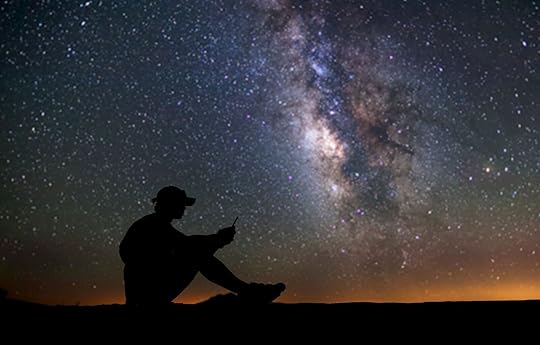
The vast expanse of the cosmos has long captivated human imagination and curiosity. And thanks to advancements in technology, astronomical observation has evolved from being a practice limited to only a few members of a society with access to expensive tools to something accessible to anyone with a smartphone. In the era of mobile apps, when people spend more time looking at their phones than ever before, it’s nice to use your phone for something that actually helps you better connect to nature.
The best apps for stargazing bring the planetarium to you. Nearly all stargazing apps use augmented reality and your phone camera to show you in real-time what stars, constellations, planets, and more are in the sky above you. Just point your phone at the sky and boom — the collective human knowledge gained over thousands of years of studying the sky is at your fingertips. The best apps for stargazing blend high-tech with beautiful graphics and easy-to-use interfaces.
If you’re planning on learning a bit more about the vastness of space, check out the best apps for stargazing below. Some are dedicated just to stargazing, while others are useful apps that’ll make the overall experience of being outdoors at night a little more fun and educational (and safe).
The best apps for stargazingStarChart
Photo: StarChart on the App Store
Perks: Lost of content on free version, easy to use, real-time ARDownload: For iOS and GooglePlayCost: Free, with optional upgradeStarChart is a good first app to download if you want a free app with the ability to help you identify constellations, satellites, planets, and more. Like most of the best apps for stargazing, it uses augmented reality, called AR, to help identify the constellations based on the location of your smartphone. Just point your phone at the part of the sky you want to identify, and StarChart will tell you what’s what, from constellations to individual stars and more. You can even point it straight down and see what constellations are on the other side of the earth at any given point. Tap on objects and stars to learn more, or use the search functionality to find specific celestial bodies by name.
It has paid features, but for most casual stargazers, the free version should be plenty.
Night Sky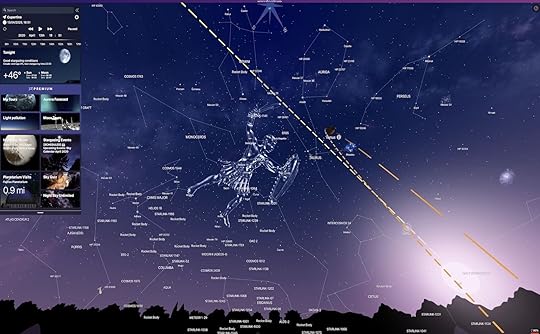
Photo: NightSky on the App Store
Perks: Personalized stargazing forecasts, very detailed, multiple AR viewing optionsDownload: For iOS and GooglePlayCost: Free, with optional upgradeNight Sky is one of the most popular apps for stargazing, mostly because of the high level of detail and different categories of objects you can see with the free app, including meteor showers, stars, greek constellations, and deep space objects. It also has a fairly in-depth local stargazing forecasts based on wherever you are, which will rate the overall stargazing conditions, advise on the best time of night for sky watching, provide setting and rising times for planets, forecast the visibility and cloud coverage, and more. It’s also one of the best free apps for stargazing if you like being in the know for planetary events, since it has a built-in news feed to show you relevant astronomy-related news. You can even look at close-up 3D models of satellites and planets.
The main downside is that some of the app’s more creative features, like aurora viewing forecasts and guided night sky meditations, require an upgraded membership. It’s also only available for Apple users, but Android phone users can find similar features in the Stellarium app.
Light Pollution Map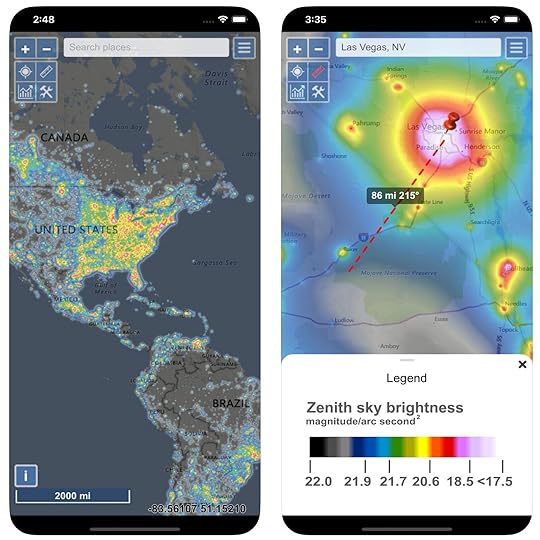
Photo: Light Pollution App on the App Store
Perks: GoogleMaps-based data, can overlay cloud and aurora forecastsDownload: For iOS and GooglePlayCost: $4.99It’s super cool to be able to point your phone at the sky and learn what stars you’re looking at, but it’s a lot cooler to be able to actually see them. That’s what makes the Light Pollution App one of the best apps for stargazing. The app uses your location to identify the best dark-sky spots near you, showing you areas with less light pollution. That makes it easy to figure out where you should go for the best chance of seeing events like meteor showers, especially if you’re in a new place you don’t know as well.
The downside of this app is that it costs $4.99. However, there’s a work-around: if you have cell service or are on Wi-Fi, you can go to the app website and use the interactive world map for free — looks like the western US is the place to be to maximize your stargazing.
StarWalk 2
Photo: StarWalk 2 on the App Store
Perks: Night mode, future/past mode, AR mode, astronomy calendar, infrared modeDownload: For iOS and Google PlayCost: free ($5.99 without ads)StarWalk takes the basic premise of a stargazing app — being able to use your phone camera to identify stars in real-time using AR — and kicks it up a notch by adding another variable: time. Curious what the constellations were visible on your birthday? On your wedding day? A week ago? Or wondering where they’ll be a month from now? Move the “time machine” slider, and voila. You can also look at the sky through different wavelengths to “see” objects you’d never be able to spot with a plain ol’ human eyeball.
StarWalk also has a built-in “Night Mode” to make it easier on your eyes to switch between staring at the dark sky and staring at your phone. It even has a built-in feature where you can turn on peaceful music, which sort of makes it feel like you’re at an observatory watching an astronomy presentation.
You get the same features on the free and paid version, but the paid version ($5.99) removes all the ads, which can be a little annoying.
Other useful stargazing-related appsMerlin Bird ID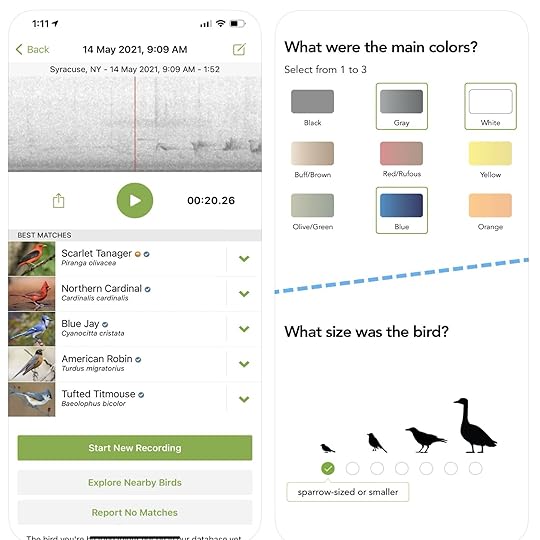
Photo: Merlin Bird ID on the App store
Perks: Free, bird song identification, bird tracking database, photo identificationDownload: For iOS and GooglePlayCost: Totally freeOne of the best parts about stargazing is how connected you’ll feel to your surroundings, especially when you’re laying in the dark. And while you’re staring up at the sky, you’ll probably find your other senses a little heightened, which means you may notice sounds around you more — like bird calls. The Merlin Bird ID app lets you record a bird sound, then uses that recording to identify the species.
You can also upload a photo of a bird and let the built-in AI identify it for you, or use the in-app quiz to answer a few questions about the bird you saw and get suggestions of what it may have been. If you want, you can report your sighting to the Cornell University Department of Ornithology, which created the app. It uses data submitted by users to study and predict bird patterns and behaviors, which is vital for protect bird habitats and populations.
The app is pretty cool, and totally free. The only real downside is that you have to download regional packs — so if you live in California but travel to southern Africa, the app won’t be able to identify birds around you unless you’ve downloaded the South Africa pack. All packs are free, but they take up a lot of space on your phone (more than 1 gig, for the North America pack).
AllTrails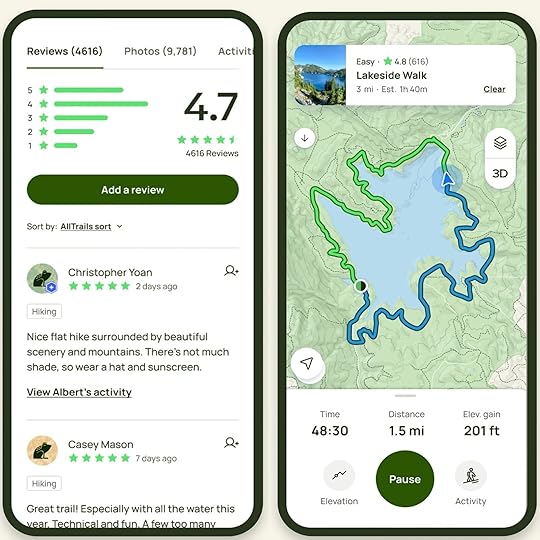
Photo: AllTrails on the App store
Perks: Turns your phone into a GPS tracker, extremely thorough database of hikes with useful stats, trail reviewsDownload: For iOS and GooglePlayCost: Free, or $35 annual membershipIf you’re planning on any type of hike to get to your stargazing location, you need a wayfinding app. Even a short trail can be hard to follow in the dark, especially if it was bright out when you left the trailhead. AllTrails is a very comprehensive database of hiking trails across the world, and having it on your phone is a no-brainer when it comes to not getting lost. You can download maps for offline use, track your route (and use that to find your way back), get details about hike distances and elevation gains, and search trails by factors like “dog-friendly” or “great views.”
The basic app is totally free, but the pro version (about $35 per year) offers offline real-time route tracking and a useful alert feature that can send a message to anyone of your choosing if you don’t reach a certain point by a certain time. While it may be a stretch to call it one of the best apps for stargazing, it’s definitely the best app for finding your way to remote stargazing locations.
NightCap Camera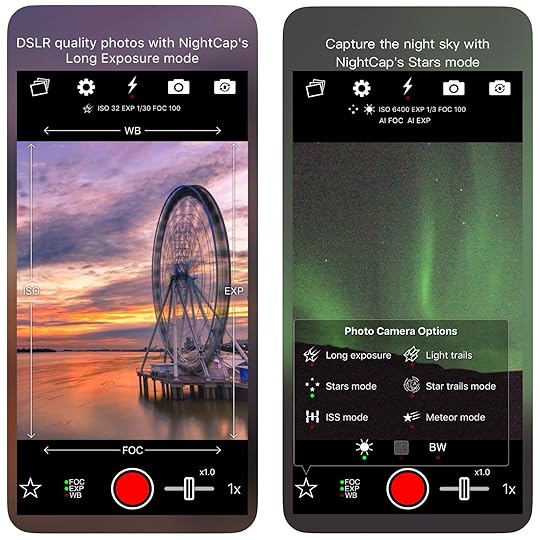
Photo: NightCap Camera on the App Store
Perks: Several modes for night shooting, star-specific modes, AI photo optimizationDownload: For iOS onlyCost: $2.99Nowadays, cell phone cameras are pretty capable, and most recently sold smartphones have some version of a night-mode camera. However, the photos you’ll get on night mode still aren’t as high quality, especially considering you often have to hold your hand steady for an extended exposure. That’s why NightCap Camera is possibly the best app for stargazing if you want to photograph what you see. It’ll automatically adjust your phone settings and advise on how to get the best low-light shots. It has several modes, including four just for astrophotography: one for photographing star trails, one for shooting stars, one for stars and the aurora borealis, and even one for trying to shoot satellites.
The most obvious downside is that it isn’t free. But at $2.99, it’s probably worth it just for one night of stargazing. It’s also only for iOS, though apps for Android users like ProCam X have fairly similar features. 
More like thisAstronomy11 of the Best Campgrounds for Stargazers in the United States
What It’s Like To Take a Cross-Country Astrophotography Odyssey by Van
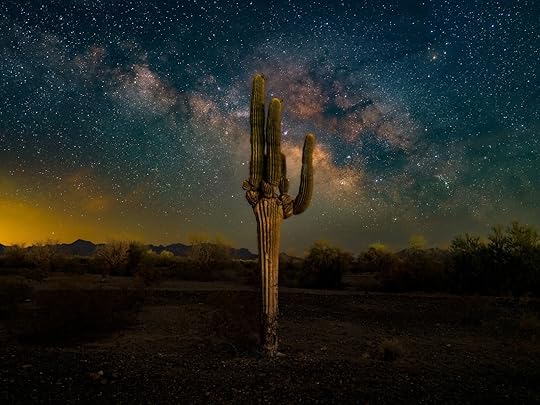
Taking a year off and traveling cross country is a dream many never actually get to live out. Those who procrastinate, and explain away their road trip reluctance, often do so by citing real-life responsibilities and jobs. Taking a year-long vacation would mean neglecting a career. But what if you could do both? That’s what aspiring astrophotographer Anthony DeSantis did when he embarked on a one-year vanlife trip across the US — in a van he built himself — with the goal of turning his passion into a career.
DeSantis first became interested in astrophotography in 2017 during a trip to Iceland. “One night there happened to be some Aurora activity,” he told Matador Network, “and though I really had no idea how to photograph the night sky or even what astrophotography was, I couldn’t help but grab my little point and shoot camera and take a picture. It wasn’t until the summer of 2019 that I successfully captured my first image of the Milky Way. I was immediately hooked.”
View this post on InstagramA post shared by Anthony DeSantis (@antwithacamera)
To learn more about the craft, DeSantis would make weekend trips to Acadia National Park in Maine — from his home in Haverhill Massachusetts — in pursuit of the dark skies necessary for good astrophotography. The only issue? “The distance I needed to travel, finding a place to sleep after shooting, the cost of these excursions, and the infrequency that I could make it happen,” always seemed to get in the way. It’s also difficult to plan an astrophotography trip in advance, since clear, dark skies are essential, you need to make sure that the moon phase will give you enough time to shoot before moonrise or after moonset.
“The opportunities to get to truly dark skies on the East Coast, where I’m from, are pretty few and far between,” DeSantis said. “Out west, they’re pretty abundant. For a long time I’ve wanted to take a trip there to shoot astrophotography, but it wasn’t until the pandemic happened that I really started thinking about buying a van. So I sold my house, bought a van, and started building it into my mobile astrophotography studio.”
View this post on InstagramA post shared by Anthony DeSantis (@antwithacamera)
Indeed, having an astrophotography travel hobby and quitting your job to pursue that full time are two very different things. The first hurdle was building out what would become his home for the next year. According to DeSantis, the good thing about vans is that they can be purpose built to fit your exact needs. The bad thing, however, is that purpose-building a van can take quite a long time, and come with many unexpected hurdles. In his case, it took a year and a half.
View this post on InstagramA post shared by Anthony DeSantis (@antwithacamera)
“My key must-haves for the van were a bed, a desk space, a toilet, ability to cook and wash dishes, and a solid electrical system,” he said. “Building out a van was a much bigger task than I imagined. There were so many things to learn along the way. I had a lot of experience with tools, but never with projects like building a cabinet. I’d say the biggest challenge was the electrical system.”
Ultimately, the work paid off, and DeSantis was ready to hit the road in a van that looks like it was built by a professional vanlife rental company.
View this post on InstagramA post shared by Anthony DeSantis (@antwithacamera)
While part of the thrill of a cross-country road trip is the spontaneity, planning is still involved. That’s especially important for astrophotographers, as dark sky destinations need to be identified and visited during peak Milky Way season.
“I had a general idea of places I wanted to go and a rough idea of what time of year,” he said. “For example, I wanted to get my desert locations done in spring to avoid being in the desert in the peak of summer while I’m living in a metal box. But I’ve had to make a lot of travel decisions on the fly. It’s nearly impossible to plan a whole year in detail. The most important destination factor, of course, is dark skies.”
View this post on InstagramA post shared by Anthony DeSantis (@antwithacamera)
DeSantis explained how dark skies are ranked using the Bortle Scale, which goes from one to nine (one being the darkest and nine having the most light pollution). He always tries to shoot in skies that are a Bortle class one to three.
“The next most important thing,” he says, “is your foreground subject, and if it’s possible to take a picture with the Milky Way behind it. Since the Milky Way is found in the southern skies, if you find an interesting subject or foreground but it faces north, you’re going to have to find another spot. For example if you wanted to take a photo of the Milky Way core over the Grand Canyon you’d have to go to the north rim of the grand canyon rather than the south.”
View this post on InstagramA post shared by Anthony DeSantis (@antwithacamera)
For many (maybe most), vanlife isn’t about pursuing a profession at all. It’s about the experience — both social and scenic. And that experience isn’t always how it looks on Instagram. One of the biggest challenges for DeSantis was loneliness. When you’re on the road for several months, disconnected from your friends and family back home, it’s natural to feel isolated.
“If it weren’t for frequent phone calls with friends, family, and especially my girlfriend back home,” he says, “I might have ended the trip early. I’ve met some great people on the road but they’ve been fairly few and far between. One month, my only in-person socialization was with people working the register at stores when I was stocking up on food or buying gas. I found myself foregoing the self check-out just to have a little human interaction.”
So, is the headache worth it? For DeSantis, the answer is assuredly “yes.”
“While I’m not done with my trip yet,” he says, “I would already call it a success because I’ve built a portfolio, honed my photography skills, and I’ve had some incredible experiences. I often remind myself that many people will never have an opportunity like this to just take a year and follow their passion, living each day for yourself and no one else.”
View this post on InstagramA post shared by Anthony DeSantis (@antwithacamera)
Though he didn’t exactly set out to be an “influencer,” there’s no doubt that many reading about DeSantis’ experience would love to follow in his footsteps — whether in the field of astrophotography, or simply the no-frills van lifestyle. Knowing what he knows now, if DeSantis had to do it all over again, he’d certainly change some things.
“If you’re considering vanlife I would strongly recommend a try before you buy approach,” he advises. “Either rent a van and test out the lifestyle for a week or two, or just go live out of your car for a bit. Living in a van is not as easy and glamorous as you often see on social media. Everyday tasks are more time consuming or complicated. Whether that’s having to find a gym to take a shower or finding a place where you can refill your water supply, needing to go to the laundromat, or even just finding a place to throw out your trash. One of the biggest challenges is decision fatigue. Every day I have to decide where I’m going, where I’m parking for the night, and where I’m going to get food.”
Luckily, novice vanlifers aren’t completely on their own. There are plenty of helpful apps designed to make it easier for nomads to accomplish those pesky little tasks.
“iOverlander is great for finding more urban areas to park, places you can fill your water, RV dump sites, places to shower, and much more,” DeSantis says. “FreeRoam is better for finding boondocking locations, but doesn’t help you find things like showers or water fill stations.”
Above all, though, the most important thing for prospective vanlifers to keep in mind is ironically: it’s not all about the van.
“I see a lot of people on social media who make vanlife about the van, and I fell victim to that in my build process,” DeSantis admits. “I got a little too hung up on making the perfect living environment. Vans are only as good as the places they can take you. Make your vanlife about the world outside the van.”
Stop by DeSantis’ Instagram page to follow his astro adventures around the US, and check out his official website to browse photos and merch inspired by his travels.
September 10, 2023
The 9 best Airbnbs in Chicago
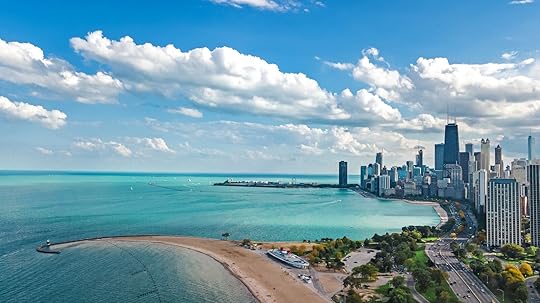
Chicago is one of the world’s great cities and there are countless reasons why you should visit this Toddlin’ Town. The Windy City will keep you entertained from the infamous Lollapalooza to the delicious cuisines, cool hiking trails and unique museums, you surely will not get bored. While boutique hotels are certainly one way to go when it comes to accommodation, Airbnbs are often cheaper — or so incredibly unique that they’re worth the splurge. Whether you’re looking for a prime location, rockstar digs, great value, or something totally off beat, you’ll find it on our list of the coolest Airbnbs in Chicago.
Traveling to Chicago? Check out Matador’s Chicago accommodations guides: 10 Outstanding Chicago Hotels Within Walking Distance To Must-See Sights This Chicago Hotel Combines Apartment Comfort With Skyscraper Views and Upscale Amenities
We hope you love these Airbnb Chicago vacation rentals! Just so you know, Matador may collect a small commission from the links on this page if you decide to book a stay. Listed prices are accurate as of the time of publication.
1. Chicago home designed by Frank Lloyd Wright
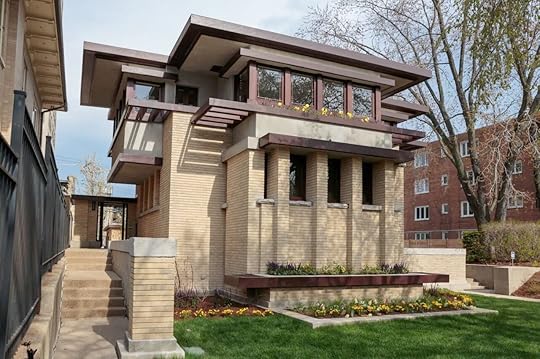 Photo: Airbnb
Photo: Airbnb Photo: Airbnb
Photo: Airbnb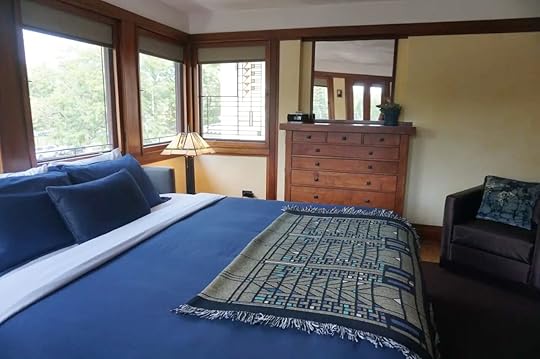 Photo: Airbnb
Photo: Airbnb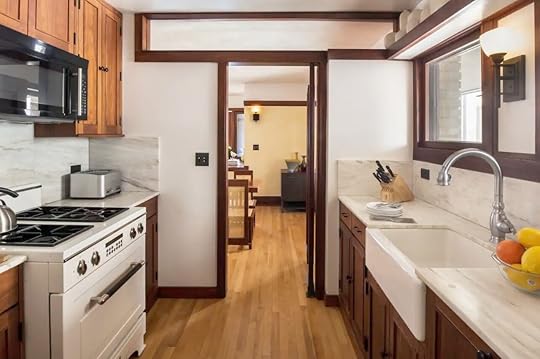 Photo: Airbnb
Photo: Airbnb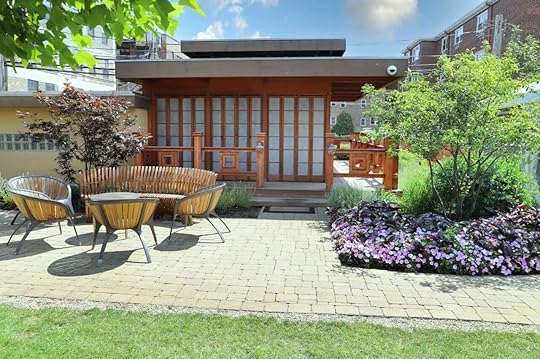 Photo: AirbnbSee more photosAirbnb is loaded with properties that are so effervescent they might make you reconsider your plans to “get out and explore the city.” None so much as a home designed by Frank Lloyd Wright himself. The Emil Bach House, as this legendary pad is known, was built in 1915 using Prairie materials. It’s nickname is “stacked cubes” and it’s easy to see why — right-angle contours and a design way ahead of its time make this Chicago’s best Airbnb, and one of the few FLW homes you can actually stay in.
Photo: AirbnbSee more photosAirbnb is loaded with properties that are so effervescent they might make you reconsider your plans to “get out and explore the city.” None so much as a home designed by Frank Lloyd Wright himself. The Emil Bach House, as this legendary pad is known, was built in 1915 using Prairie materials. It’s nickname is “stacked cubes” and it’s easy to see why — right-angle contours and a design way ahead of its time make this Chicago’s best Airbnb, and one of the few FLW homes you can actually stay in.
Six guests, three bedrooms
Price: $386 per night
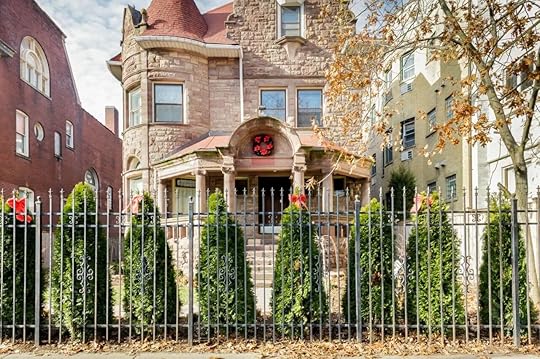 Photo: Airbnb
Photo: Airbnb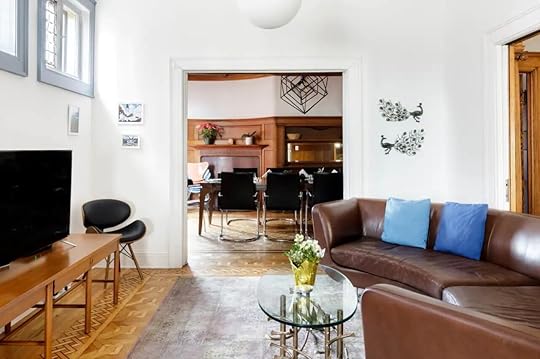 Photo: Airbnb
Photo: Airbnb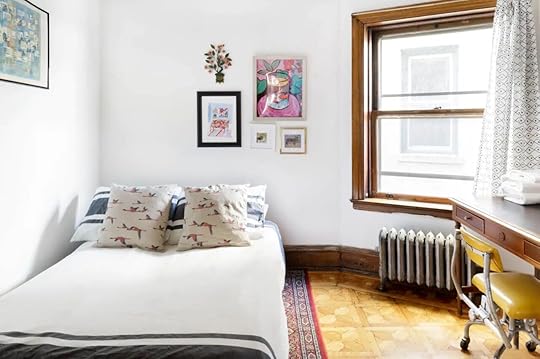 Photo: Airbnb
Photo: Airbnb Photo: AirbnbSee more photosUptown is a neighborhood with strong links to its past, including the iconic Green Mill jazz club and ballroom-turned-concert-venues The Aragon and The Riviera. This brownstone mansion connects back to a bygone era in exactly the same way while stylish amenities keep the home full of modern comforts. Being located at the southern edge of Uptown, the property is also very close to the Wrigleyville neighborhood but still somewhat removed from the busyness of that area.
Photo: AirbnbSee more photosUptown is a neighborhood with strong links to its past, including the iconic Green Mill jazz club and ballroom-turned-concert-venues The Aragon and The Riviera. This brownstone mansion connects back to a bygone era in exactly the same way while stylish amenities keep the home full of modern comforts. Being located at the southern edge of Uptown, the property is also very close to the Wrigleyville neighborhood but still somewhat removed from the busyness of that area.
Sixteen guests, nine bedrooms
Price: $750 per night
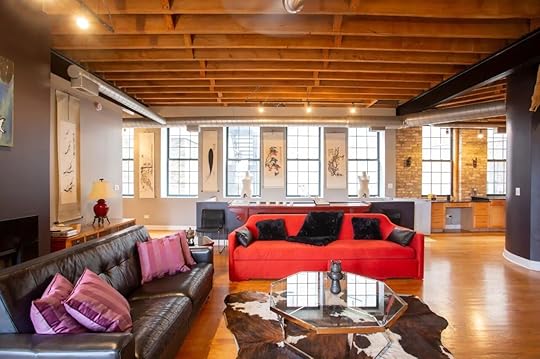 Photo: Airbnb
Photo: Airbnb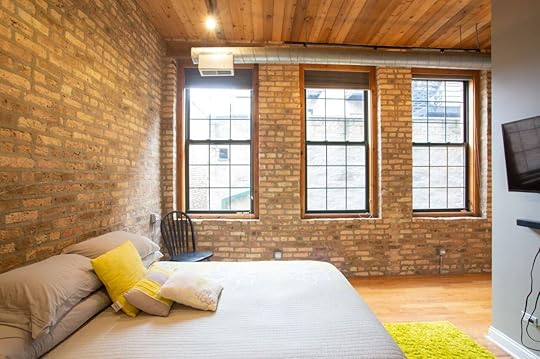 Photo: Airbnb
Photo: Airbnb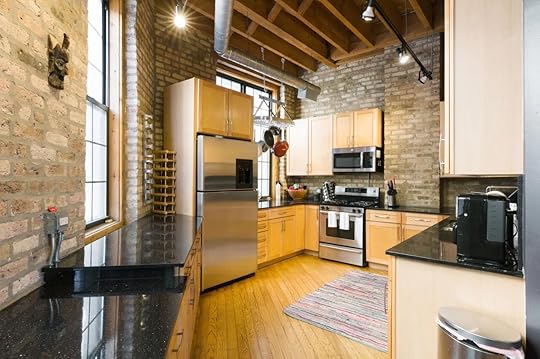 Photo: Airbnb
Photo: Airbnb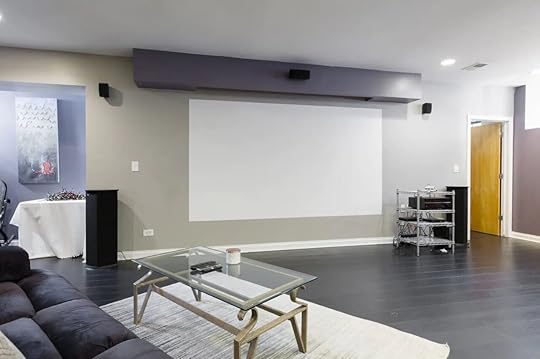 Photo: AirbnbSee more photosIt’s hard to beat River West if you want a hip location, and this eclectic loft in an old factory is an especially great place to stay. The open floor plan, hardwood floors, exposed brick, 20-foot ceilings, and gorgeous interior design create a space that is as homelike as it is hip. With an in-unit movie screening room with surround sound, you might not want to leave. But if you do, the surrounding neighborhood and nearby Old Town are full of great bars, restaurants, and the legendary Second City comedy club.
Photo: AirbnbSee more photosIt’s hard to beat River West if you want a hip location, and this eclectic loft in an old factory is an especially great place to stay. The open floor plan, hardwood floors, exposed brick, 20-foot ceilings, and gorgeous interior design create a space that is as homelike as it is hip. With an in-unit movie screening room with surround sound, you might not want to leave. But if you do, the surrounding neighborhood and nearby Old Town are full of great bars, restaurants, and the legendary Second City comedy club.
Eight guests, three bedrooms
Price: $390 per night
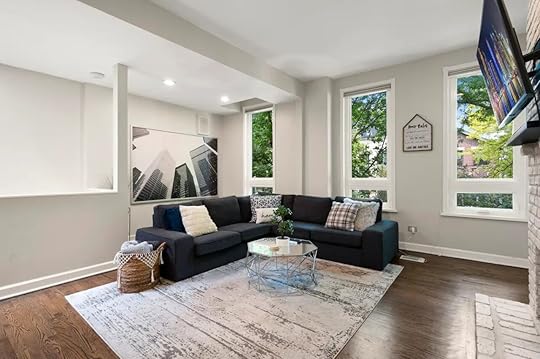 Photo: Airbnb
Photo: Airbnb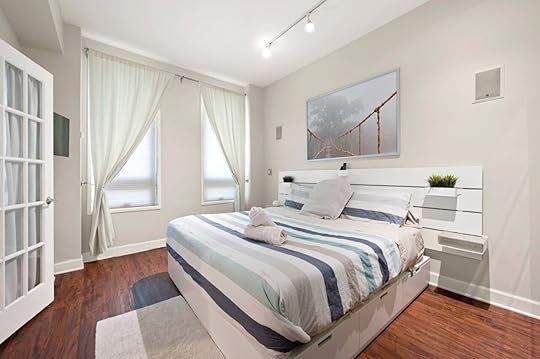 Photo: Airbnb
Photo: Airbnb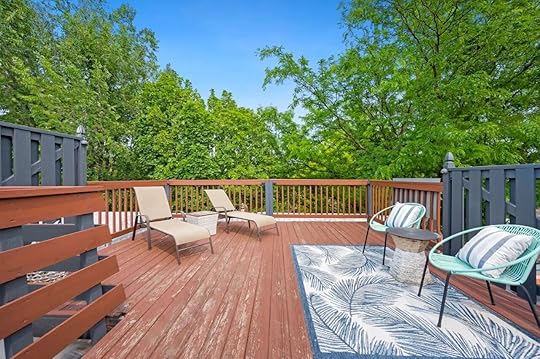 Photo: Airbnb
Photo: Airbnb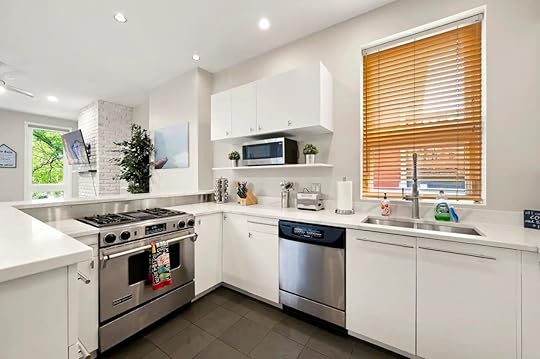 Photo: AirbnbSee more photosEnjoy a freshly renovated three-level Lincoln Park home in Chicago with a private rooftop deck. This luxurious Airbnb in Lincoln Park, Chicago, offers an open floor plan with a spacious living area and a custom chef’s kitchen with stainless steel appliances, a dining room table for six, and a kitchen bar for three. The home features two main-floor bedrooms with king-size beds and easy access to a fully stocked bathroom. It also includes two half-baths (one on the top floor and one in the basement). The location is safe and convenient, close to the lake, entertainment, retail, and restaurants.
Photo: AirbnbSee more photosEnjoy a freshly renovated three-level Lincoln Park home in Chicago with a private rooftop deck. This luxurious Airbnb in Lincoln Park, Chicago, offers an open floor plan with a spacious living area and a custom chef’s kitchen with stainless steel appliances, a dining room table for six, and a kitchen bar for three. The home features two main-floor bedrooms with king-size beds and easy access to a fully stocked bathroom. It also includes two half-baths (one on the top floor and one in the basement). The location is safe and convenient, close to the lake, entertainment, retail, and restaurants.
Seven guests, three bedrooms
Price: $335 per night
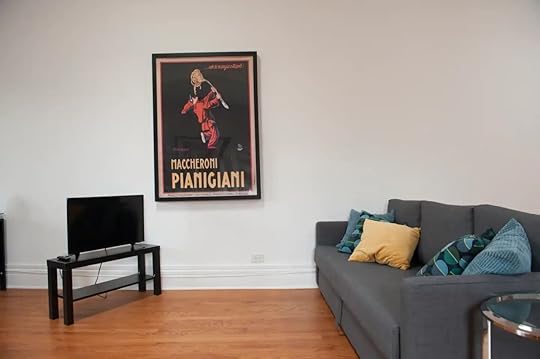 Photo: Airbnb
Photo: Airbnb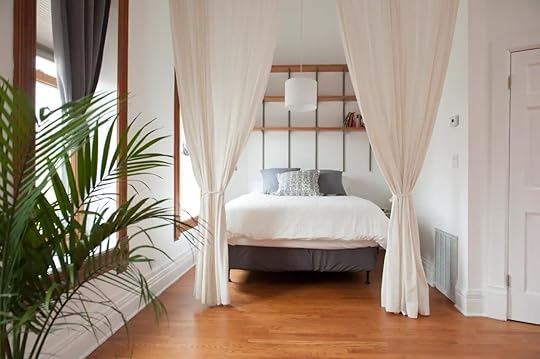 Photo: Airbnb
Photo: Airbnb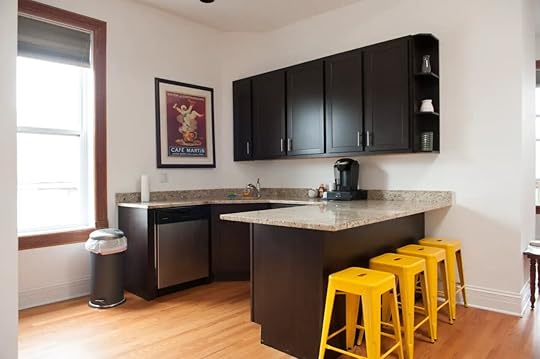 Photo: AirbnbSee more photosConnect to Chicago’s industrial past in this converted loft in an old building while enjoying modern style and convenience. This beautifully appointed home is ideal for a couple or small family and has a perfect location between Wicker Park and River North along the Blue Line train and Kennedy Expressway, which both run between downtown and O’Hare Airport. It’s also near many popular West Town attractions like the WNDR Musuem.
Photo: AirbnbSee more photosConnect to Chicago’s industrial past in this converted loft in an old building while enjoying modern style and convenience. This beautifully appointed home is ideal for a couple or small family and has a perfect location between Wicker Park and River North along the Blue Line train and Kennedy Expressway, which both run between downtown and O’Hare Airport. It’s also near many popular West Town attractions like the WNDR Musuem.
Four guests, one bedroom
Price: $111 per night
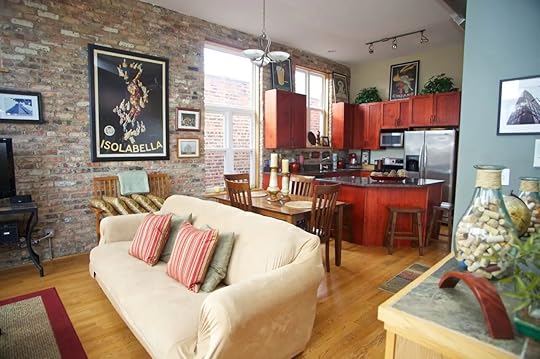 Photo: Airbnb
Photo: Airbnb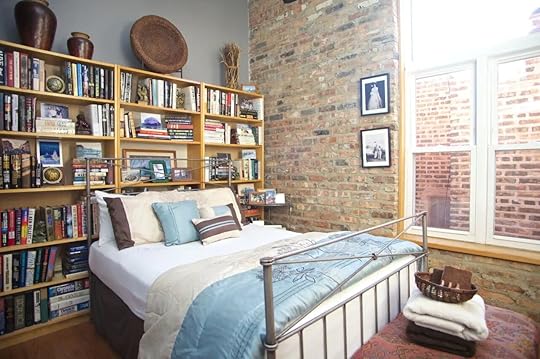 Photo: Airbnb
Photo: Airbnb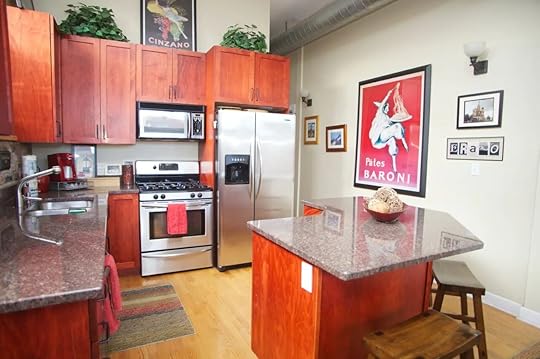 Photo: AirbnbSee more photosThis modern Chicago Airbnb in Lakeview has industrial-chic design practically oozing out of the exposed brick walls and across the hardwood floors. The two-bedroom, two-full-bathroom space is perfect for two couples coming into town for a weekend concert or baseball game. The loft is steps away from the Belmont Brown, Red, and Purple Line train stops. Wrigley Field is just a 10-minute walk away, and the neighborhood is full of great cafes, restaurants, bars, and clubs. The neighborhoods of Wrigleyville, Lincoln Park, Boystown, and the lakefront are all within a mile.
Photo: AirbnbSee more photosThis modern Chicago Airbnb in Lakeview has industrial-chic design practically oozing out of the exposed brick walls and across the hardwood floors. The two-bedroom, two-full-bathroom space is perfect for two couples coming into town for a weekend concert or baseball game. The loft is steps away from the Belmont Brown, Red, and Purple Line train stops. Wrigley Field is just a 10-minute walk away, and the neighborhood is full of great cafes, restaurants, bars, and clubs. The neighborhoods of Wrigleyville, Lincoln Park, Boystown, and the lakefront are all within a mile.
Four guests, two bedrooms
Price: $129 per night
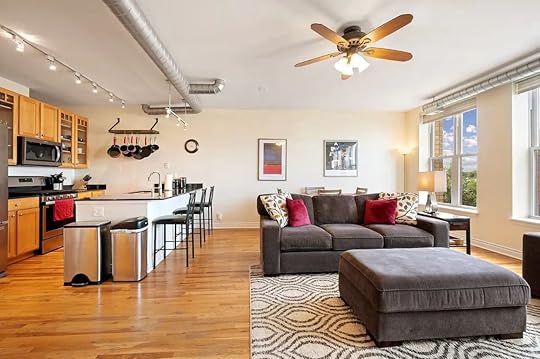 Photo: Airbnb
Photo: Airbnb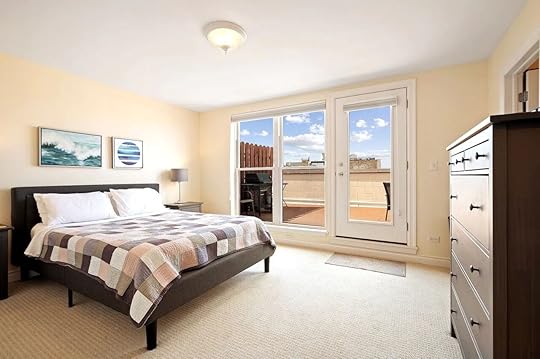 Photo: Airbnb
Photo: Airbnb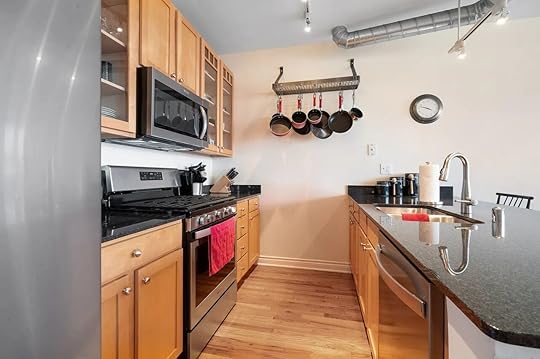 Photo: Airbnb
Photo: Airbnb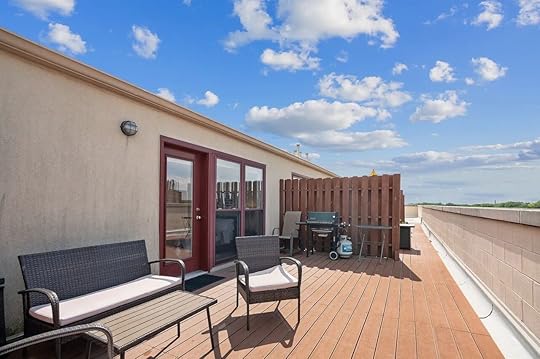 Photo: AirbnbSee more photosWith two bedrooms and a dedicated workspace in addition to the spacious living room, this Airbnb in Chicago’s Lakeview is everything you need to settle in for a few days or a few weeks in the Windy City. The kitchen is open and modern, with all the tools you need to prepare restaurant-quality meals, though the surrounding Lakeview neighborhood also has you covered on that front. The unit is right by the Brown Line for easy access to the entire city, and within walking distance of nightlife, dining, and shops.
Photo: AirbnbSee more photosWith two bedrooms and a dedicated workspace in addition to the spacious living room, this Airbnb in Chicago’s Lakeview is everything you need to settle in for a few days or a few weeks in the Windy City. The kitchen is open and modern, with all the tools you need to prepare restaurant-quality meals, though the surrounding Lakeview neighborhood also has you covered on that front. The unit is right by the Brown Line for easy access to the entire city, and within walking distance of nightlife, dining, and shops.
Four guests, two bedrooms
Price: $159 per night
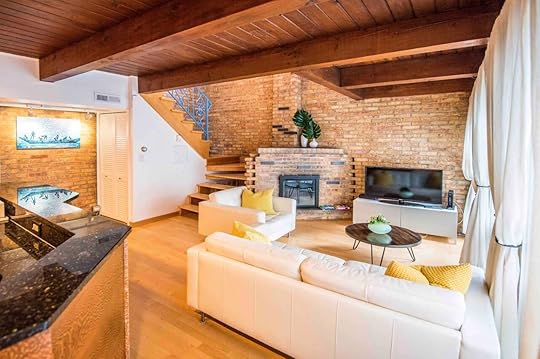 Photo: Airbnb
Photo: Airbnb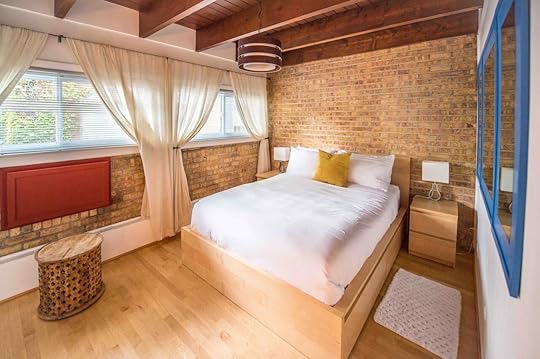 Photo: AirbnbSee more photosThe Lincoln Park Zoo is one of Chicago’s main attractions, and you’ll be blocks away in this cute, modern duplex. The lakefront is an easy stroll away, meaning you can fit in a day’s worth of entertainment, shopping, dining, and exercise in one go while simultaneously ticking off the box of things to see in Chicago. Oh, and the apartment itself is charming to the point that a lazy morning brunch or happy hour cocktail while gazing out the large windows won’t sound bad, either.
Photo: AirbnbSee more photosThe Lincoln Park Zoo is one of Chicago’s main attractions, and you’ll be blocks away in this cute, modern duplex. The lakefront is an easy stroll away, meaning you can fit in a day’s worth of entertainment, shopping, dining, and exercise in one go while simultaneously ticking off the box of things to see in Chicago. Oh, and the apartment itself is charming to the point that a lazy morning brunch or happy hour cocktail while gazing out the large windows won’t sound bad, either.
Two guests, one bedroom
Price: $125 per night
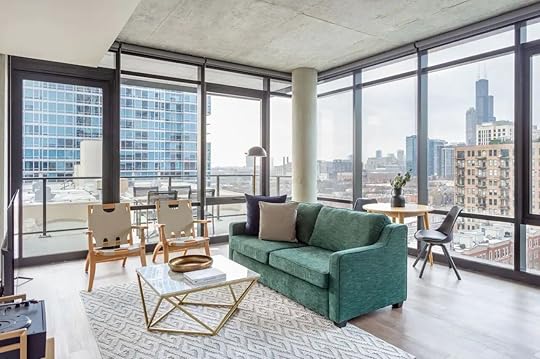 Photo: Airbnb
Photo: Airbnb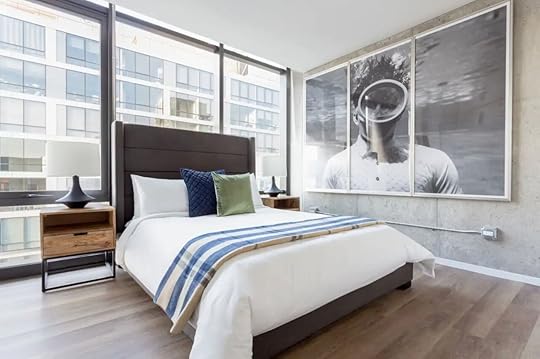 Photo: Airbnb
Photo: Airbnb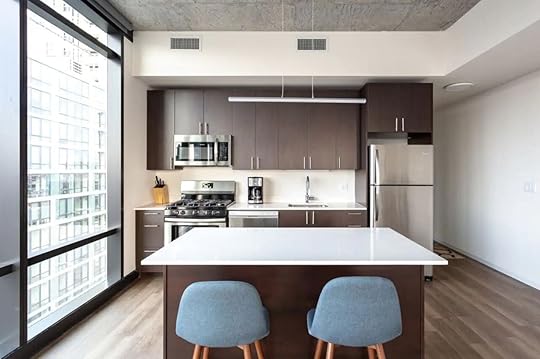 Photo: Airbnb
Photo: Airbnb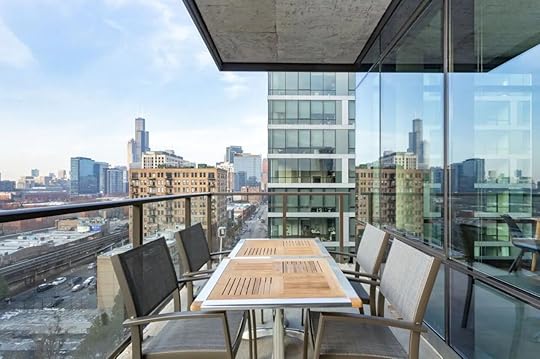 Photo: AirbnbSee more photosCheck out this sophisticated one-bedroom Airbnb in Downtown Chicago right in the south loop. This apartment features a spacious living room with floor-to-ceiling windows showcasing the Chicago skyline, a fully equipped kitchen area, a balcony, and a cozy bedroom. Get out and explore the windy city, as the apartment is near many attractions like Victory Tap, M Lounge, and Little Branch.
Photo: AirbnbSee more photosCheck out this sophisticated one-bedroom Airbnb in Downtown Chicago right in the south loop. This apartment features a spacious living room with floor-to-ceiling windows showcasing the Chicago skyline, a fully equipped kitchen area, a balcony, and a cozy bedroom. Get out and explore the windy city, as the apartment is near many attractions like Victory Tap, M Lounge, and Little Branch.
Four guests, one bedroom
Price: $157 per night
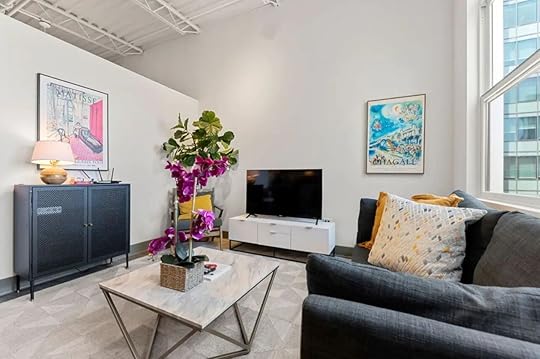 Photo: Airbnb
Photo: Airbnb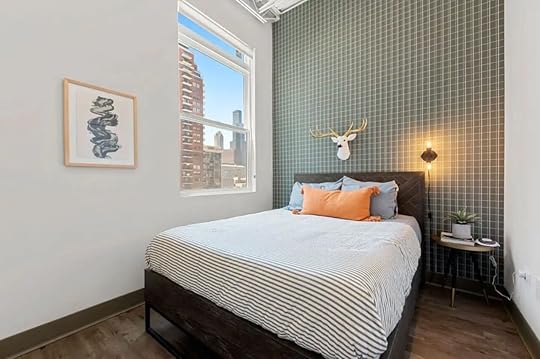 Photo: Airbnb
Photo: Airbnb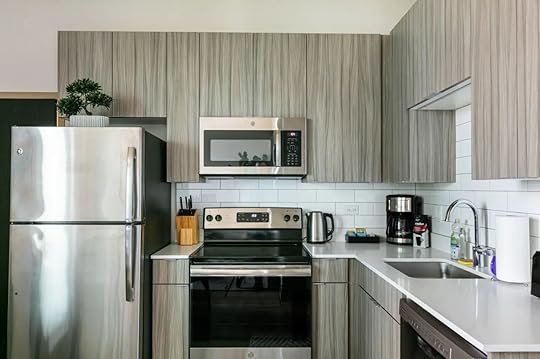 Photo: AirbnbSee more photosThis Airbnb near Grant Park Chicago is perfect for your stay. Gather your friends and make this home base for your Chicago stay. This seven-bedroom penthouse features a cozy living room, a well-equipped kitchen, and seven bedrooms. There is a shared rooftop, gym, and kitchen area. Enjoy the scenic skyline, park, lake, harbor, and marina views.
Photo: AirbnbSee more photosThis Airbnb near Grant Park Chicago is perfect for your stay. Gather your friends and make this home base for your Chicago stay. This seven-bedroom penthouse features a cozy living room, a well-equipped kitchen, and seven bedrooms. There is a shared rooftop, gym, and kitchen area. Enjoy the scenic skyline, park, lake, harbor, and marina views.
Seven guests, three bedrooms
Price: $248 per night
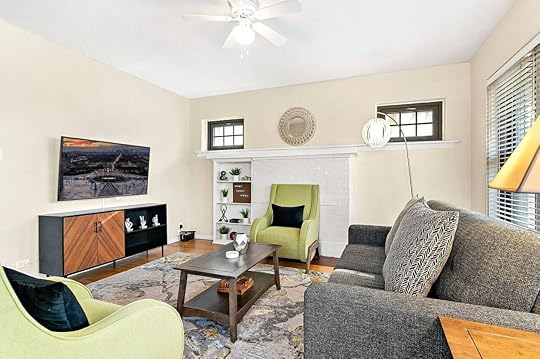 Photo: Airbnb
Photo: Airbnb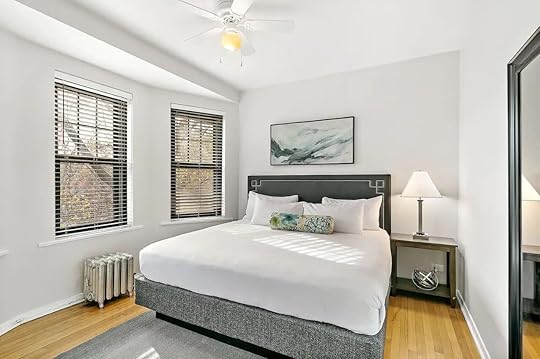 Photo: Airbnb
Photo: Airbnb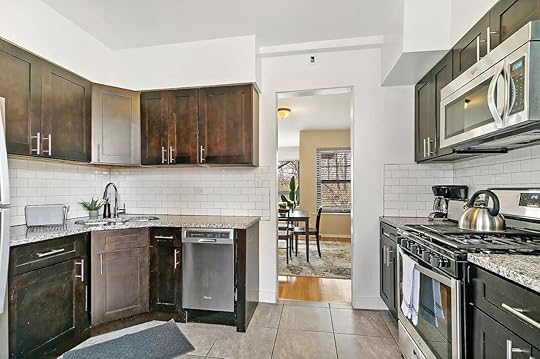 Photo: Airbnb
Photo: Airbnb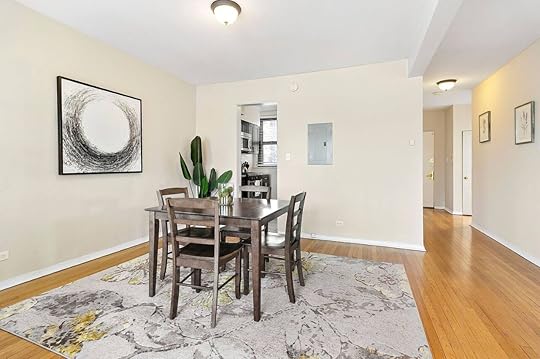 Photo: AirbnbSee more photosThis contemporary one-bedroom Airbnb in Hyde Park, Chicago, offers comfort and convenience for city tours or business trips. It features a spacious living area with modern furnishings, hardwood flooring, and a fully furnished kitchen with a granite countertop with all the necessary appliances and utensils for home-cooked meals. The apartment is in a pleasant neighborhood close to restaurants and shops, like the University of Chicago, local shops, restaurants, and attractions like the Museum of Science and Industry and the Obama Presidential Center, making it an ideal place to stay while exploring the city.
Photo: AirbnbSee more photosThis contemporary one-bedroom Airbnb in Hyde Park, Chicago, offers comfort and convenience for city tours or business trips. It features a spacious living area with modern furnishings, hardwood flooring, and a fully furnished kitchen with a granite countertop with all the necessary appliances and utensils for home-cooked meals. The apartment is in a pleasant neighborhood close to restaurants and shops, like the University of Chicago, local shops, restaurants, and attractions like the Museum of Science and Industry and the Obama Presidential Center, making it an ideal place to stay while exploring the city.
Four guests, one bedroom
Price: $133 per night
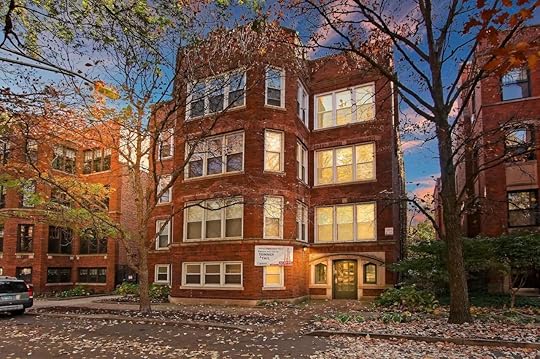 Photo: Airbnb
Photo: Airbnb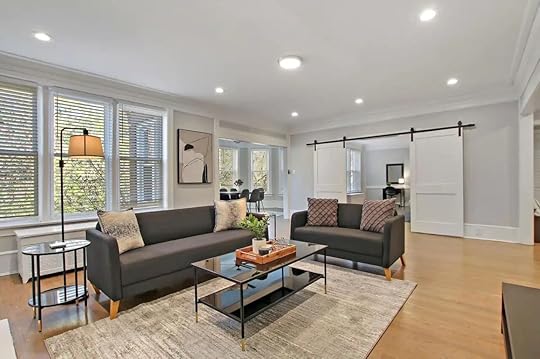 Photo: Airbnb
Photo: Airbnb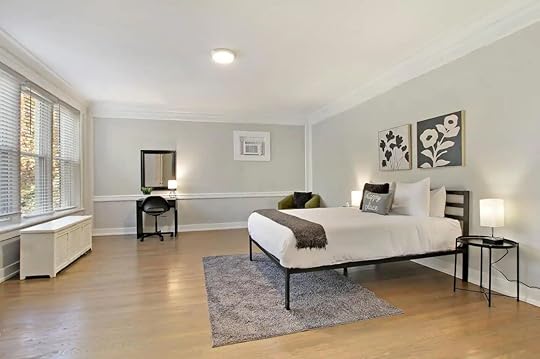 Photo: Airbnb
Photo: Airbnb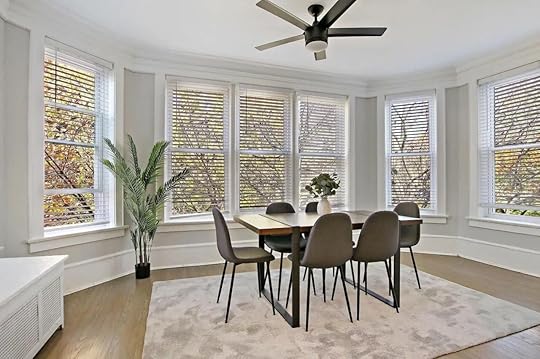 Photo: Airbnb
Photo: Airbnb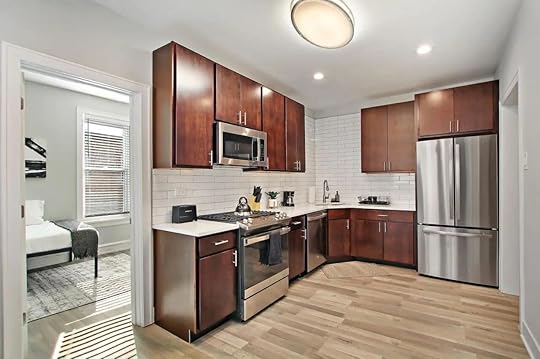 Photo: AirbnbSee more photosLocated on the third floor of a multi-residential building is this stylish apartment. This four-bedroom apartment has a large living area, a fully equipped kitchen, and four bedrooms with two full bathrooms. Get out and explore the town, as downtown is only 15 minutes away, or visit the University of Chicago campus next door.
Photo: AirbnbSee more photosLocated on the third floor of a multi-residential building is this stylish apartment. This four-bedroom apartment has a large living area, a fully equipped kitchen, and four bedrooms with two full bathrooms. Get out and explore the town, as downtown is only 15 minutes away, or visit the University of Chicago campus next door.
Seven guests, four bedrooms
Price: $110 per night
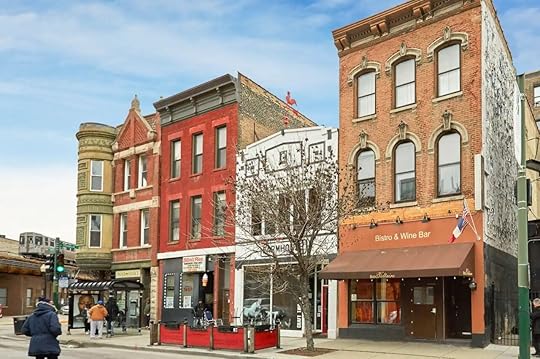 Photo: Airbnb
Photo: Airbnb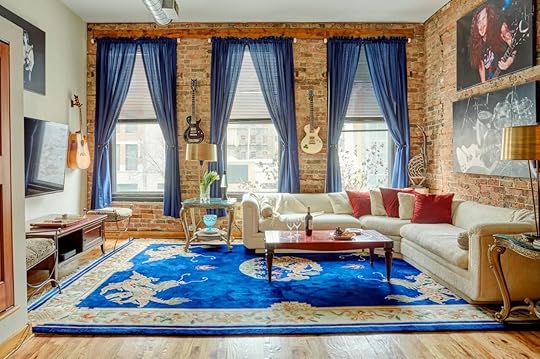 Photo: Airbnb
Photo: Airbnb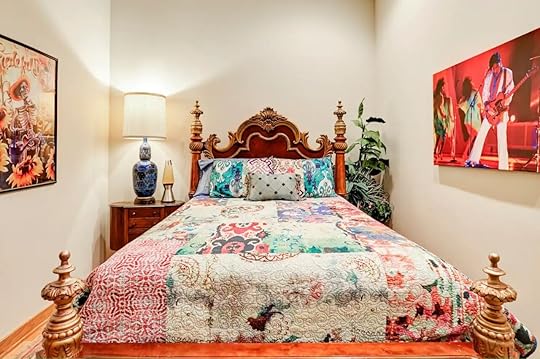 Photo: Airbnb
Photo: Airbnb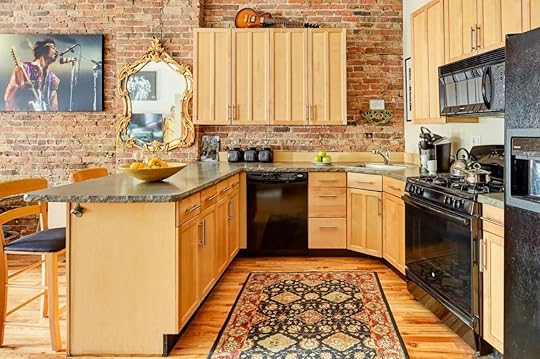 Photo: AirbnbSee more photosImmerse yourself in this unique Airbnb Chicago apartment. This rock-n-roll-themed apartment is decorated with tons of rock-n-rock memorabilia and has a spacious living room, a fully equipped kitchen, two bedrooms, and two full bathrooms. This apartment is located above a trendy restaurant and is only a few minutes from Mag Mile and the Loop.
Photo: AirbnbSee more photosImmerse yourself in this unique Airbnb Chicago apartment. This rock-n-roll-themed apartment is decorated with tons of rock-n-rock memorabilia and has a spacious living room, a fully equipped kitchen, two bedrooms, and two full bathrooms. This apartment is located above a trendy restaurant and is only a few minutes from Mag Mile and the Loop.
Six guests, two bedrooms
Price: $322 per night
 Photo: Airbnb
Photo: Airbnb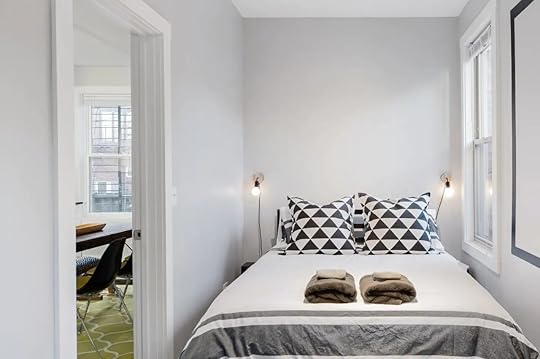 Photo: Airbnb
Photo: Airbnb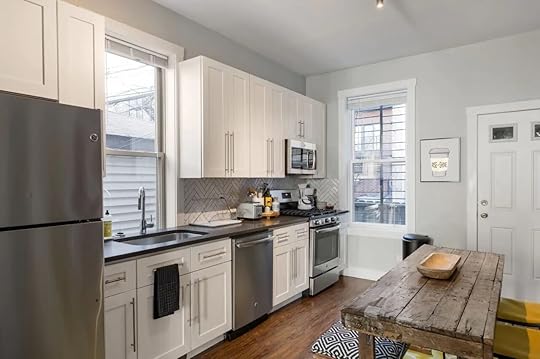 Photo: Airbnb
Photo: Airbnb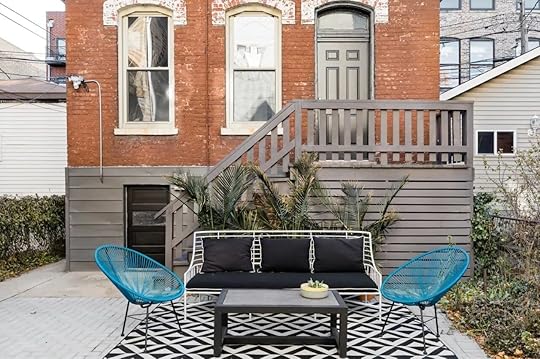 Photo: AirbnbSee more photosThis quiet home is the perfect stay while in Chicago. This renovated home is decorated with grayscale walls, rustic accents, and unique wall art throughout the house. The home has a spacious, cozy living room, a full kitchen, and a private outdoor space. Sit back and relax as the home is in a quiet neighborhood but enjoy all that Chicago has to offer by visiting restaurants, shops, and bars ½ block away.
Photo: AirbnbSee more photosThis quiet home is the perfect stay while in Chicago. This renovated home is decorated with grayscale walls, rustic accents, and unique wall art throughout the house. The home has a spacious, cozy living room, a full kitchen, and a private outdoor space. Sit back and relax as the home is in a quiet neighborhood but enjoy all that Chicago has to offer by visiting restaurants, shops, and bars ½ block away.
Six guests, two bedrooms
Price: $187 per night
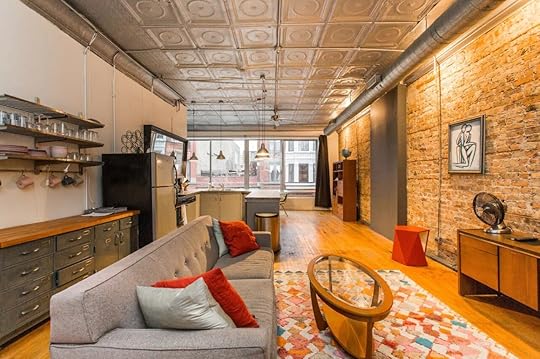 Photo: Airbnb
Photo: Airbnb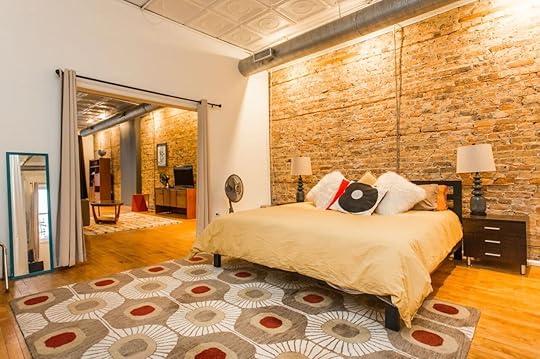 Photo: Airbnb
Photo: Airbnb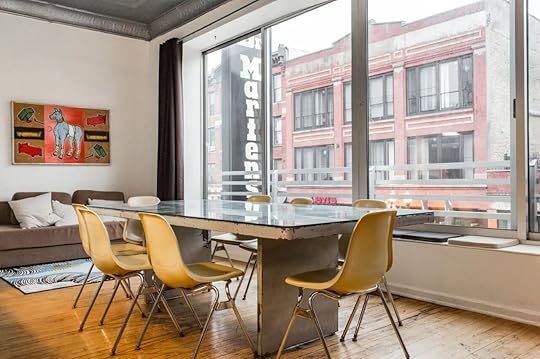 Photo: Airbnb
Photo: Airbnb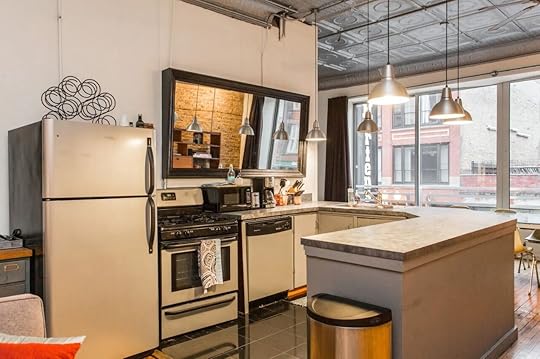 Photo: AirbnbSee more photosSituated right in the heart of Wicker Park is this spacious loft. This cool loft has an open floor plan with the living, kitchen, dining area, and French doors separating the bedroom. The loft is right in the middle and near many restaurants, cafes, shopping, and more.
Photo: AirbnbSee more photosSituated right in the heart of Wicker Park is this spacious loft. This cool loft has an open floor plan with the living, kitchen, dining area, and French doors separating the bedroom. The loft is right in the middle and near many restaurants, cafes, shopping, and more. 
Four guests, one bedroom
Price: $202 per night
The 9 best Airbnbs in Chicago

Chicago is one of the world’s great cities and there are countless reasons why you should visit this Toddlin’ Town. The Windy City will keep you entertained from the infamous Lollapalooza to the delicious cuisines, cool hiking trails and unique museums, you surely will not get bored. While boutique hotels are certainly one way to go when it comes to accommodation, Airbnbs are often cheaper — or so incredibly unique that they’re worth the splurge. Whether you’re looking for a prime location, rockstar digs, great value, or something totally off beat, you’ll find it on our list of the coolest Airbnbs in Chicago.
Traveling to Chicago? Check out Matador’s Chicago accommodations guides: 10 Outstanding Chicago Hotels Within Walking Distance To Must-See Sights This Chicago Hotel Combines Apartment Comfort With Skyscraper Views and Upscale Amenities
We hope you love these Airbnb Chicago vacation rentals! Just so you know, Matador may collect a small commission from the links on this page if you decide to book a stay. Listed prices are accurate as of the time of publication.
1. Chicago home designed by Frank Lloyd Wright
 Photo: Airbnb
Photo: Airbnb Photo: Airbnb
Photo: Airbnb Photo: Airbnb
Photo: Airbnb Photo: Airbnb
Photo: Airbnb Photo: AirbnbSee more photosAirbnb is loaded with properties that are so effervescent they might make you reconsider your plans to “get out and explore the city.” None so much as a home designed by Frank Lloyd Wright himself. The Emil Bach House, as this legendary pad is known, was built in 1915 using Prairie materials. It’s nickname is “stacked cubes” and it’s easy to see why — right-angle contours and a design way ahead of its time make this Chicago’s best Airbnb, and one of the few FLW homes you can actually stay in.
Photo: AirbnbSee more photosAirbnb is loaded with properties that are so effervescent they might make you reconsider your plans to “get out and explore the city.” None so much as a home designed by Frank Lloyd Wright himself. The Emil Bach House, as this legendary pad is known, was built in 1915 using Prairie materials. It’s nickname is “stacked cubes” and it’s easy to see why — right-angle contours and a design way ahead of its time make this Chicago’s best Airbnb, and one of the few FLW homes you can actually stay in.
Six guests, three bedrooms
Price: $386 per night
 Photo: Airbnb
Photo: Airbnb Photo: Airbnb
Photo: Airbnb Photo: Airbnb
Photo: Airbnb Photo: AirbnbSee more photosUptown is a neighborhood with strong links to its past, including the iconic Green Mill jazz club and ballroom-turned-concert-venues The Aragon and The Riviera. This brownstone mansion connects back to a bygone era in exactly the same way while stylish amenities keep the home full of modern comforts. Being located at the southern edge of Uptown, the property is also very close to the Wrigleyville neighborhood but still somewhat removed from the busyness of that area.
Photo: AirbnbSee more photosUptown is a neighborhood with strong links to its past, including the iconic Green Mill jazz club and ballroom-turned-concert-venues The Aragon and The Riviera. This brownstone mansion connects back to a bygone era in exactly the same way while stylish amenities keep the home full of modern comforts. Being located at the southern edge of Uptown, the property is also very close to the Wrigleyville neighborhood but still somewhat removed from the busyness of that area.
Sixteen guests, nine bedrooms
Price: $750 per night
 Photo: Airbnb
Photo: Airbnb Photo: Airbnb
Photo: Airbnb Photo: Airbnb
Photo: Airbnb Photo: AirbnbSee more photosIt’s hard to beat River West if you want a hip location, and this eclectic loft in an old factory is an especially great place to stay. The open floor plan, hardwood floors, exposed brick, 20-foot ceilings, and gorgeous interior design create a space that is as homelike as it is hip. With an in-unit movie screening room with surround sound, you might not want to leave. But if you do, the surrounding neighborhood and nearby Old Town are full of great bars, restaurants, and the legendary Second City comedy club.
Photo: AirbnbSee more photosIt’s hard to beat River West if you want a hip location, and this eclectic loft in an old factory is an especially great place to stay. The open floor plan, hardwood floors, exposed brick, 20-foot ceilings, and gorgeous interior design create a space that is as homelike as it is hip. With an in-unit movie screening room with surround sound, you might not want to leave. But if you do, the surrounding neighborhood and nearby Old Town are full of great bars, restaurants, and the legendary Second City comedy club.
Eight guests, three bedrooms
Price: $390 per night
 Photo: Airbnb
Photo: Airbnb Photo: Airbnb
Photo: Airbnb Photo: Airbnb
Photo: Airbnb Photo: AirbnbSee more photosEnjoy a freshly renovated three-level Lincoln Park home in Chicago with a private rooftop deck. This luxurious Airbnb in Lincoln Park, Chicago, offers an open floor plan with a spacious living area and a custom chef’s kitchen with stainless steel appliances, a dining room table for six, and a kitchen bar for three. The home features two main-floor bedrooms with king-size beds and easy access to a fully stocked bathroom. It also includes two half-baths (one on the top floor and one in the basement). The location is safe and convenient, close to the lake, entertainment, retail, and restaurants.
Photo: AirbnbSee more photosEnjoy a freshly renovated three-level Lincoln Park home in Chicago with a private rooftop deck. This luxurious Airbnb in Lincoln Park, Chicago, offers an open floor plan with a spacious living area and a custom chef’s kitchen with stainless steel appliances, a dining room table for six, and a kitchen bar for three. The home features two main-floor bedrooms with king-size beds and easy access to a fully stocked bathroom. It also includes two half-baths (one on the top floor and one in the basement). The location is safe and convenient, close to the lake, entertainment, retail, and restaurants.
Seven guests, three bedrooms
Price: $335 per night
 Photo: Airbnb
Photo: Airbnb Photo: Airbnb
Photo: Airbnb Photo: AirbnbSee more photosConnect to Chicago’s industrial past in this converted loft in an old building while enjoying modern style and convenience. This beautifully appointed home is ideal for a couple or small family and has a perfect location between Wicker Park and River North along the Blue Line train and Kennedy Expressway, which both run between downtown and O’Hare Airport. It’s also near many popular West Town attractions like the WNDR Musuem.
Photo: AirbnbSee more photosConnect to Chicago’s industrial past in this converted loft in an old building while enjoying modern style and convenience. This beautifully appointed home is ideal for a couple or small family and has a perfect location between Wicker Park and River North along the Blue Line train and Kennedy Expressway, which both run between downtown and O’Hare Airport. It’s also near many popular West Town attractions like the WNDR Musuem.
Four guests, one bedroom
Price: $111 per night
 Photo: Airbnb
Photo: Airbnb Photo: Airbnb
Photo: Airbnb Photo: AirbnbSee more photosThis modern Chicago Airbnb in Lakeview has industrial-chic design practically oozing out of the exposed brick walls and across the hardwood floors. The two-bedroom, two-full-bathroom space is perfect for two couples coming into town for a weekend concert or baseball game. The loft is steps away from the Belmont Brown, Red, and Purple Line train stops. Wrigley Field is just a 10-minute walk away, and the neighborhood is full of great cafes, restaurants, bars, and clubs. The neighborhoods of Wrigleyville, Lincoln Park, Boystown, and the lakefront are all within a mile.
Photo: AirbnbSee more photosThis modern Chicago Airbnb in Lakeview has industrial-chic design practically oozing out of the exposed brick walls and across the hardwood floors. The two-bedroom, two-full-bathroom space is perfect for two couples coming into town for a weekend concert or baseball game. The loft is steps away from the Belmont Brown, Red, and Purple Line train stops. Wrigley Field is just a 10-minute walk away, and the neighborhood is full of great cafes, restaurants, bars, and clubs. The neighborhoods of Wrigleyville, Lincoln Park, Boystown, and the lakefront are all within a mile.
Four guests, two bedrooms
Price: $129 per night
 Photo: Airbnb
Photo: Airbnb Photo: Airbnb
Photo: Airbnb Photo: Airbnb
Photo: Airbnb Photo: AirbnbSee more photosWith two bedrooms and a dedicated workspace in addition to the spacious living room, this Airbnb in Chicago’s Lakeview is everything you need to settle in for a few days or a few weeks in the Windy City. The kitchen is open and modern, with all the tools you need to prepare restaurant-quality meals, though the surrounding Lakeview neighborhood also has you covered on that front. The unit is right by the Brown Line for easy access to the entire city, and within walking distance of nightlife, dining, and shops.
Photo: AirbnbSee more photosWith two bedrooms and a dedicated workspace in addition to the spacious living room, this Airbnb in Chicago’s Lakeview is everything you need to settle in for a few days or a few weeks in the Windy City. The kitchen is open and modern, with all the tools you need to prepare restaurant-quality meals, though the surrounding Lakeview neighborhood also has you covered on that front. The unit is right by the Brown Line for easy access to the entire city, and within walking distance of nightlife, dining, and shops.
Four guests, two bedrooms
Price: $159 per night
 Photo: Airbnb
Photo: Airbnb Photo: AirbnbSee more photosThe Lincoln Park Zoo is one of Chicago’s main attractions, and you’ll be blocks away in this cute, modern duplex. The lakefront is an easy stroll away, meaning you can fit in a day’s worth of entertainment, shopping, dining, and exercise in one go while simultaneously ticking off the box of things to see in Chicago. Oh, and the apartment itself is charming to the point that a lazy morning brunch or happy hour cocktail while gazing out the large windows won’t sound bad, either.
Photo: AirbnbSee more photosThe Lincoln Park Zoo is one of Chicago’s main attractions, and you’ll be blocks away in this cute, modern duplex. The lakefront is an easy stroll away, meaning you can fit in a day’s worth of entertainment, shopping, dining, and exercise in one go while simultaneously ticking off the box of things to see in Chicago. Oh, and the apartment itself is charming to the point that a lazy morning brunch or happy hour cocktail while gazing out the large windows won’t sound bad, either.
Two guests, one bedroom
Price: $125 per night
 Photo: Airbnb
Photo: Airbnb Photo: Airbnb
Photo: Airbnb Photo: Airbnb
Photo: Airbnb Photo: AirbnbSee more photosCheck out this sophisticated one-bedroom Airbnb in Downtown Chicago right in the south loop. This apartment features a spacious living room with floor-to-ceiling windows showcasing the Chicago skyline, a fully equipped kitchen area, a balcony, and a cozy bedroom. Get out and explore the windy city, as the apartment is near many attractions like Victory Tap, M Lounge, and Little Branch.
Photo: AirbnbSee more photosCheck out this sophisticated one-bedroom Airbnb in Downtown Chicago right in the south loop. This apartment features a spacious living room with floor-to-ceiling windows showcasing the Chicago skyline, a fully equipped kitchen area, a balcony, and a cozy bedroom. Get out and explore the windy city, as the apartment is near many attractions like Victory Tap, M Lounge, and Little Branch.
Four guests, one bedroom
Price: $157 per night
 Photo: Airbnb
Photo: Airbnb Photo: Airbnb
Photo: Airbnb Photo: AirbnbSee more photosThis Airbnb near Grant Park Chicago is perfect for your stay. Gather your friends and make this home base for your Chicago stay. This seven-bedroom penthouse features a cozy living room, a well-equipped kitchen, and seven bedrooms. There is a shared rooftop, gym, and kitchen area. Enjoy the scenic skyline, park, lake, harbor, and marina views.
Photo: AirbnbSee more photosThis Airbnb near Grant Park Chicago is perfect for your stay. Gather your friends and make this home base for your Chicago stay. This seven-bedroom penthouse features a cozy living room, a well-equipped kitchen, and seven bedrooms. There is a shared rooftop, gym, and kitchen area. Enjoy the scenic skyline, park, lake, harbor, and marina views.
Seven guests, three bedrooms
Price: $248 per night
 Photo: Airbnb
Photo: Airbnb Photo: Airbnb
Photo: Airbnb Photo: Airbnb
Photo: Airbnb Photo: AirbnbSee more photosThis contemporary one-bedroom Airbnb in Hyde Park, Chicago, offers comfort and convenience for city tours or business trips. It features a spacious living area with modern furnishings, hardwood flooring, and a fully furnished kitchen with a granite countertop with all the necessary appliances and utensils for home-cooked meals. The apartment is in a pleasant neighborhood close to restaurants and shops, like the University of Chicago, local shops, restaurants, and attractions like the Museum of Science and Industry and the Obama Presidential Center, making it an ideal place to stay while exploring the city.
Photo: AirbnbSee more photosThis contemporary one-bedroom Airbnb in Hyde Park, Chicago, offers comfort and convenience for city tours or business trips. It features a spacious living area with modern furnishings, hardwood flooring, and a fully furnished kitchen with a granite countertop with all the necessary appliances and utensils for home-cooked meals. The apartment is in a pleasant neighborhood close to restaurants and shops, like the University of Chicago, local shops, restaurants, and attractions like the Museum of Science and Industry and the Obama Presidential Center, making it an ideal place to stay while exploring the city.
Four guests, one bedroom
Price: $133 per night
 Photo: Airbnb
Photo: Airbnb Photo: Airbnb
Photo: Airbnb Photo: Airbnb
Photo: Airbnb Photo: Airbnb
Photo: Airbnb Photo: AirbnbSee more photosLocated on the third floor of a multi-residential building is this stylish apartment. This four-bedroom apartment has a large living area, a fully equipped kitchen, and four bedrooms with two full bathrooms. Get out and explore the town, as downtown is only 15 minutes away, or visit the University of Chicago campus next door.
Photo: AirbnbSee more photosLocated on the third floor of a multi-residential building is this stylish apartment. This four-bedroom apartment has a large living area, a fully equipped kitchen, and four bedrooms with two full bathrooms. Get out and explore the town, as downtown is only 15 minutes away, or visit the University of Chicago campus next door.
Seven guests, four bedrooms
Price: $110 per night
 Photo: Airbnb
Photo: Airbnb Photo: Airbnb
Photo: Airbnb Photo: Airbnb
Photo: Airbnb Photo: AirbnbSee more photosImmerse yourself in this unique Airbnb Chicago apartment. This rock-n-roll-themed apartment is decorated with tons of rock-n-rock memorabilia and has a spacious living room, a fully equipped kitchen, two bedrooms, and two full bathrooms. This apartment is located above a trendy restaurant and is only a few minutes from Mag Mile and the Loop.
Photo: AirbnbSee more photosImmerse yourself in this unique Airbnb Chicago apartment. This rock-n-roll-themed apartment is decorated with tons of rock-n-rock memorabilia and has a spacious living room, a fully equipped kitchen, two bedrooms, and two full bathrooms. This apartment is located above a trendy restaurant and is only a few minutes from Mag Mile and the Loop.
Six guests, two bedrooms
Price: $322 per night
 Photo: Airbnb
Photo: Airbnb Photo: Airbnb
Photo: Airbnb Photo: Airbnb
Photo: Airbnb Photo: AirbnbSee more photosThis quiet home is the perfect stay while in Chicago. This renovated home is decorated with grayscale walls, rustic accents, and unique wall art throughout the house. The home has a spacious, cozy living room, a full kitchen, and a private outdoor space. Sit back and relax as the home is in a quiet neighborhood but enjoy all that Chicago has to offer by visiting restaurants, shops, and bars ½ block away.
Photo: AirbnbSee more photosThis quiet home is the perfect stay while in Chicago. This renovated home is decorated with grayscale walls, rustic accents, and unique wall art throughout the house. The home has a spacious, cozy living room, a full kitchen, and a private outdoor space. Sit back and relax as the home is in a quiet neighborhood but enjoy all that Chicago has to offer by visiting restaurants, shops, and bars ½ block away.
Six guests, two bedrooms
Price: $187 per night
 Photo: Airbnb
Photo: Airbnb Photo: Airbnb
Photo: Airbnb Photo: Airbnb
Photo: Airbnb Photo: AirbnbSee more photosSituated right in the heart of Wicker Park is this spacious loft. This cool loft has an open floor plan with the living, kitchen, dining area, and French doors separating the bedroom. The loft is right in the middle and near many restaurants, cafes, shopping, and more.
Photo: AirbnbSee more photosSituated right in the heart of Wicker Park is this spacious loft. This cool loft has an open floor plan with the living, kitchen, dining area, and French doors separating the bedroom. The loft is right in the middle and near many restaurants, cafes, shopping, and more. 
Four guests, one bedroom
Price: $202 per night
September 9, 2023
The 15 Best Myrtle Beach Airbnbs for the Perfect Beach Getaway
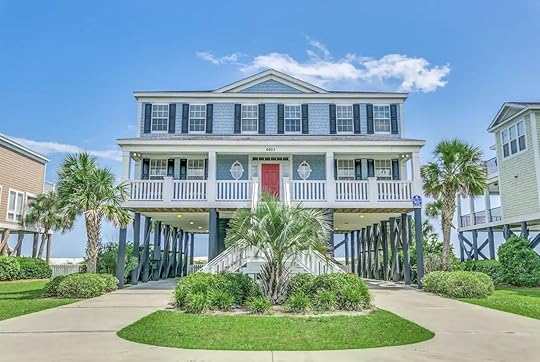
Myrtle Beach is a classic East Coast vacation spot. With the famous boardwalk, scenic golf courses, and white sand beaches, there’s something for visitors of all ages and backgrounds. A seaside motel may have a sentimental charm, but nothing beats the prices and advantages that come from staying in a rental home. Airbnb Myrtle Beach has some amazing properties to choose from.
Traveling through The South? Check out Matador’s accommodations guides to the region: The Top Airbnbs in Atlanta to Experience the City 8 Charming Charleston Airbnbs for a Bachelorette Party 15 Airbnbs in Charleston to Experience True Southern Charm The Best Airbnbs in Asheville, From an Urban Treehouse to a Coffeeshop Loft
We hope you love the Airbnb Myrtle Beach properties we recommend! Just so you know, Matador may collect a small commission from the links on this page if you decide to book a stay. Listed prices are accurate as of the time of publication.
Airbnbs in North Myrtle BeachMyrtle Beach Airbnbs with poolsSouth Myrtle Beach AirbnbsAirbnbs at Myrtle Beach resortsMyrtle Beach Airbnbs for groupsPet-friendly Myrtle Beach AirbnbsAirbnbs in North Myrtle Beach
North Myrtle Beach is great for families and groups, and ideal for those looking for a relaxed, quiet vacation rental.
Private oceanview beach house
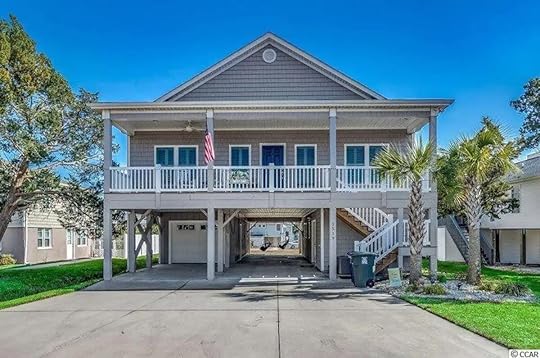 Photo: Airbnb
Photo: Airbnb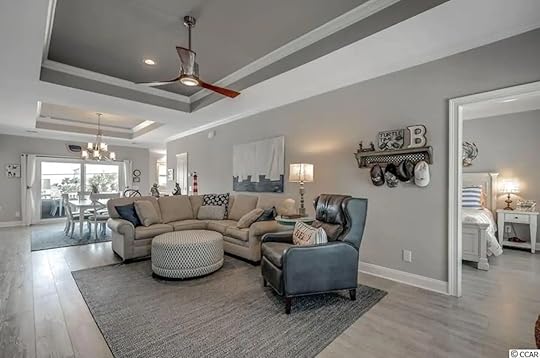 Photo: Airbnb
Photo: Airbnb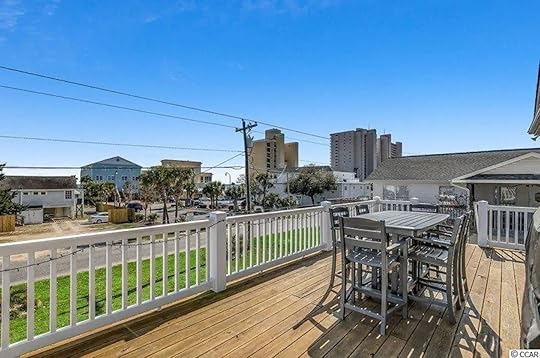 Photo: Airbnb
Photo: Airbnb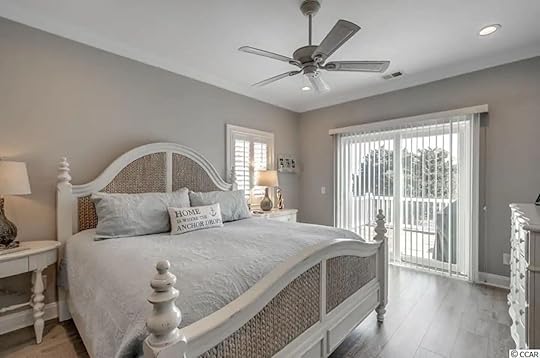 Photo: AirbnbSee more photosHomes of this magnitude right on the beach are nearly impossible to find at this price point, making this North Myrtle Beach Airbnb a great deal. Plenty of parking, plenty of lounge space, and ample access to both the beach and the town welcome you and a crew of up to eight with open arms. Take advantage of the patio and the spacious yard.
Photo: AirbnbSee more photosHomes of this magnitude right on the beach are nearly impossible to find at this price point, making this North Myrtle Beach Airbnb a great deal. Plenty of parking, plenty of lounge space, and ample access to both the beach and the town welcome you and a crew of up to eight with open arms. Take advantage of the patio and the spacious yard.
Eight guests, four bedrooms
Price: $201 per night
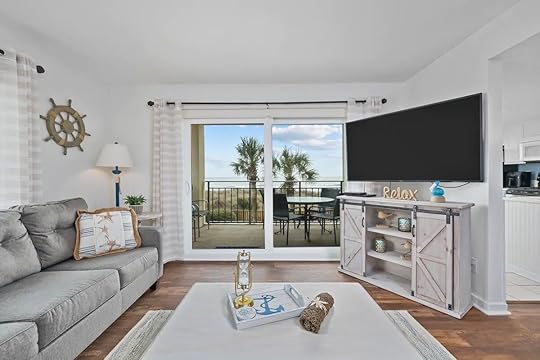 Photo: Airbnb
Photo: Airbnb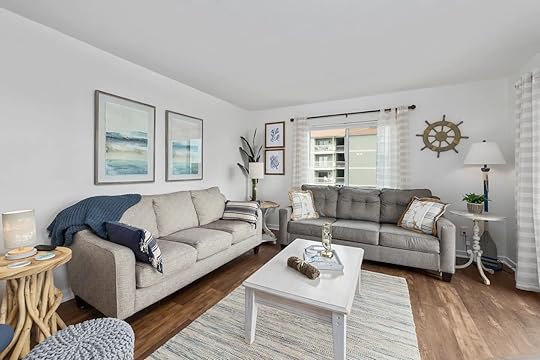 Photo: Airbnb
Photo: Airbnb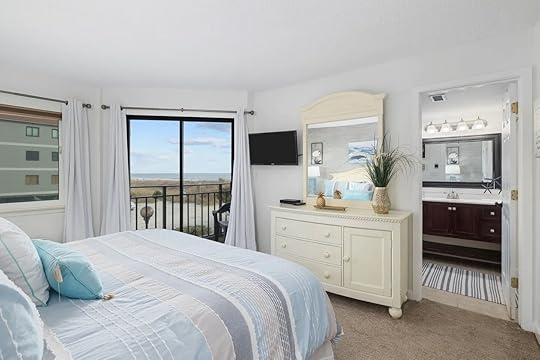 Photo: Airbnb
Photo: Airbnb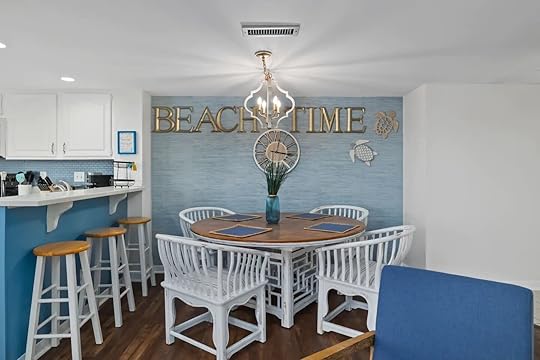 Photo: AirbnbSee more photosThe balcony of this Airbnb in North Myrtle Beach puts you right above the water, with incredible views of the sunrise unmatched anywhere else in the area. This place is literally built for looking at the sea — with large windows throughout and the ability to listed to the waves crash into the shore, you’ll have no problem relaxing. And when you do feel like venturing out, the sand is steps away.
Photo: AirbnbSee more photosThe balcony of this Airbnb in North Myrtle Beach puts you right above the water, with incredible views of the sunrise unmatched anywhere else in the area. This place is literally built for looking at the sea — with large windows throughout and the ability to listed to the waves crash into the shore, you’ll have no problem relaxing. And when you do feel like venturing out, the sand is steps away.
Ten guests, three bedrooms
Price: $350 per night
Myrtle Beach Airbnbs with pools
A swim is in order at these Myrtle Beach vacation rentals. If you’ve never gone from salt water to pool water, just know in advance that the experience is addictive.
Eclectic oceanfront luxury right on the water with pool and hot tub
 Photo: Airbnb
Photo: Airbnb Photo: Airbnb
Photo: Airbnb Photo: AirbnbSee more photosThis luxury escape is not your mother’s beach rental, not unless she was a very ambitious interior designer. Exploring the rooms in this eight-bedroom home will be an activity in and of itself. When you’re finished admiring the space, you can take a dip in your private pool or walk straight out onto the beach. It’s tucked away in a largely residential area of the Golden Mile neighborhood, so you can enjoy your privacy during the day and all the best dining and nightlife after dark. This space would be perfect for bachelorette/bachelor parties, or for a group of friends who like to step outside of the norm.
Photo: AirbnbSee more photosThis luxury escape is not your mother’s beach rental, not unless she was a very ambitious interior designer. Exploring the rooms in this eight-bedroom home will be an activity in and of itself. When you’re finished admiring the space, you can take a dip in your private pool or walk straight out onto the beach. It’s tucked away in a largely residential area of the Golden Mile neighborhood, so you can enjoy your privacy during the day and all the best dining and nightlife after dark. This space would be perfect for bachelorette/bachelor parties, or for a group of friends who like to step outside of the norm.
Sixteen guests, eight bedrooms
Price: $1,309 a night
 Photo: Airbnb
Photo: Airbnb Photo: Airbnb
Photo: Airbnb Photo: AirbnbSee more photosNot everyone who goes to the beach wants their space to be decked out in seashells and clam figurines. This condo would be best described as “beach chic.” Former guests have raved about the beauty of the space and the view, which you can admire by stepping out onto the 30-foot-long balcony. You’ll have direct beach access and the use of a pool that’s practically on the sand. The property is a short drive away from some truly beautiful golf courses, so make sure you book a tee time.
Photo: AirbnbSee more photosNot everyone who goes to the beach wants their space to be decked out in seashells and clam figurines. This condo would be best described as “beach chic.” Former guests have raved about the beauty of the space and the view, which you can admire by stepping out onto the 30-foot-long balcony. You’ll have direct beach access and the use of a pool that’s practically on the sand. The property is a short drive away from some truly beautiful golf courses, so make sure you book a tee time.
Fourteen guests, four bedrooms
Price: $365 a night
 Photo: Airbnb
Photo: Airbnb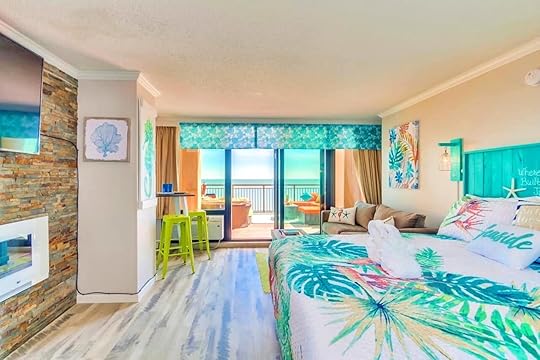 Photo: Airbnb
Photo: Airbnb Photo: AirbnbSee more photosWho says you need to go down to the beach to get a tan? With the amount of time you’ll be spending on this balcony, you won’t need to. This condo has a picturesque view and an equally beautiful deck to view it from. Inside you’ll be greeted by tropical decor in all shades of pink, blue, and green. In typical Myrtle Beach fashion, this rental is inside of a resort, so you’ll get to use all of the perks that come with that. If you’re craving an outing, two beautiful golf courses are within a five-minute drive.
Photo: AirbnbSee more photosWho says you need to go down to the beach to get a tan? With the amount of time you’ll be spending on this balcony, you won’t need to. This condo has a picturesque view and an equally beautiful deck to view it from. Inside you’ll be greeted by tropical decor in all shades of pink, blue, and green. In typical Myrtle Beach fashion, this rental is inside of a resort, so you’ll get to use all of the perks that come with that. If you’re craving an outing, two beautiful golf courses are within a five-minute drive.
Four guests, one bedroom
Price: $179 a night
South Myrtle Beach Airbnbs
Near the airport, South Myrtle Beach is where you want to be for convenience. The beaches are beautiful, and these Airbnbs put you right on them.
Amazing beach condo with ocean views
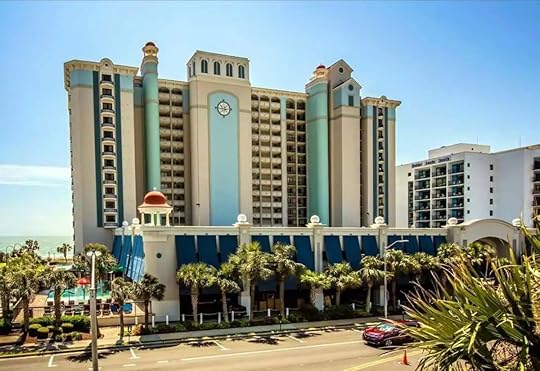 Photo: Airbnb
Photo: Airbnb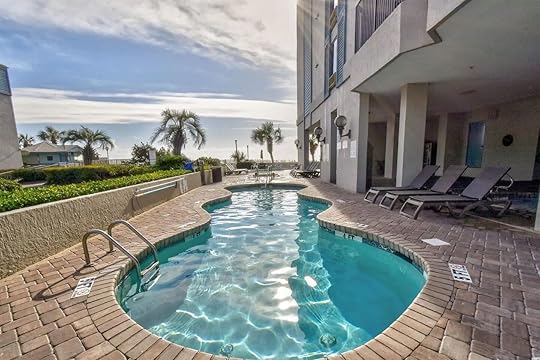 Photo: Airbnb
Photo: Airbnb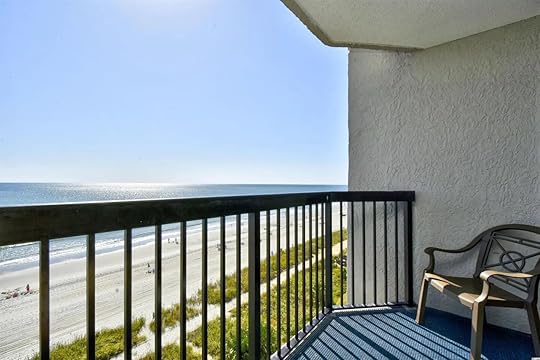 Photo: Airbnb
Photo: Airbnb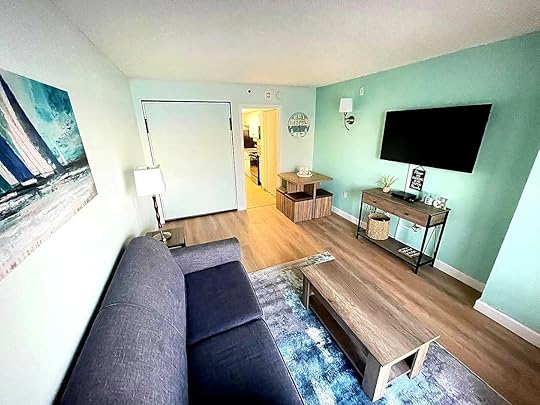 Photo: AirbnbSee more photosThis South Myrtle Beach Airbnb is akin to staying in a fancy Vegas hotel — should that hotel be located on the beach. You’ll be on the eighth floor of Compass Cove Resort, one of the area’s best, with oceanfront indoor and outdoor pools and all the amenities you’d expect at a world-class resort. Walk or transit everywhere, theres’s no need for a car, and the beach is right there.
Photo: AirbnbSee more photosThis South Myrtle Beach Airbnb is akin to staying in a fancy Vegas hotel — should that hotel be located on the beach. You’ll be on the eighth floor of Compass Cove Resort, one of the area’s best, with oceanfront indoor and outdoor pools and all the amenities you’d expect at a world-class resort. Walk or transit everywhere, theres’s no need for a car, and the beach is right there.
Eight guests, one bedroom
Price: $123 per night
Intracoastal Waterway fun property
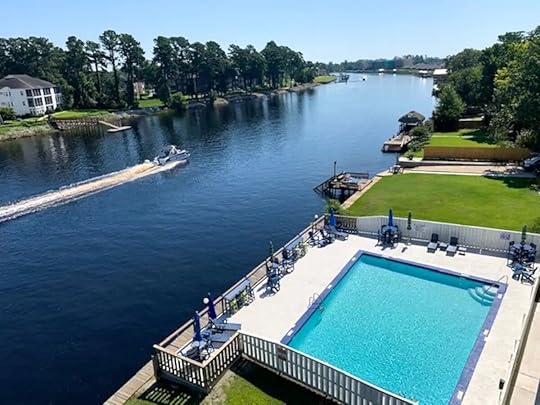 Photo: Airbnb
Photo: Airbnb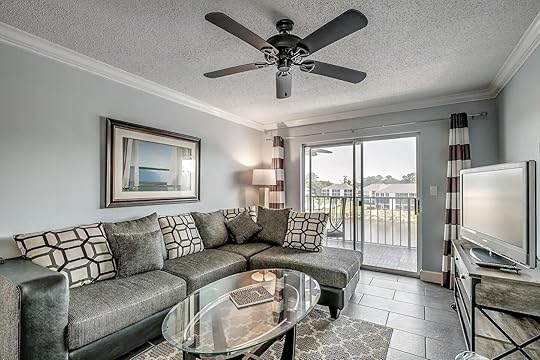 Photo: Airbnb
Photo: Airbnb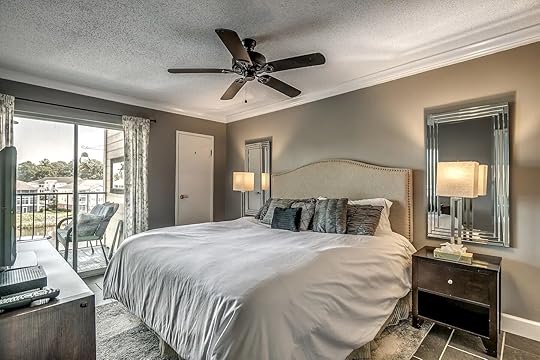 Photo: Airbnb
Photo: Airbnb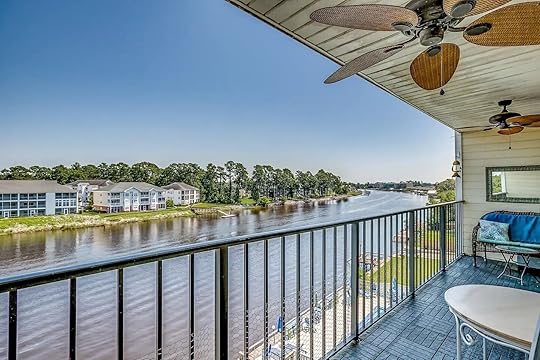 Photo: AirbnbSee more photosWhen the host encourages you to bring your own jetski to an Airbnb in Myrtle Beach (or rent one onsite), you know you’re in for a good time. Such is the case at this property in south Myrtle Beach, with a pool and easy access to the waterway. Get out on said jetski or on a boat (also rentable nearby) and take in the area from the water. This spot is easy to get to from the airport and offers great access to both town and the beach.
Photo: AirbnbSee more photosWhen the host encourages you to bring your own jetski to an Airbnb in Myrtle Beach (or rent one onsite), you know you’re in for a good time. Such is the case at this property in south Myrtle Beach, with a pool and easy access to the waterway. Get out on said jetski or on a boat (also rentable nearby) and take in the area from the water. This spot is easy to get to from the airport and offers great access to both town and the beach.
Four guests, two bedrooms
Price: $205 per night
Why sacrifice the amenities of a resort? With these Myrtle Beach Airbnbs you can enjoy the convenience and securities of booking a vacation rental while enjoying all the perks of a full-scale resort.
Beachfront condo within an oasis-like resort
 Photo: Airbnb
Photo: Airbnb Photo: Airbnb
Photo: Airbnb Photo: AirbnbSee more photosLocation, location, location. Where else could you and 11 other people stay directly on the beach with resort amenities for $30 each a night? This spacious condo overlooks the ocean from the eighteenth floor of the Paradise Resort, complete with beach access, pools, hot tubs, a lazy river, gym, tiki bar, and a Ben and Jerry’s. If by some miracle you run out of things to do on-site, you’re less than three miles away from the boardwalk and the Market Common for dining, shopping, and fun.
Photo: AirbnbSee more photosLocation, location, location. Where else could you and 11 other people stay directly on the beach with resort amenities for $30 each a night? This spacious condo overlooks the ocean from the eighteenth floor of the Paradise Resort, complete with beach access, pools, hot tubs, a lazy river, gym, tiki bar, and a Ben and Jerry’s. If by some miracle you run out of things to do on-site, you’re less than three miles away from the boardwalk and the Market Common for dining, shopping, and fun.
Twelve guests, three bedrooms
Price: $355 a night
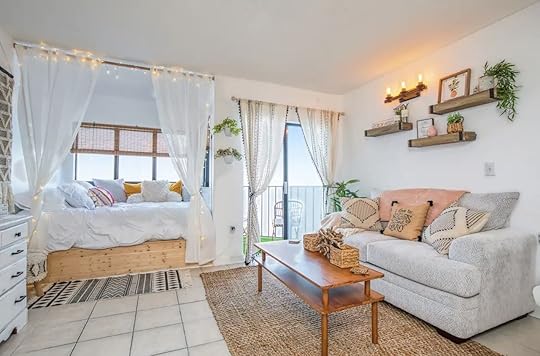 Photo: Airbnb
Photo: Airbnb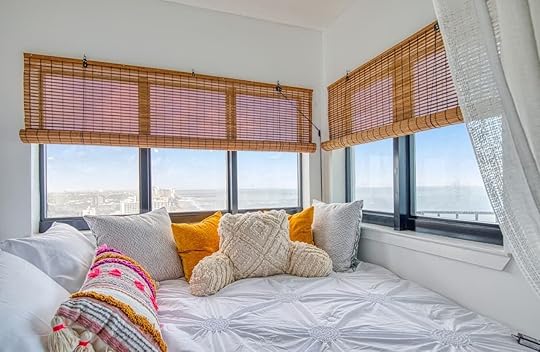 Photo: Airbnb
Photo: Airbnb Photo: AirbnbSee more photosThis adorable studio makes up in character what it lacks in size. It has a light and airy energy, from the curtains above the bed to the granite countertops. It looks more like the apartment of your coolest friend than a vacation rental. The studio is situated on the 21st floor of the Palace Resort. Not only will you have great beach access, but you’ll be able to take advantage of the resort’s amenities, including the pool, bar, restaurant, arcade, and putt-putt course. Whether you go alone or with a friend, you’ll probably want to move in.
Photo: AirbnbSee more photosThis adorable studio makes up in character what it lacks in size. It has a light and airy energy, from the curtains above the bed to the granite countertops. It looks more like the apartment of your coolest friend than a vacation rental. The studio is situated on the 21st floor of the Palace Resort. Not only will you have great beach access, but you’ll be able to take advantage of the resort’s amenities, including the pool, bar, restaurant, arcade, and putt-putt course. Whether you go alone or with a friend, you’ll probably want to move in.
Two guests, one bedroom
Price: $191 a night
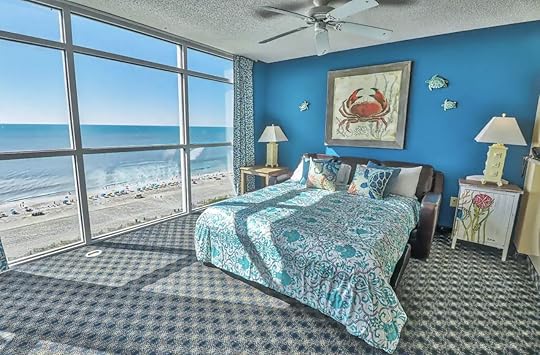 Photo: Airbnb
Photo: Airbnb Photo: Airbnb
Photo: Airbnb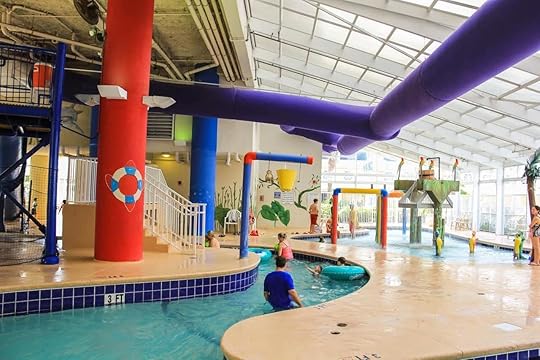 Photo: AirbnbSee more photosIf you’re the kind of person who would like to roll out of bed and step straight into a waterpark, you’re going to love this condo. Located within the Dunes Village Resort, you’ll have access to all the amenities and activities the resort provides. This would be the ideal rental for a family with one or more remote workers. With a supervised kid’s club, the little ones could have a full day of activities while parents take meetings and calls, all while looking out at one of the best views you could imagine.
Photo: AirbnbSee more photosIf you’re the kind of person who would like to roll out of bed and step straight into a waterpark, you’re going to love this condo. Located within the Dunes Village Resort, you’ll have access to all the amenities and activities the resort provides. This would be the ideal rental for a family with one or more remote workers. With a supervised kid’s club, the little ones could have a full day of activities while parents take meetings and calls, all while looking out at one of the best views you could imagine.
Ten guests, two bedrooms
Price: $555 a night
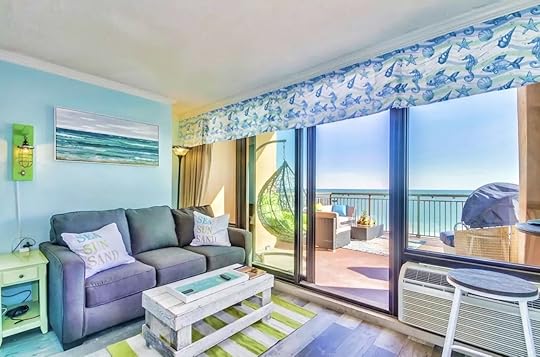 Photo: Airbnb
Photo: Airbnb Photo: Airbnb
Photo: Airbnb Photo: AirbnbSee more photosThis condo is where coastal decor meets whimsy. While it may look like a somewhat normal beach theme, there are a few details that make it entirely unique. The king bed is lined with colorful LED lights, a psychedelic electric fireplace is mounted to the wall, and you can read a book in the swing on the balcony. The Caravelle Resort offers amenities and activities to guests of all ages. If you’re looking to go off-campus, multiple well-loved restaurants are within walking distance.
Photo: AirbnbSee more photosThis condo is where coastal decor meets whimsy. While it may look like a somewhat normal beach theme, there are a few details that make it entirely unique. The king bed is lined with colorful LED lights, a psychedelic electric fireplace is mounted to the wall, and you can read a book in the swing on the balcony. The Caravelle Resort offers amenities and activities to guests of all ages. If you’re looking to go off-campus, multiple well-loved restaurants are within walking distance.
Four guests, one bedroom
Price: $182 a night
Myrtle Beach Airbnbs for groups
When visiting Myrtle Beach with the entire crew, plenty of space is in order. These Airbnbs have enough room for the entire family.
Brand new, centrally-located four-bedroom Airbnb in Myrtle Beach
 Photo: Airbnb
Photo: Airbnb Photo: Airbnb
Photo: Airbnb Photo: AirbnbSee more photosThis brand new home is situated in a quaint neighborhood where the streets are lined with brightly colored family getaways. If you don’t mind stepping away from the beachfront for a lower price, this space will suit you and your family perfectly. With a kitchen prepared for cooking meals of all sizes and a flat-screen television in every bedroom, it’s an ideal landing spot after a day at the beach. It’s also a great launching spot for a night on the town, with the boardwalk and the Broadway at the Beach shopping center just minutes down the road.
Photo: AirbnbSee more photosThis brand new home is situated in a quaint neighborhood where the streets are lined with brightly colored family getaways. If you don’t mind stepping away from the beachfront for a lower price, this space will suit you and your family perfectly. With a kitchen prepared for cooking meals of all sizes and a flat-screen television in every bedroom, it’s an ideal landing spot after a day at the beach. It’s also a great launching spot for a night on the town, with the boardwalk and the Broadway at the Beach shopping center just minutes down the road.
Eleven guests, four bedrooms
Price: $443 a night
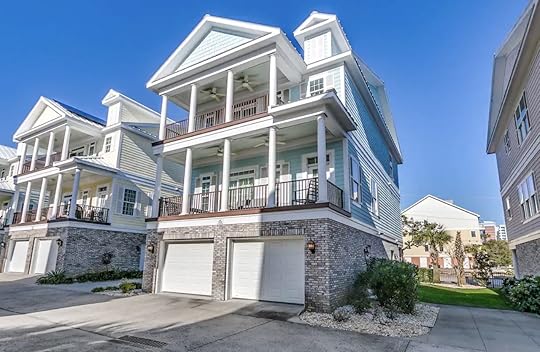 Photo: Airbnb
Photo: Airbnb Photo: Airbnb
Photo: Airbnb Photo: AirbnbSee more photosThe Golden Mile is the most sought-after neighborhood in Myrtle Beach. It’s located right in the middle of the best shopping, dining, and nightlife, and as a bonus, it’s a two-minute walk to the beach. This three-story home is tastefully decorated, has plenty of private sleeping areas, and even has its own elevator. With five bathrooms and plenty of room for cars in the driveway, it’s the perfect place for a big group of friends to meet up and have an unforgettable time.
Photo: AirbnbSee more photosThe Golden Mile is the most sought-after neighborhood in Myrtle Beach. It’s located right in the middle of the best shopping, dining, and nightlife, and as a bonus, it’s a two-minute walk to the beach. This three-story home is tastefully decorated, has plenty of private sleeping areas, and even has its own elevator. With five bathrooms and plenty of room for cars in the driveway, it’s the perfect place for a big group of friends to meet up and have an unforgettable time.
Sixteen guests, five bedrooms
Price: $470 a night
 Photo: Airbnb
Photo: Airbnb Photo: Airbnb
Photo: Airbnb Photo: AirbnbSee more photosThis is the kind of beach house that you’d see in a movie. With classic decor, luxurious amenities, and stunning outdoor space, this rental will probably make you feel like a king. If the pillared bathtub wasn’t enough, the pool and in-ground hot tub send it over the top. It’s located in the upscale Long Bay Estates neighborhood. This area borders the Myrtle Beach State Park and is just south of the Market Common which is known for high-end shopping and dining. The price may seem steep, but when you consider how many people you can fit, it’s perfectly reasonable.
Photo: AirbnbSee more photosThis is the kind of beach house that you’d see in a movie. With classic decor, luxurious amenities, and stunning outdoor space, this rental will probably make you feel like a king. If the pillared bathtub wasn’t enough, the pool and in-ground hot tub send it over the top. It’s located in the upscale Long Bay Estates neighborhood. This area borders the Myrtle Beach State Park and is just south of the Market Common which is known for high-end shopping and dining. The price may seem steep, but when you consider how many people you can fit, it’s perfectly reasonable.
Sixteen guests, six bedrooms
Price: $1,434 a night
Pet-friendly Myrtle Beach Airbnbs
Travel is better with pets, this is a well-documented fact. These pet-friendly Airbnbs in Myrtle Beach allow you to bring the pup along.
Kelsey’s Cottage
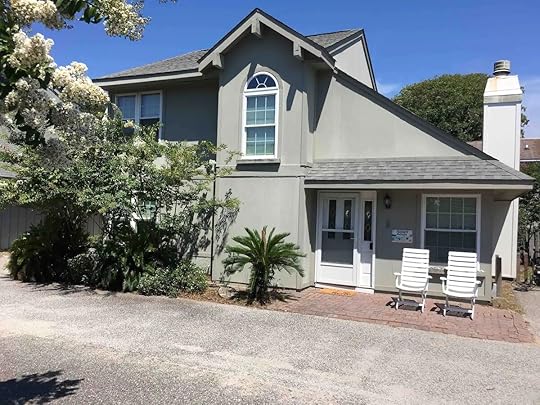 Photo: Airbnb
Photo: Airbnb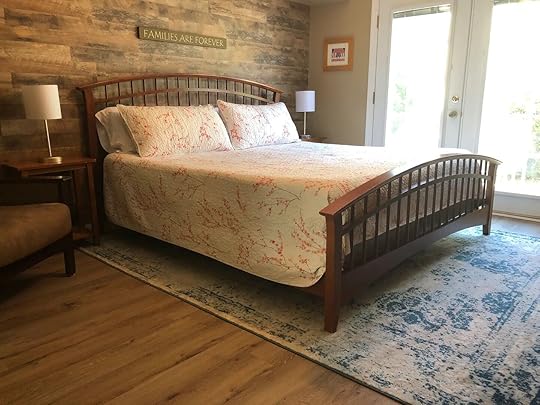 Photo: Airbnb
Photo: Airbnb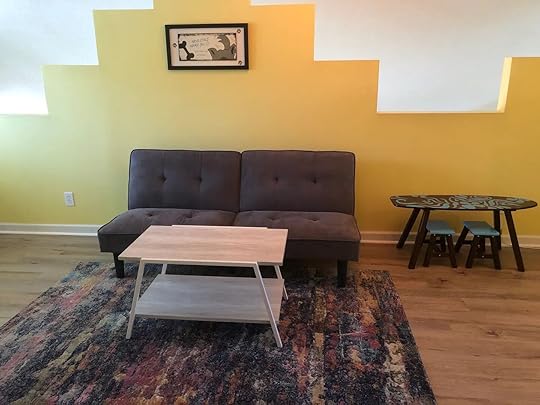 Photo: Airbnb
Photo: Airbnb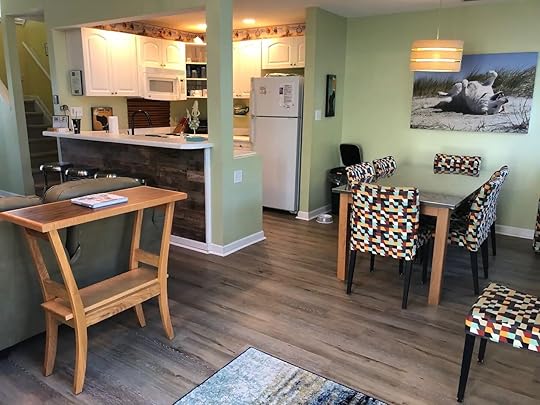 Photo: AirbnbSee more photosPet-friendly Airbnbs in Myrtle Beach are hard to come by, but this one stands out because it doesn’t charge an extra fee. This family-friendly and pet friendly property in North Myrtle Beach rents to those 25 and older, and is perfectly comfortable for up to eight guests. It’s an entire home with a well-decked kitchen, comfortable bedrooms and living spaces, and a quiet patio. The town’s Windy Beach section is a great place to escape the madness of a popular tourist destination, and there’s no better place to do so than here.
Photo: AirbnbSee more photosPet-friendly Airbnbs in Myrtle Beach are hard to come by, but this one stands out because it doesn’t charge an extra fee. This family-friendly and pet friendly property in North Myrtle Beach rents to those 25 and older, and is perfectly comfortable for up to eight guests. It’s an entire home with a well-decked kitchen, comfortable bedrooms and living spaces, and a quiet patio. The town’s Windy Beach section is a great place to escape the madness of a popular tourist destination, and there’s no better place to do so than here.
Eight guests, four bedrooms
Price: $207 per night
According to EZ Home Search and Neighborhood Scout, Pine Lakes, Carolina Forest, The Dunes, Seagate Village, and Ocean Forest Villas / Pan American Tower are the most expensive neighborhoods in Myrtle Beach.
Is it better to stay in Myrtle Beach or North Myrtle Beach?
According to Seaside MB, the choice between Myrtle Beach and North Myrtle Beach depends on personal preferences. Myrtle Beach is generally considered more crowded and lively, while North Myrtle Beach offers a quieter atmosphere, often preferred by families.
What time of year is Myrtle Beach cheapest?
Generally, the off-season months of late fall and winter tend to offer lower rates and greater availability of accommodations in Myrtle Beach. However, prices can also be influenced by specific events or holidays, so it’s best to check with specific hotels or travel websites for the most up-to-date pricing information.
What is the most walkable area of Myrtle Beach?
Myrtle Beach has many walkable areas, like Myrtle Beach Boardwalk Entertainment District, Murrells Inlet Marshwalk, Huntington Beach State Park, and Antigua. These are just a few examples of walkable areas in Myrtle Beach. It’s important to note that the walkability of an area can also depend on personal preferences and specific interests. Exploring different neighborhoods and attractions in Myrtle Beach can provide a better understanding of the walkable areas that align with your preferences. 
Matador Network's Blog
- Matador Network's profile
- 6 followers



